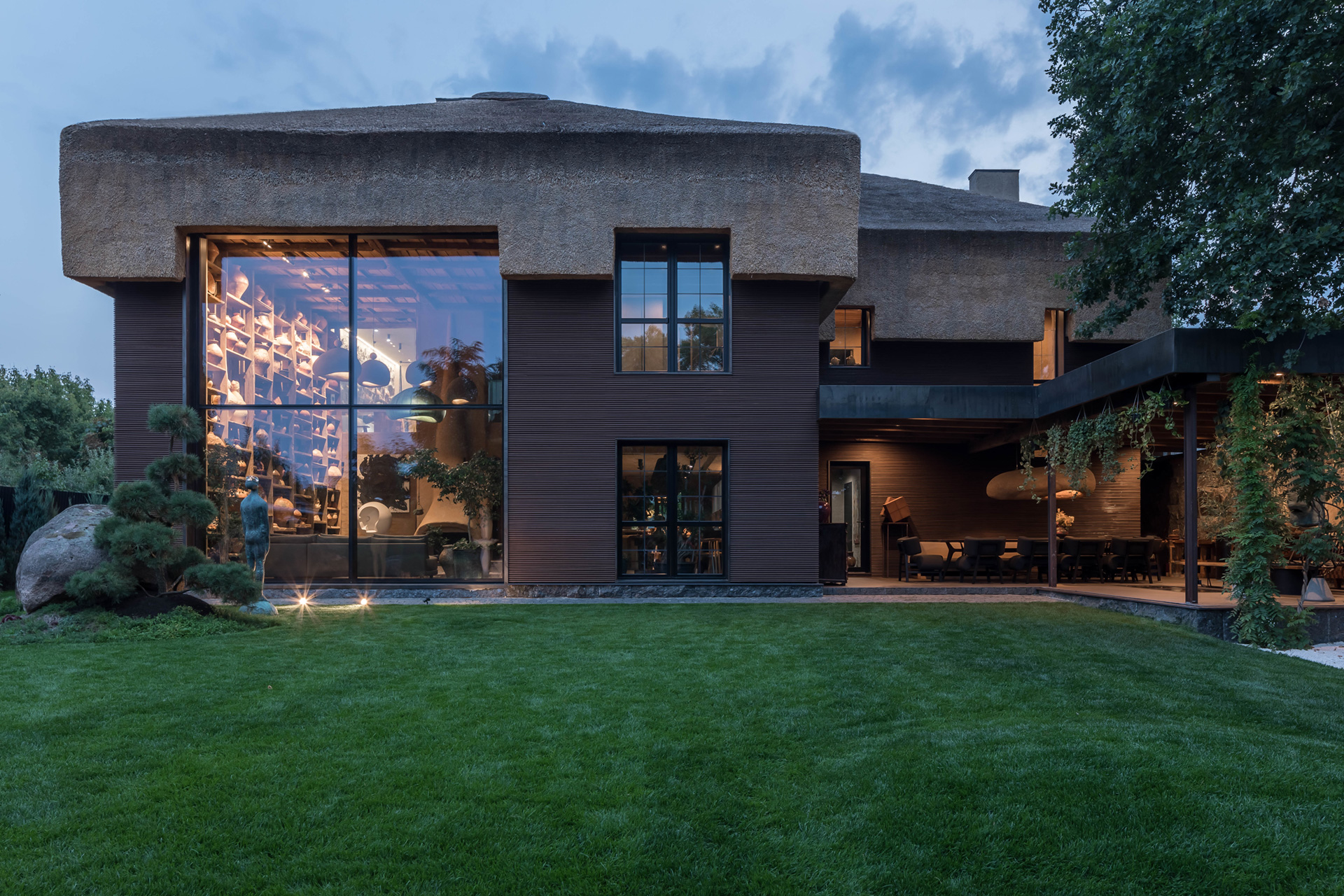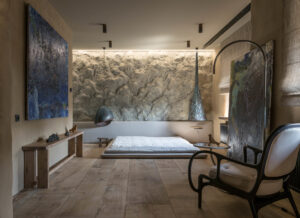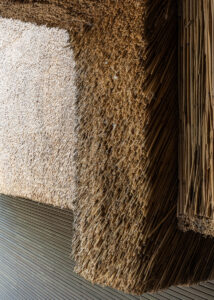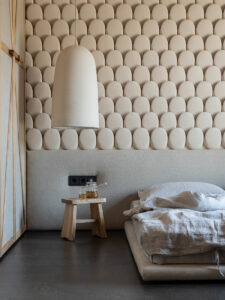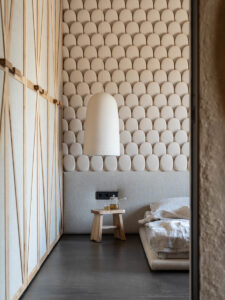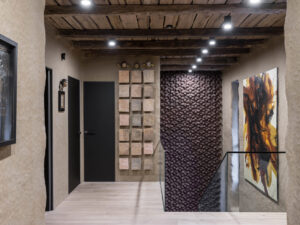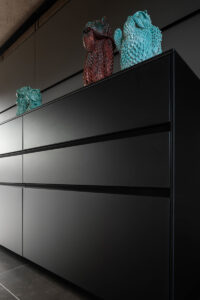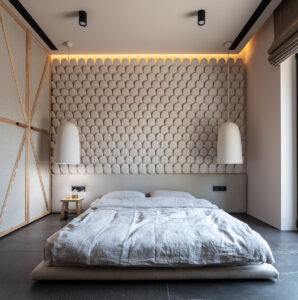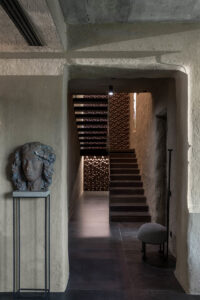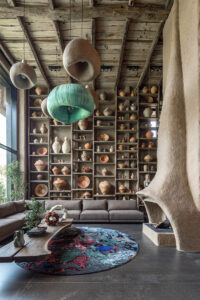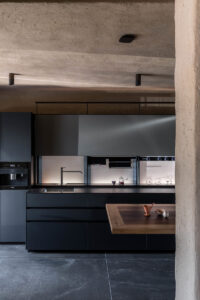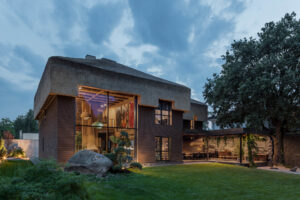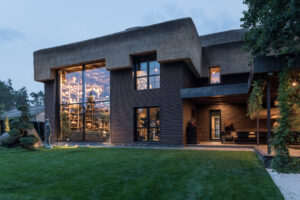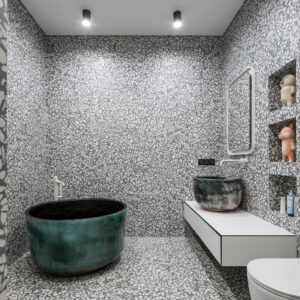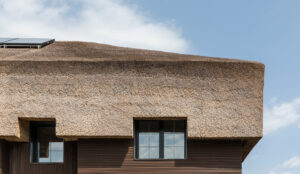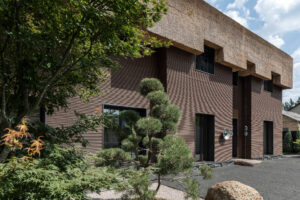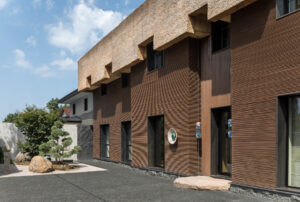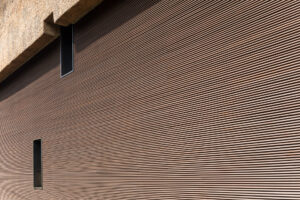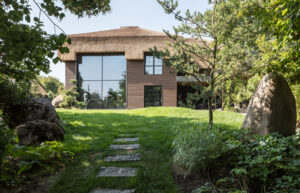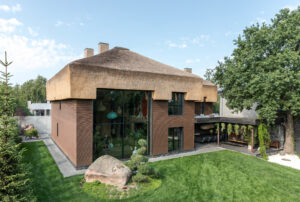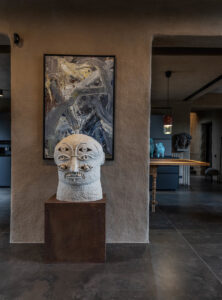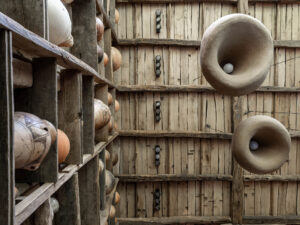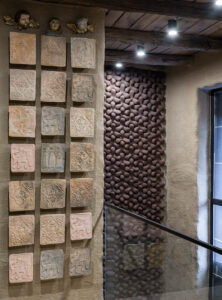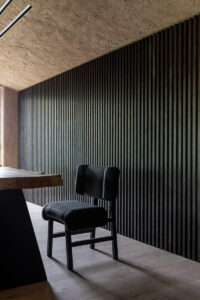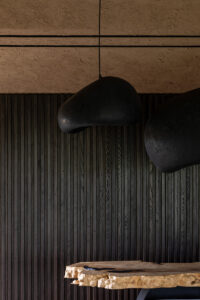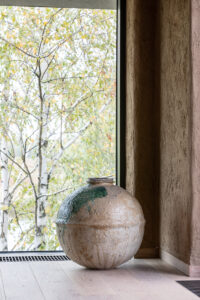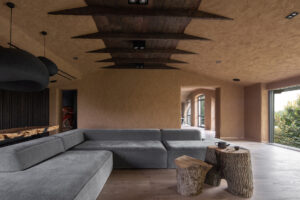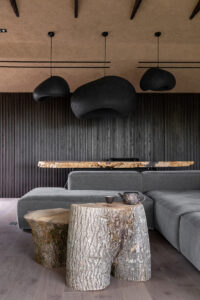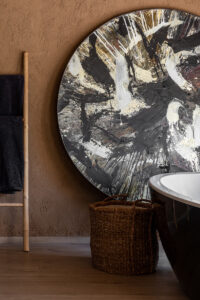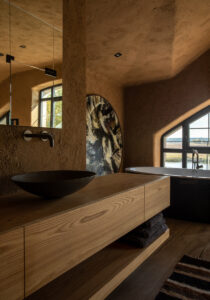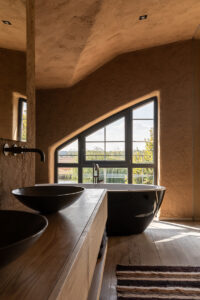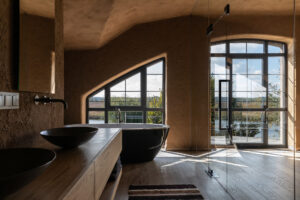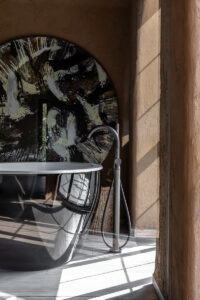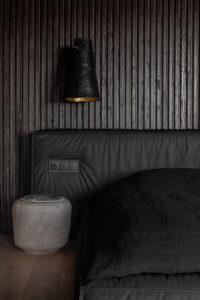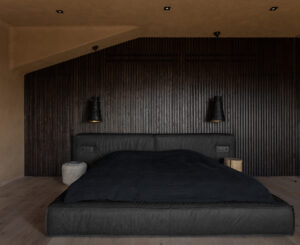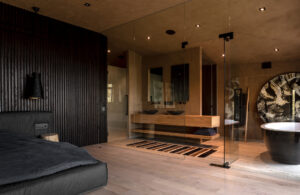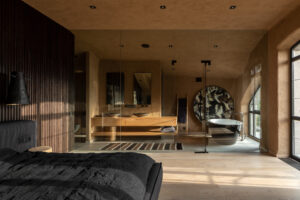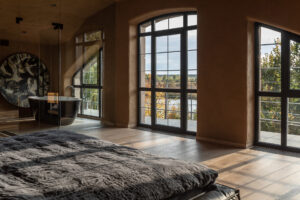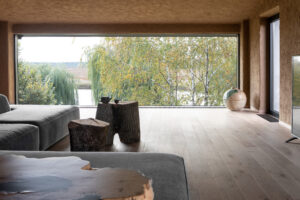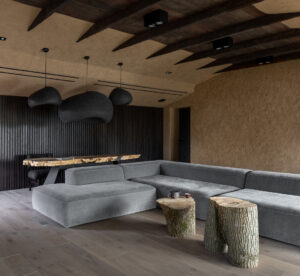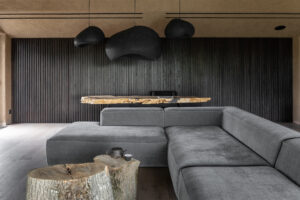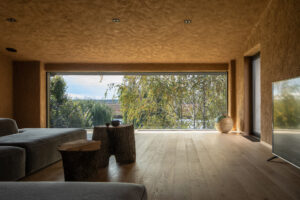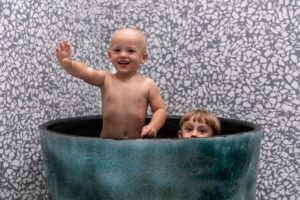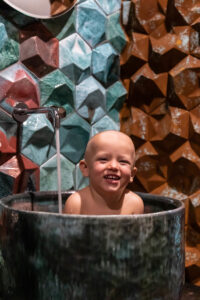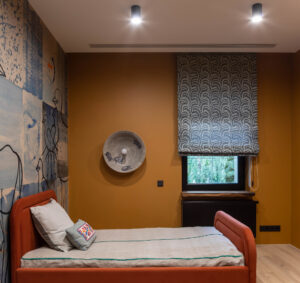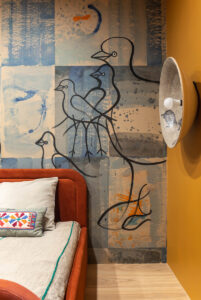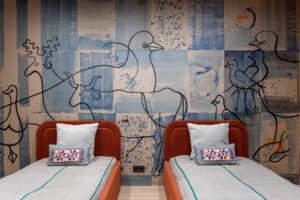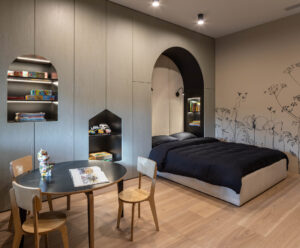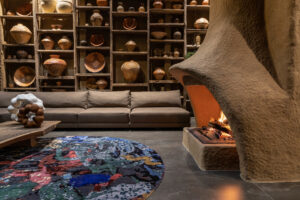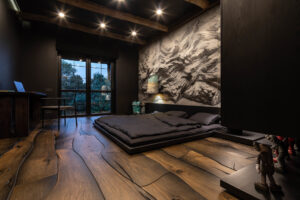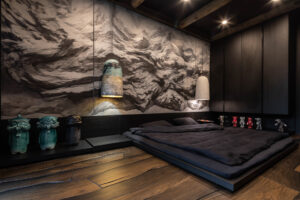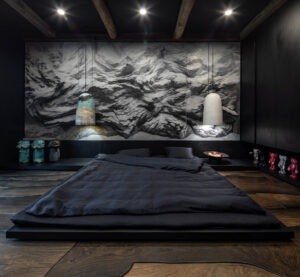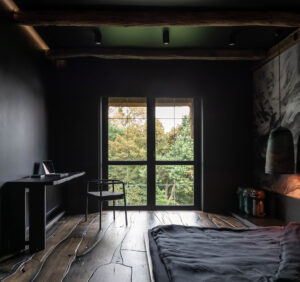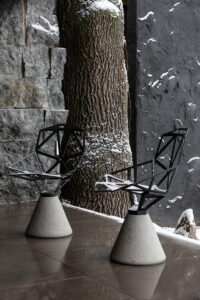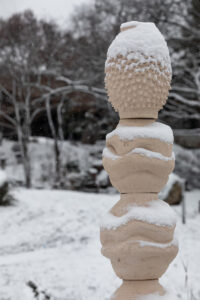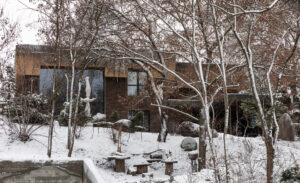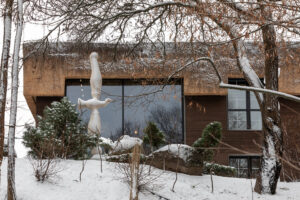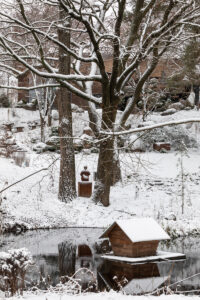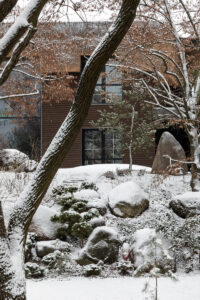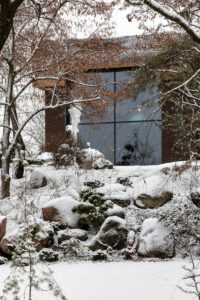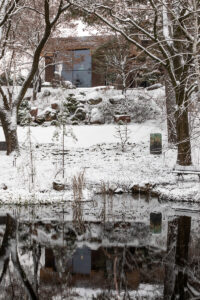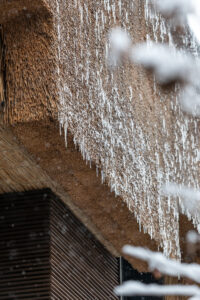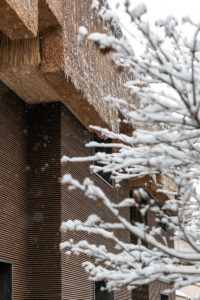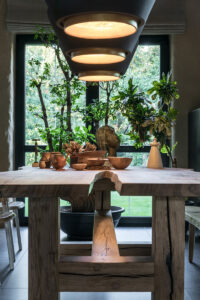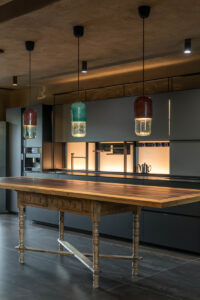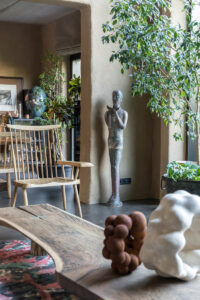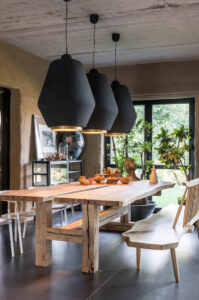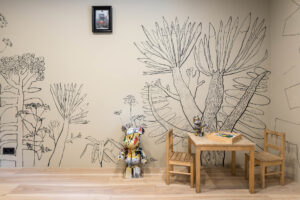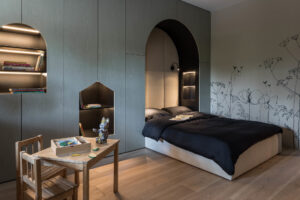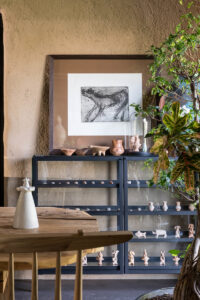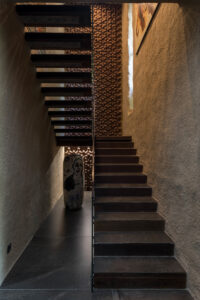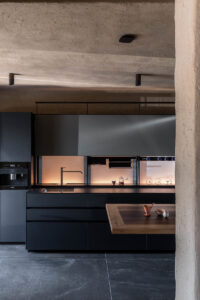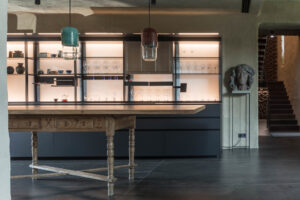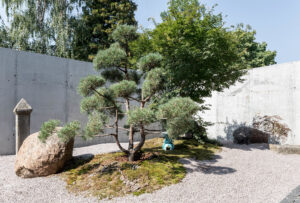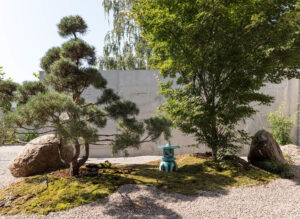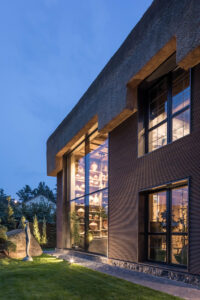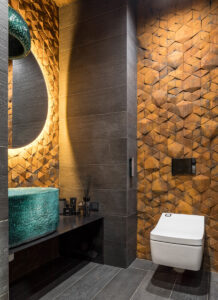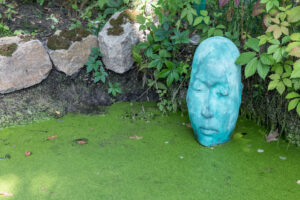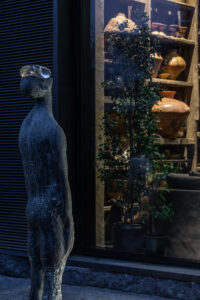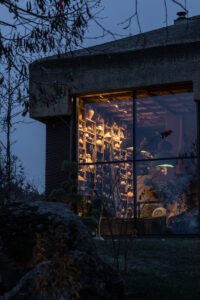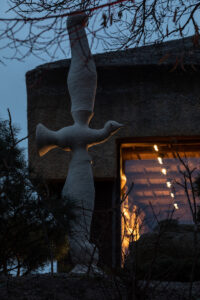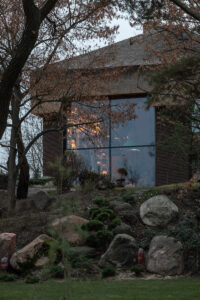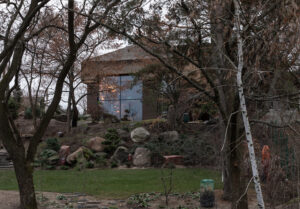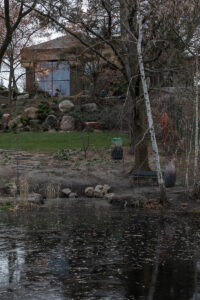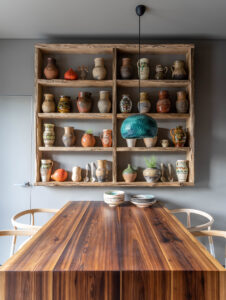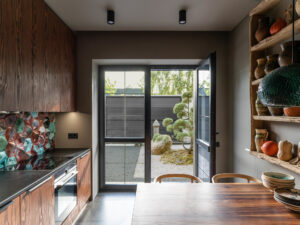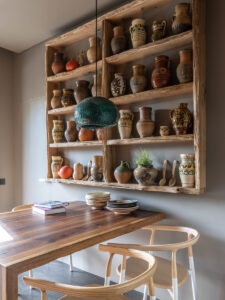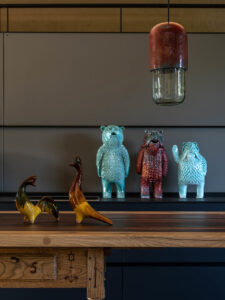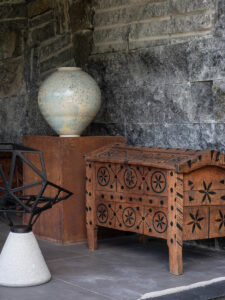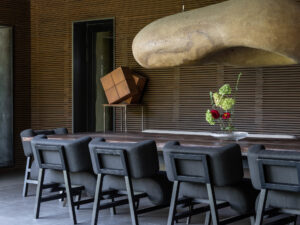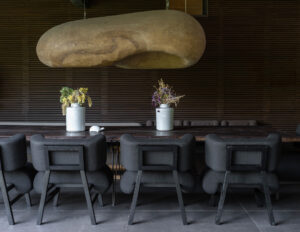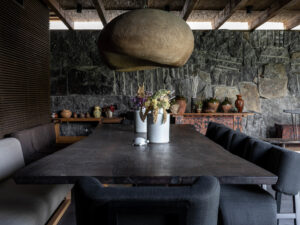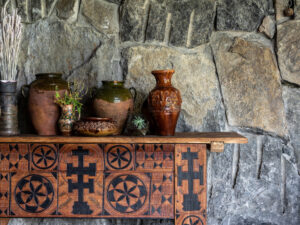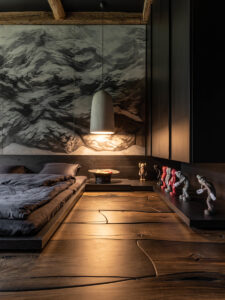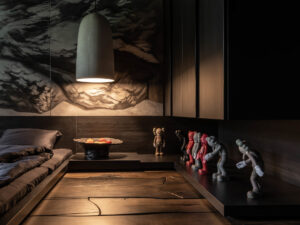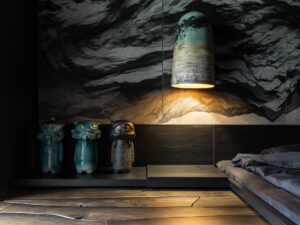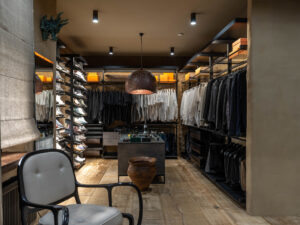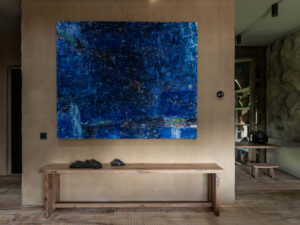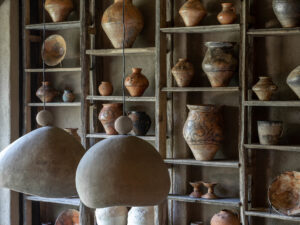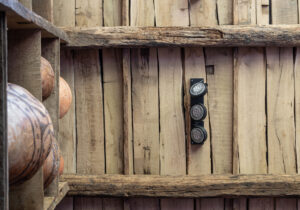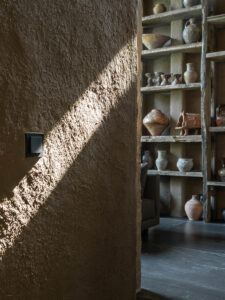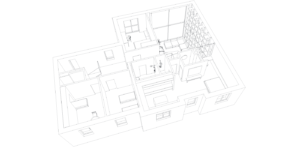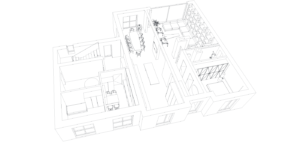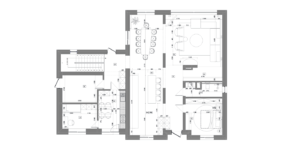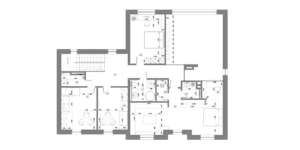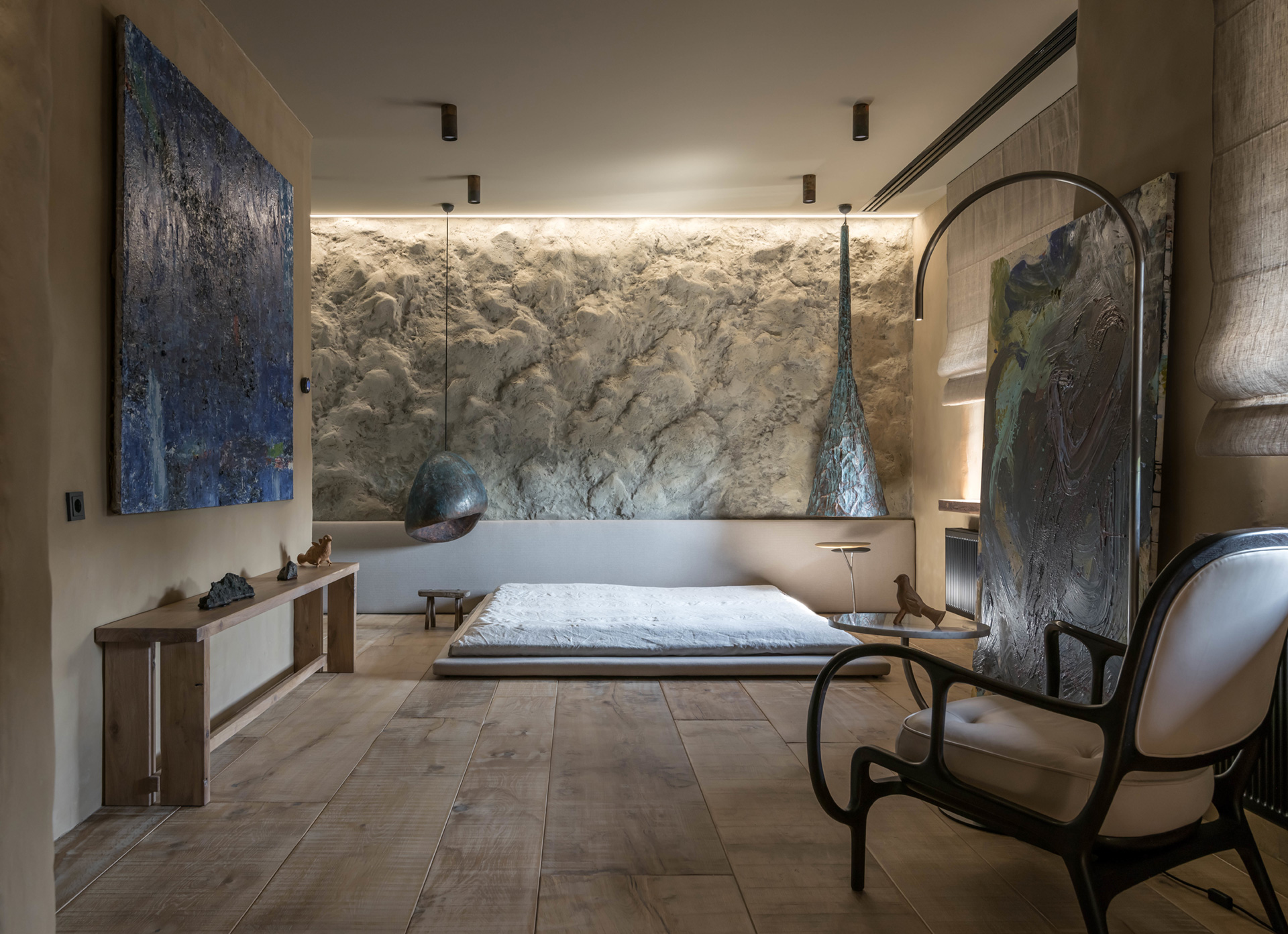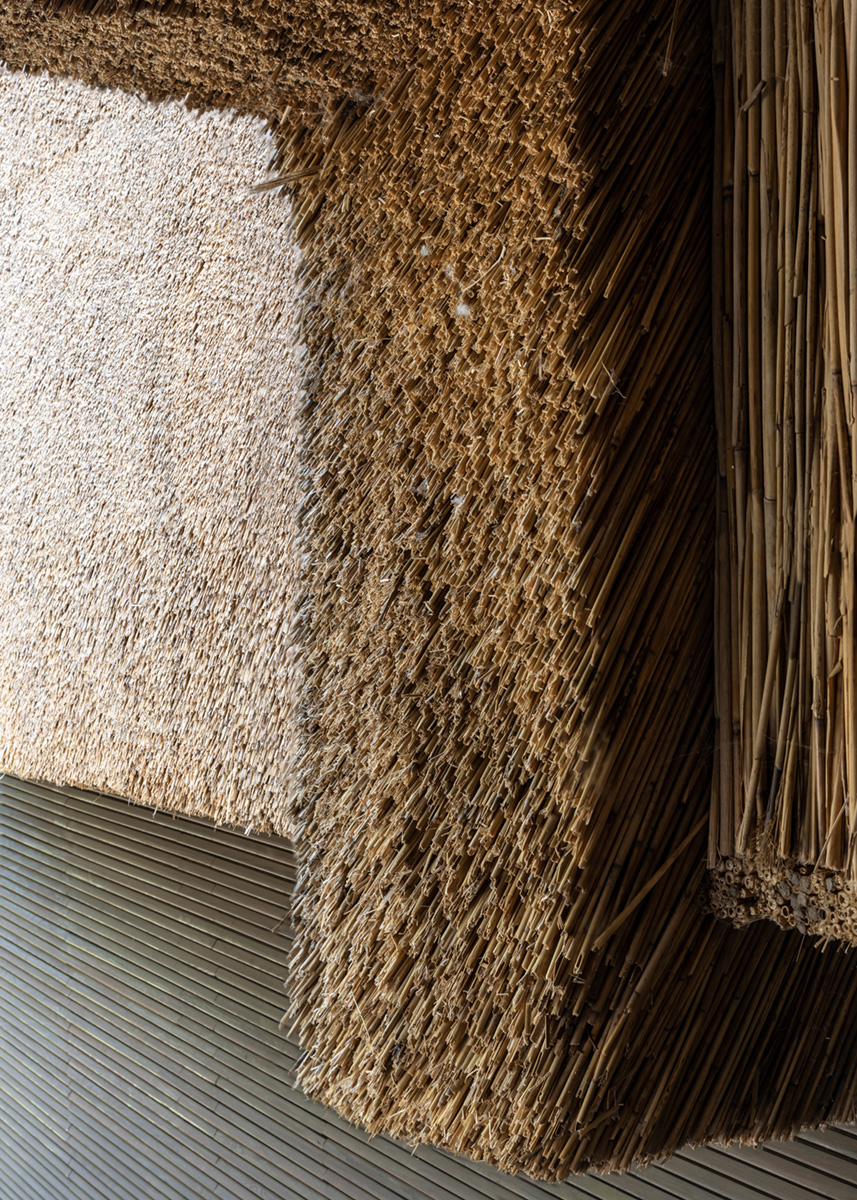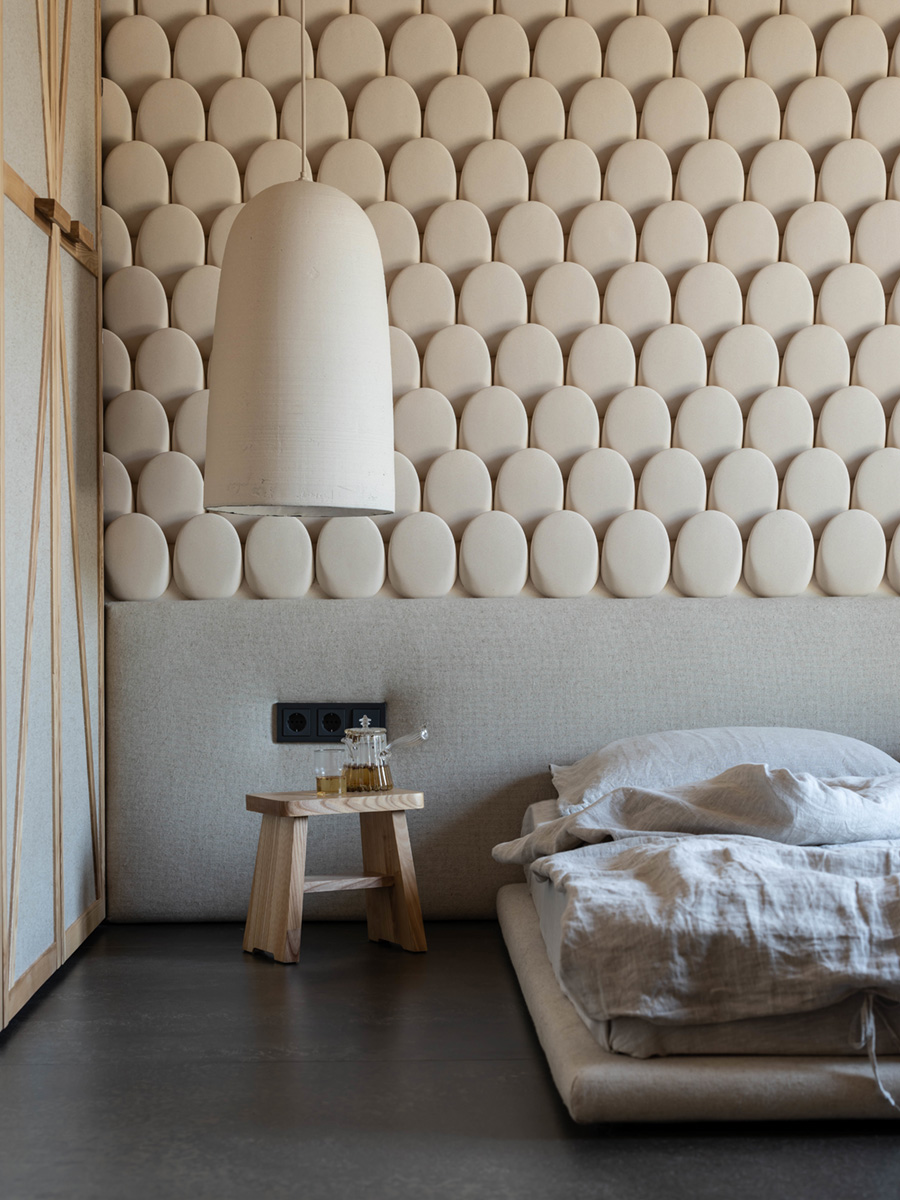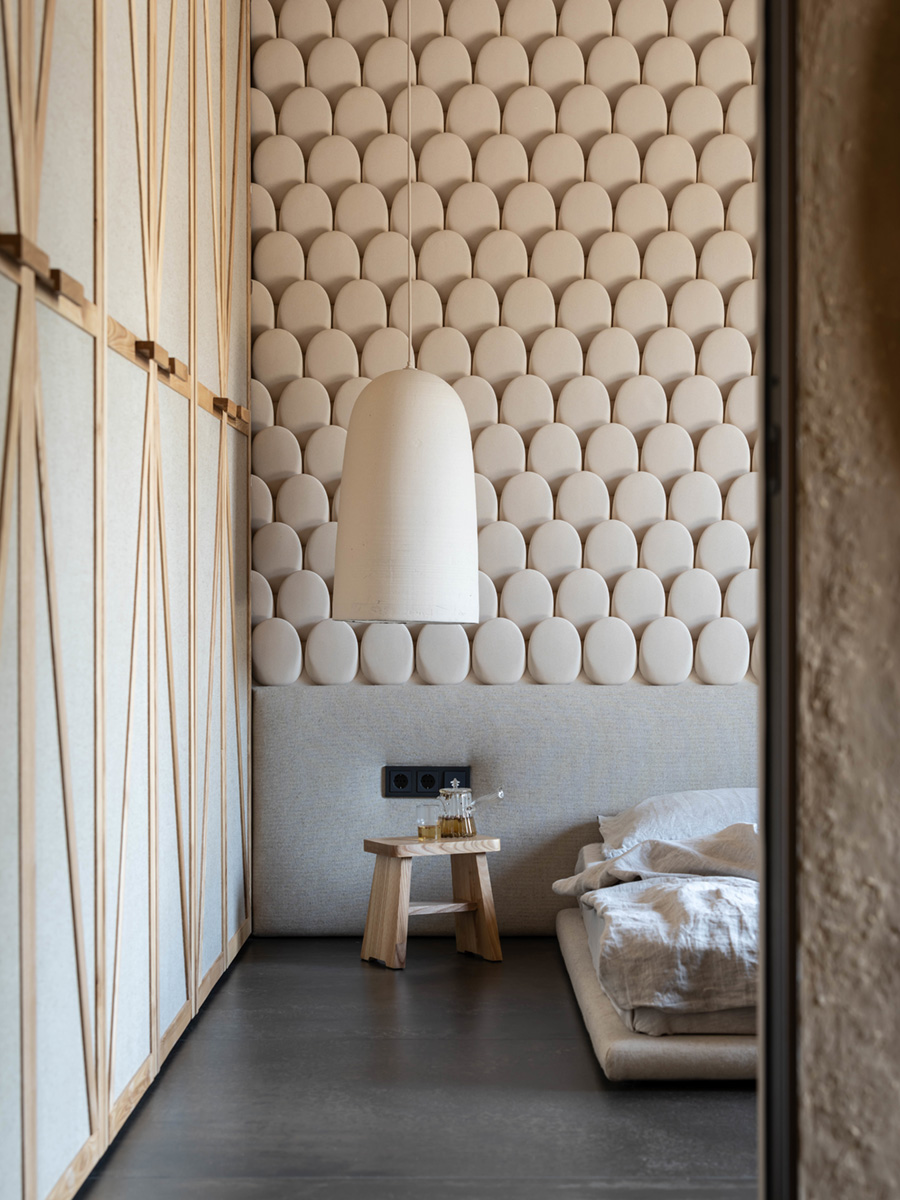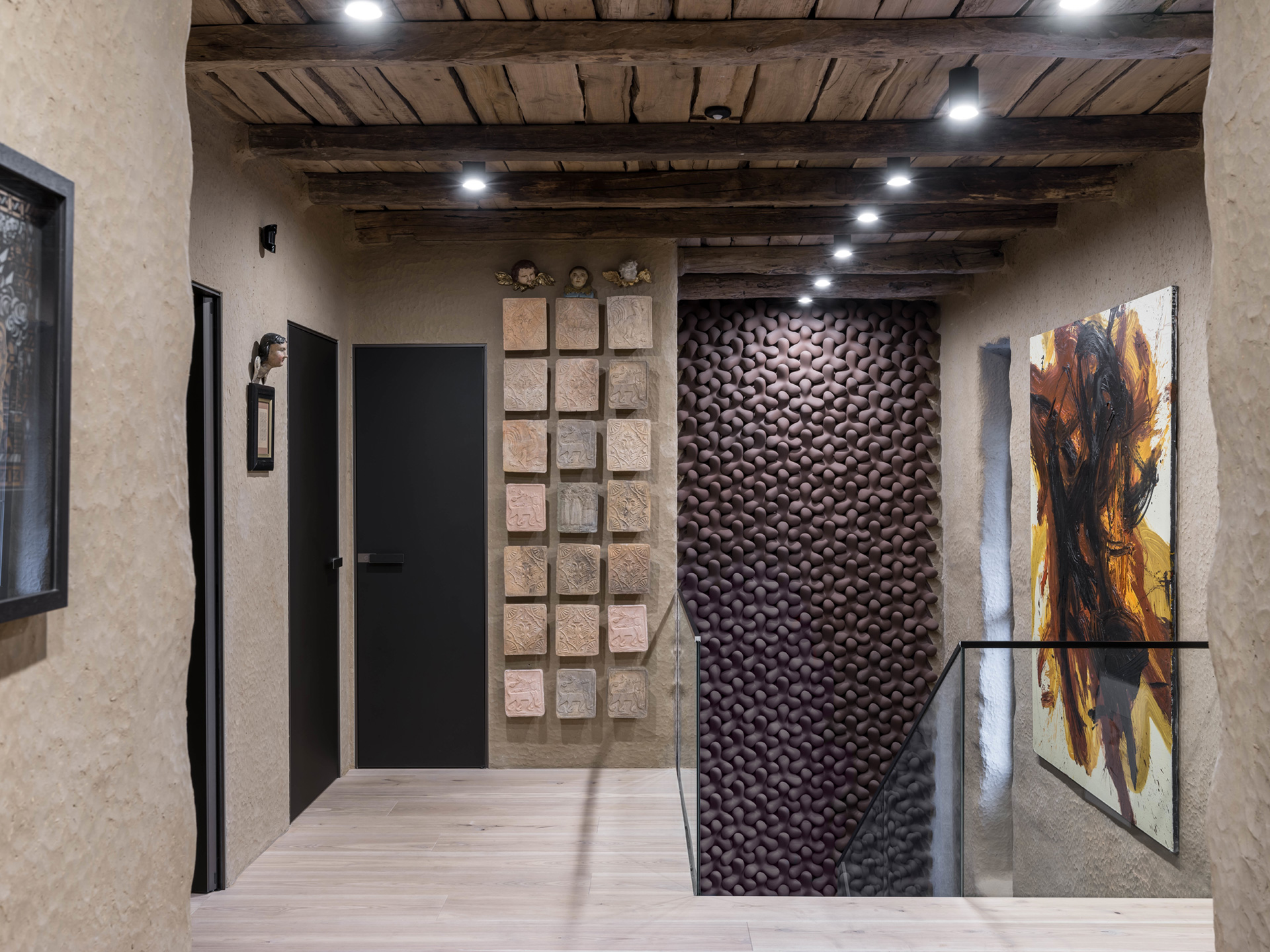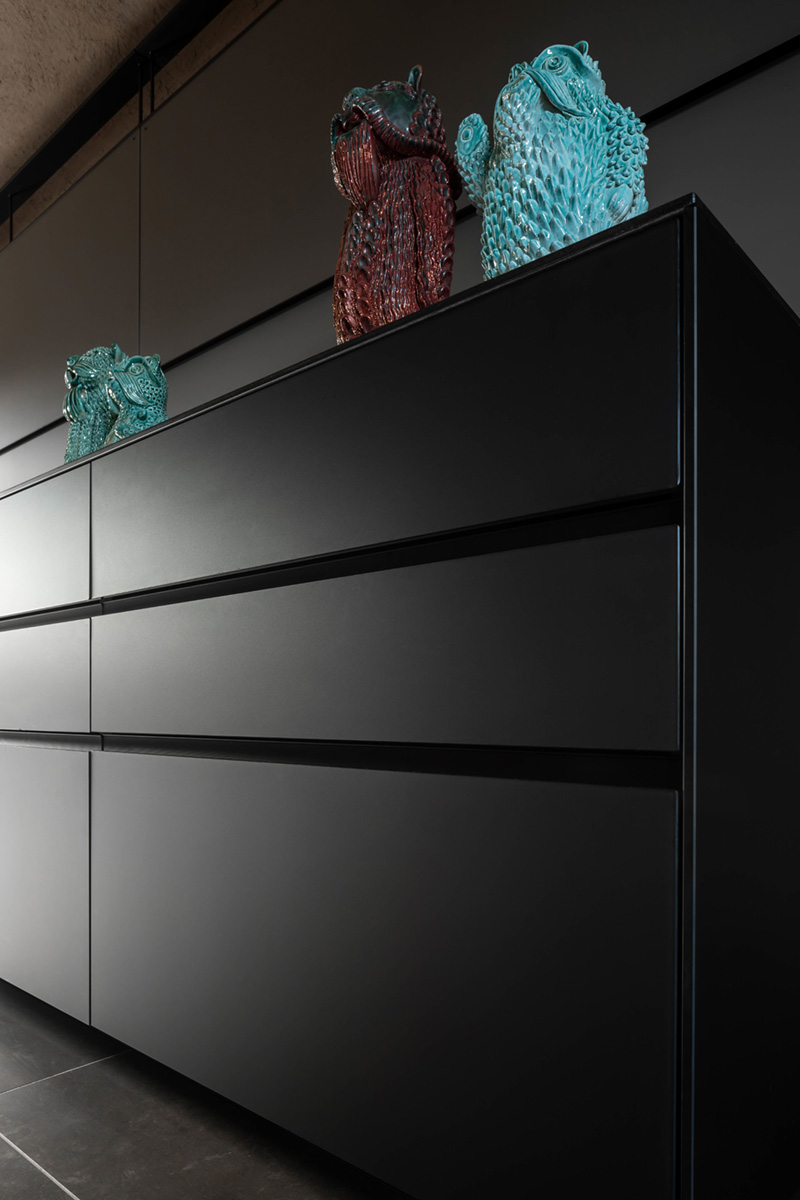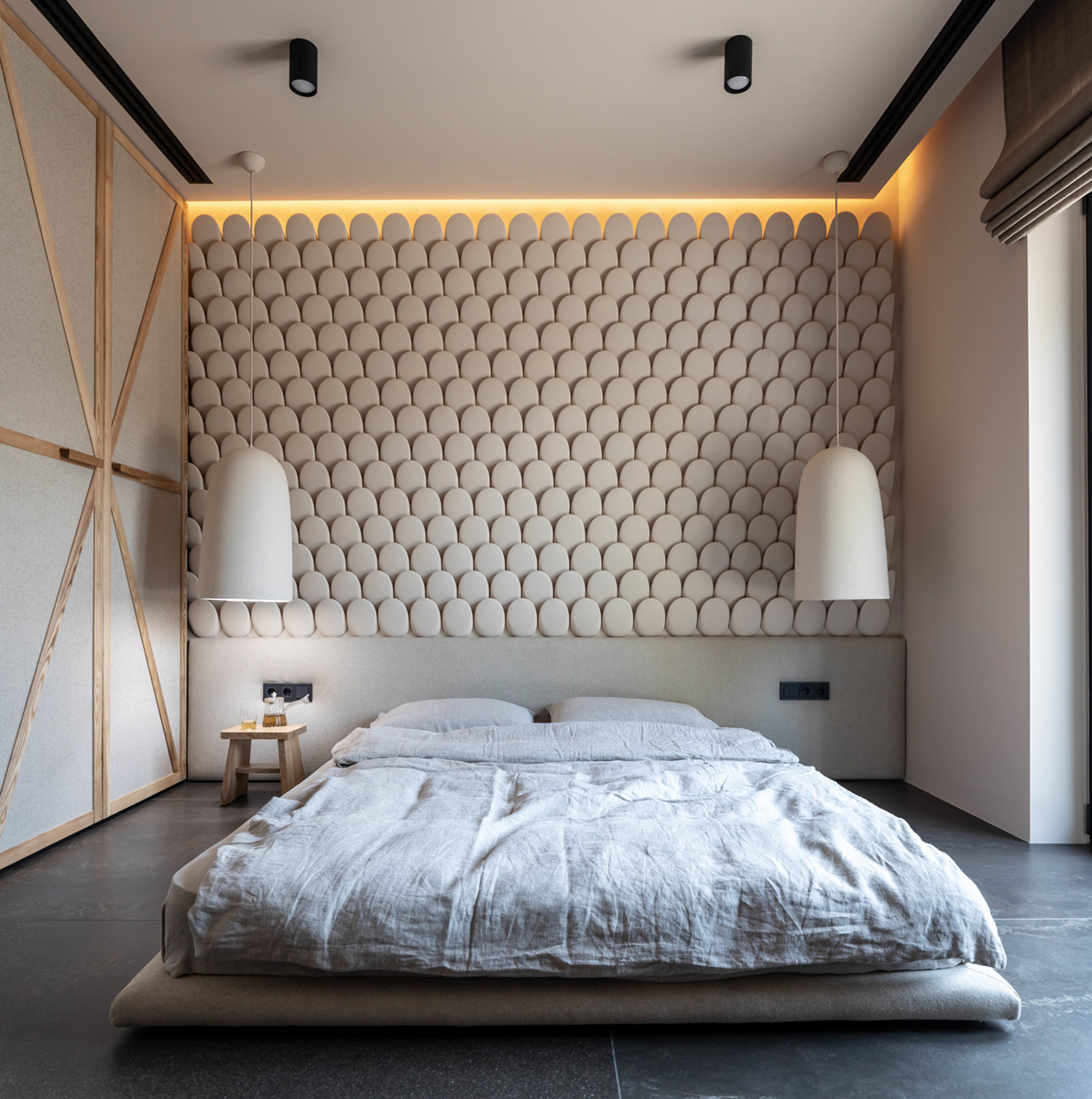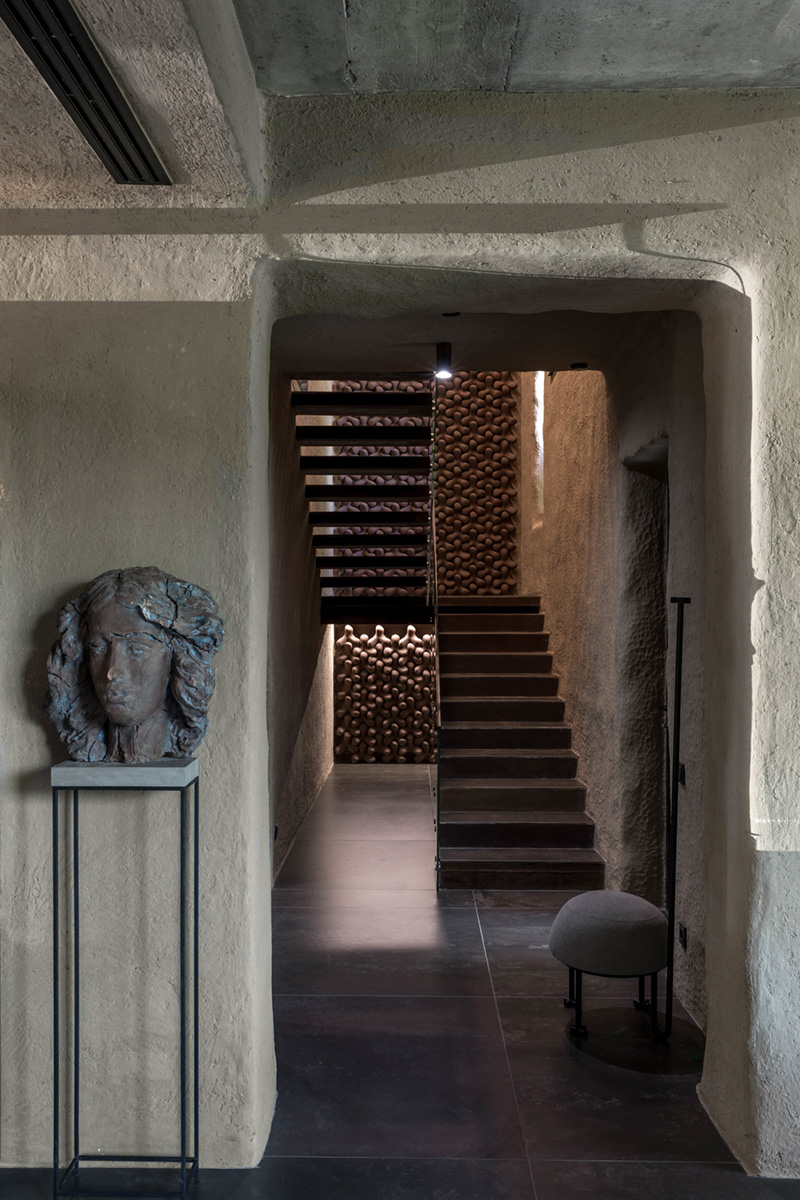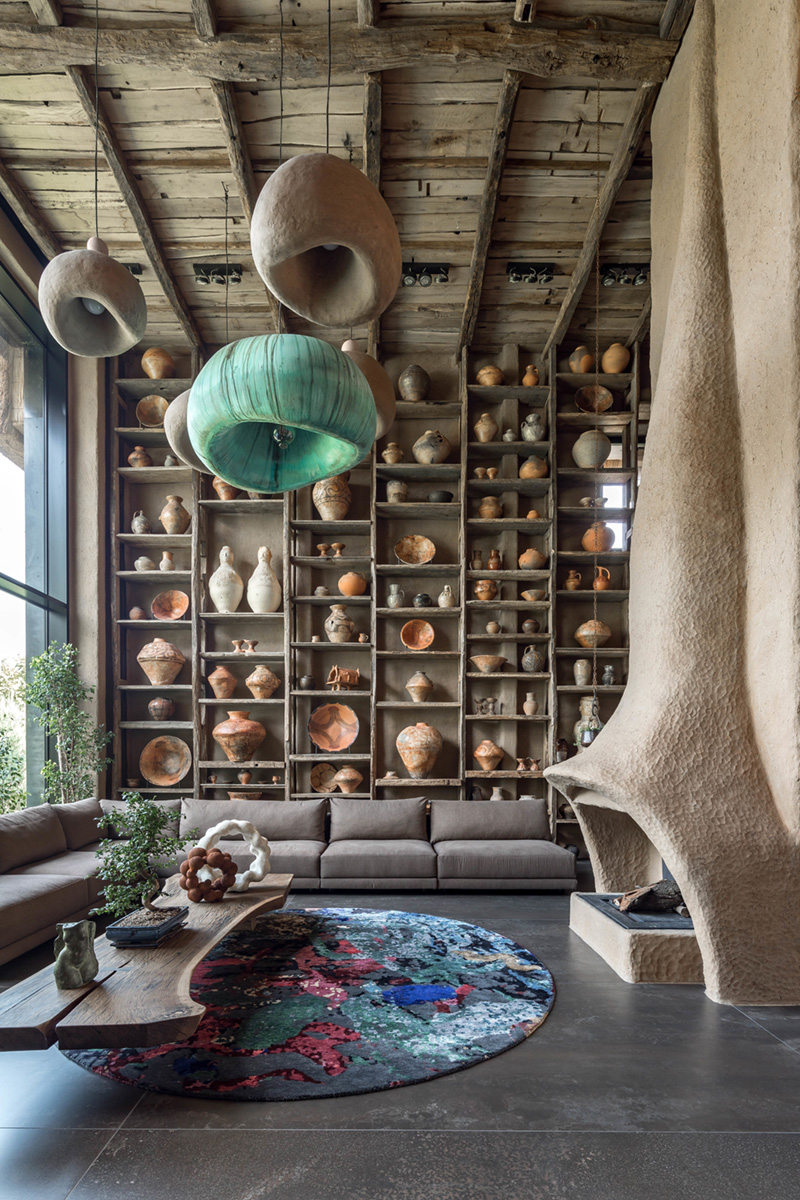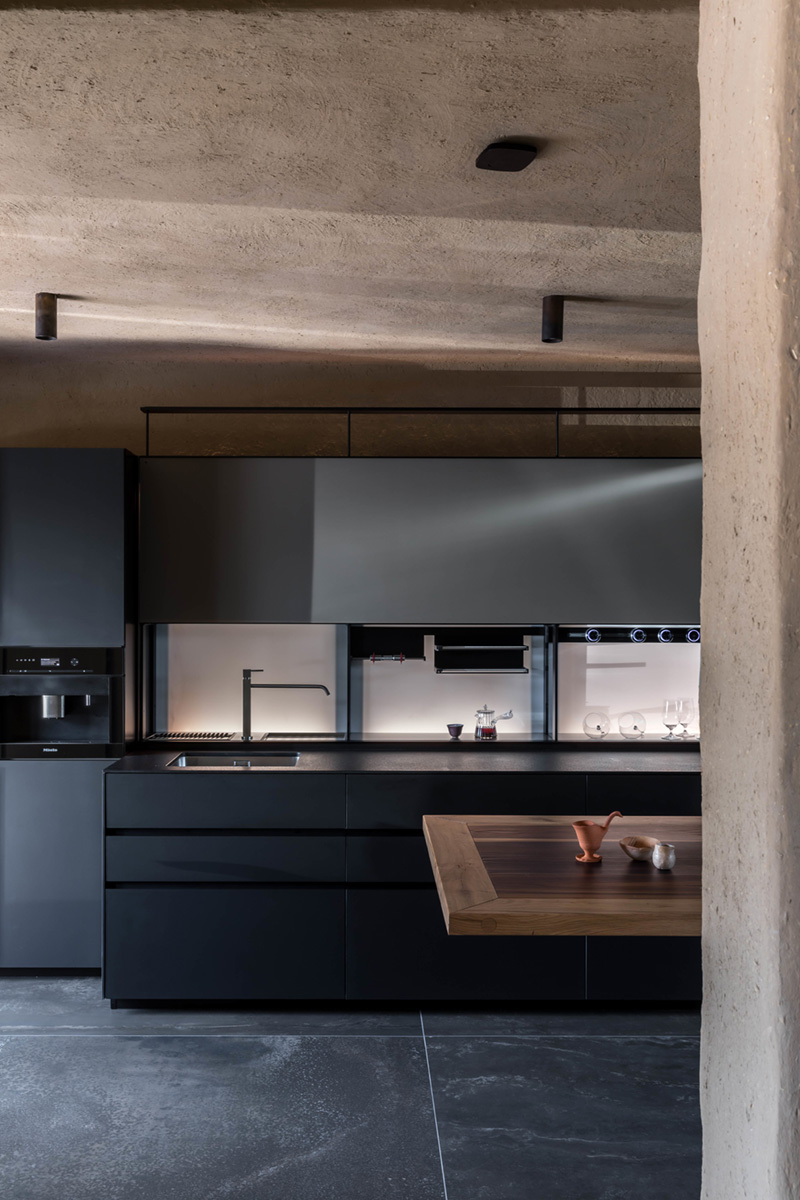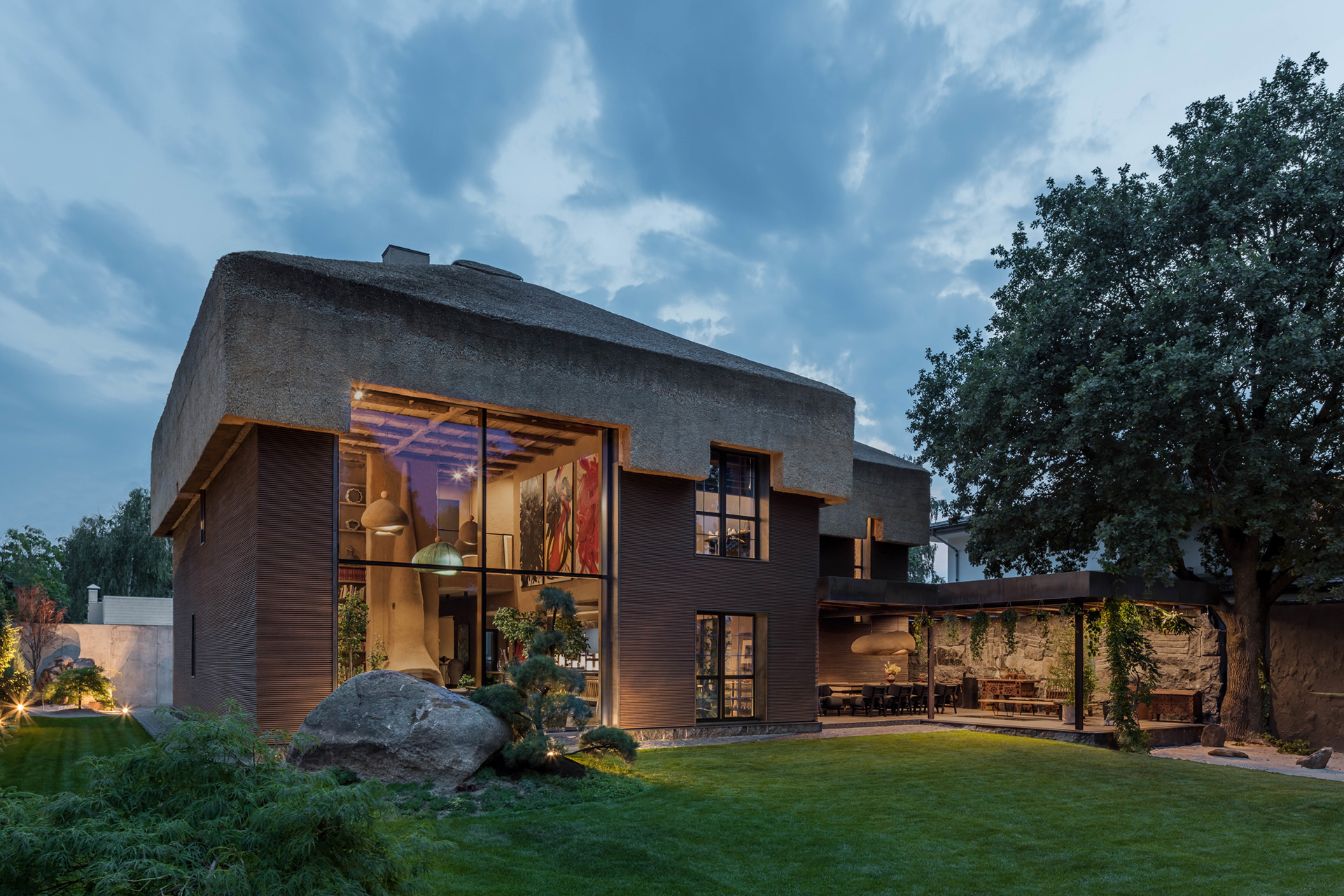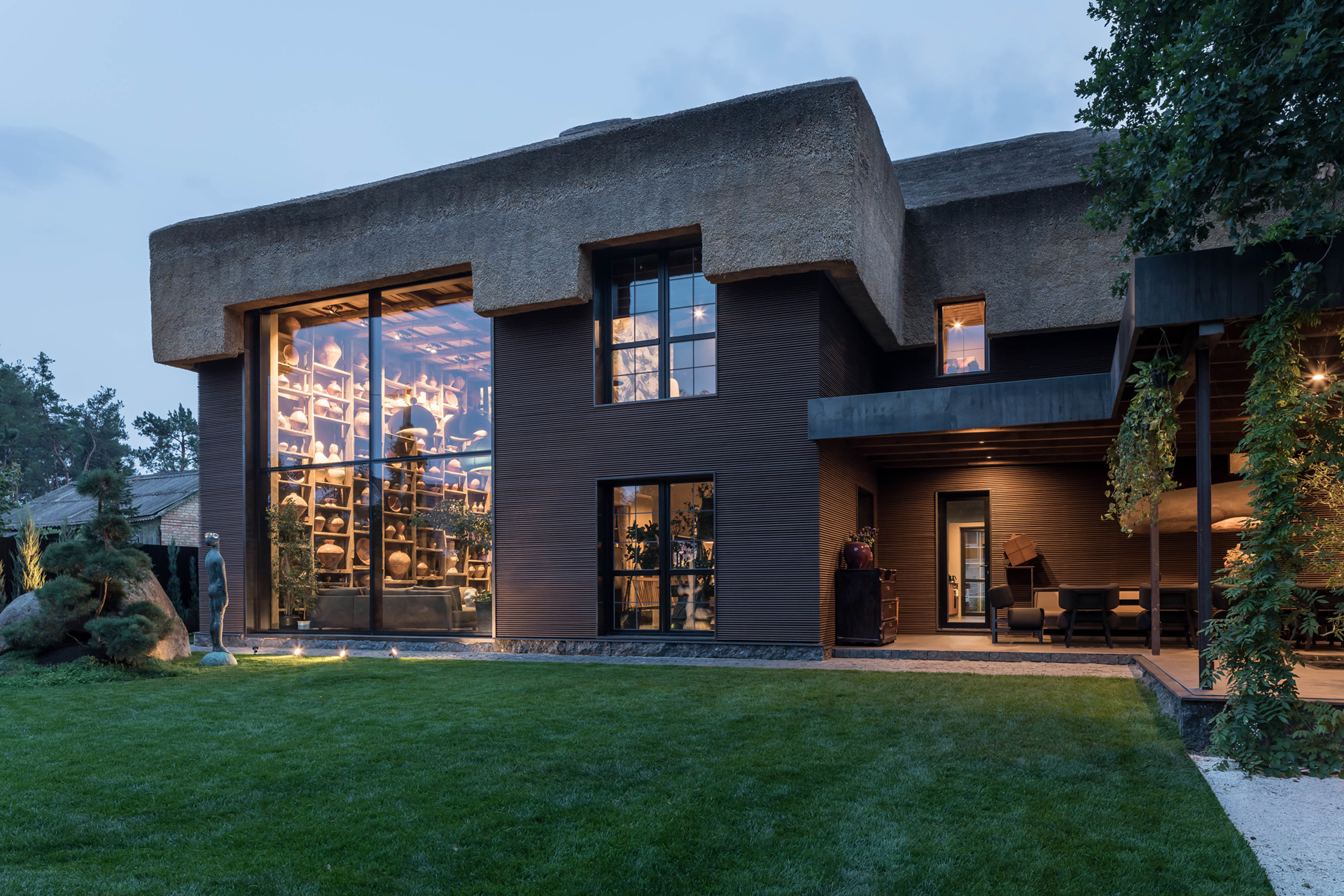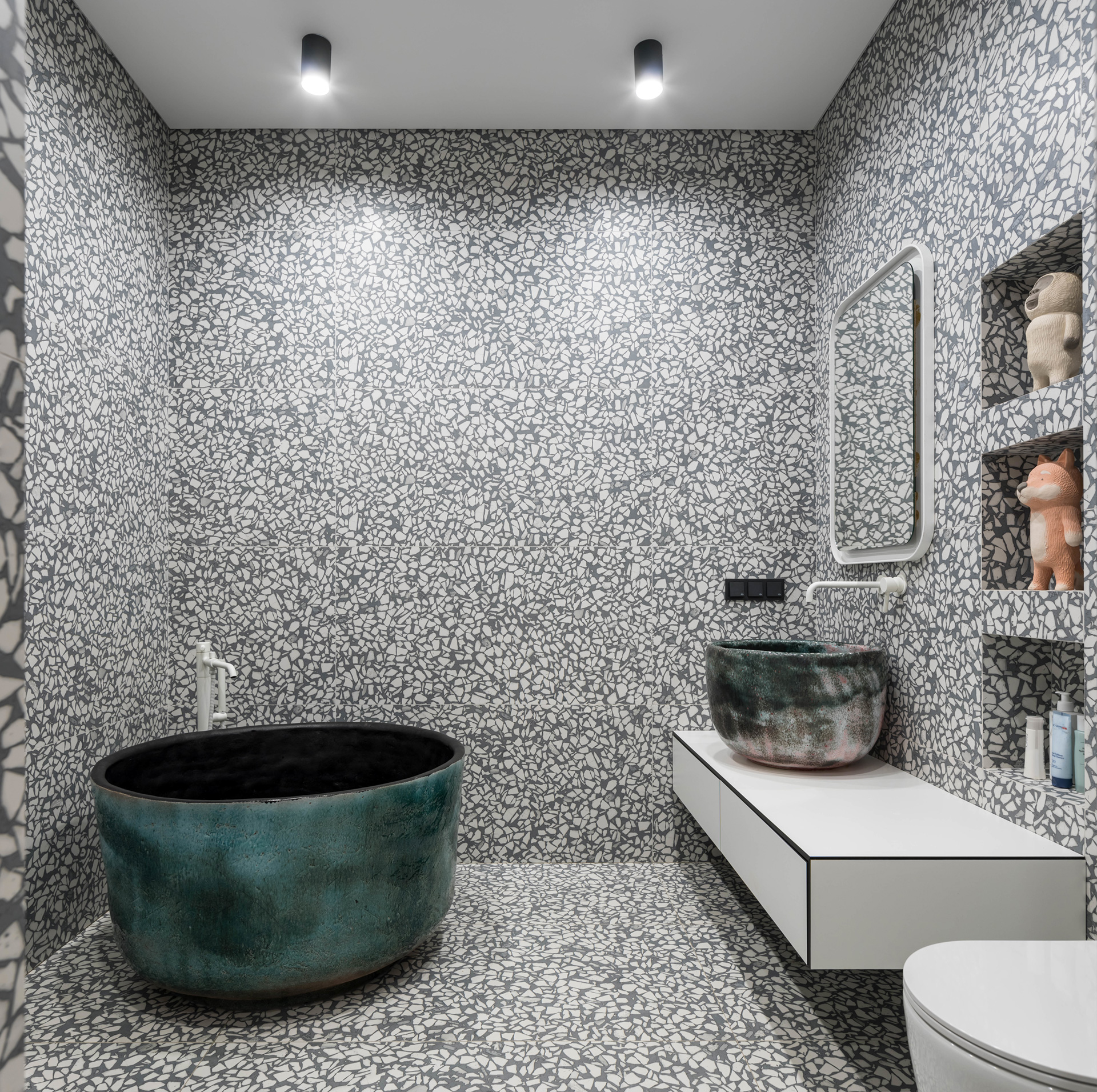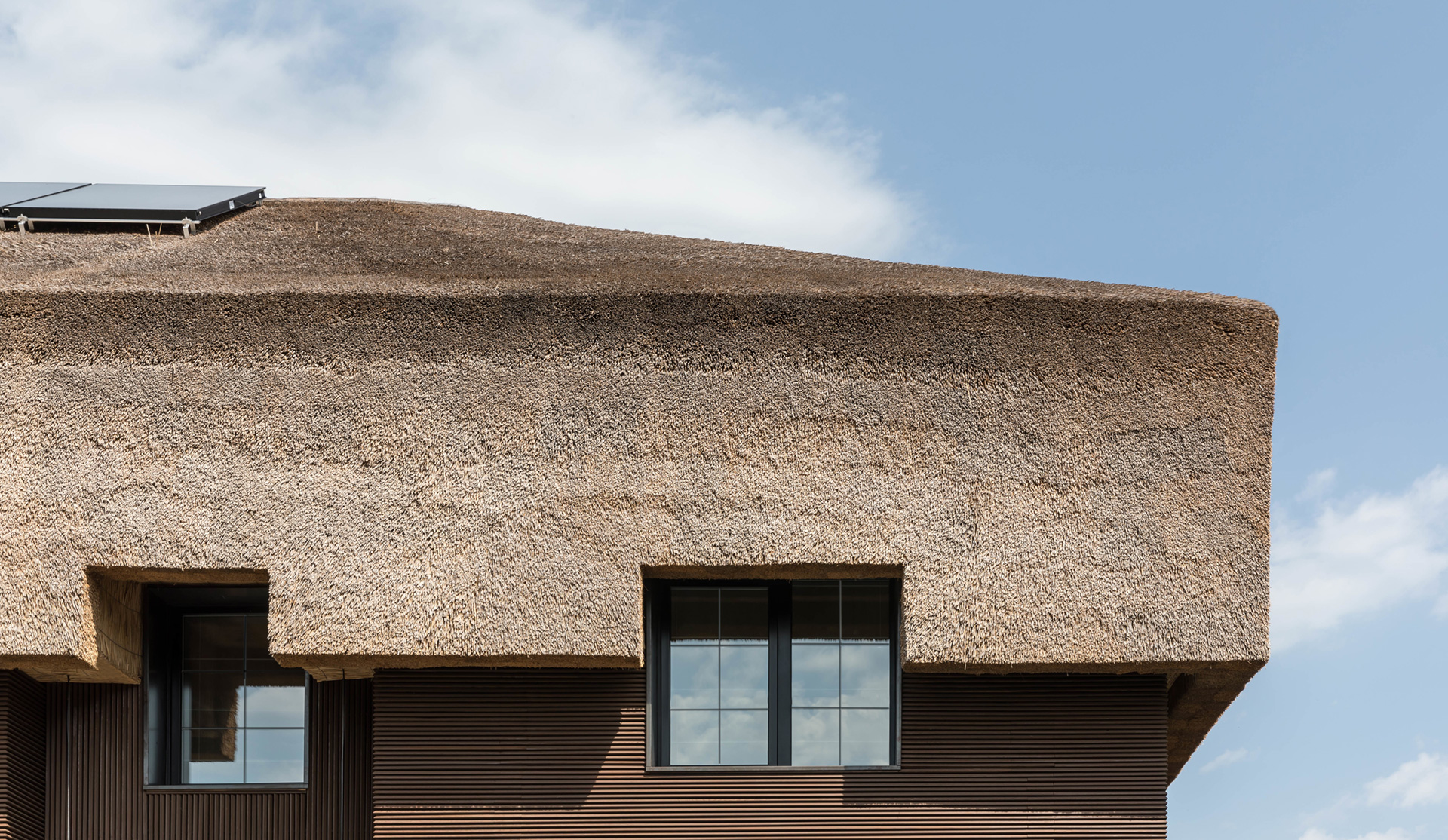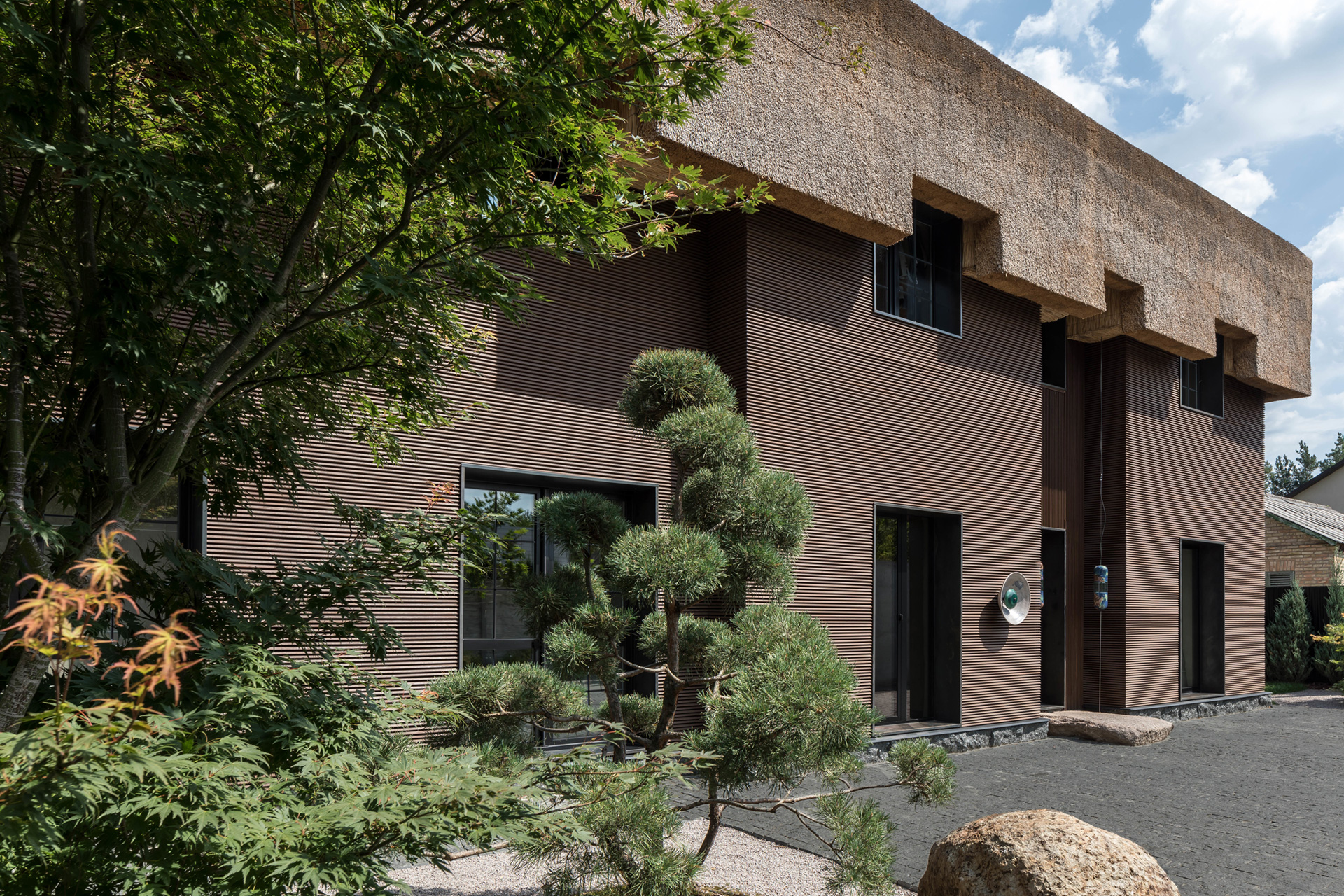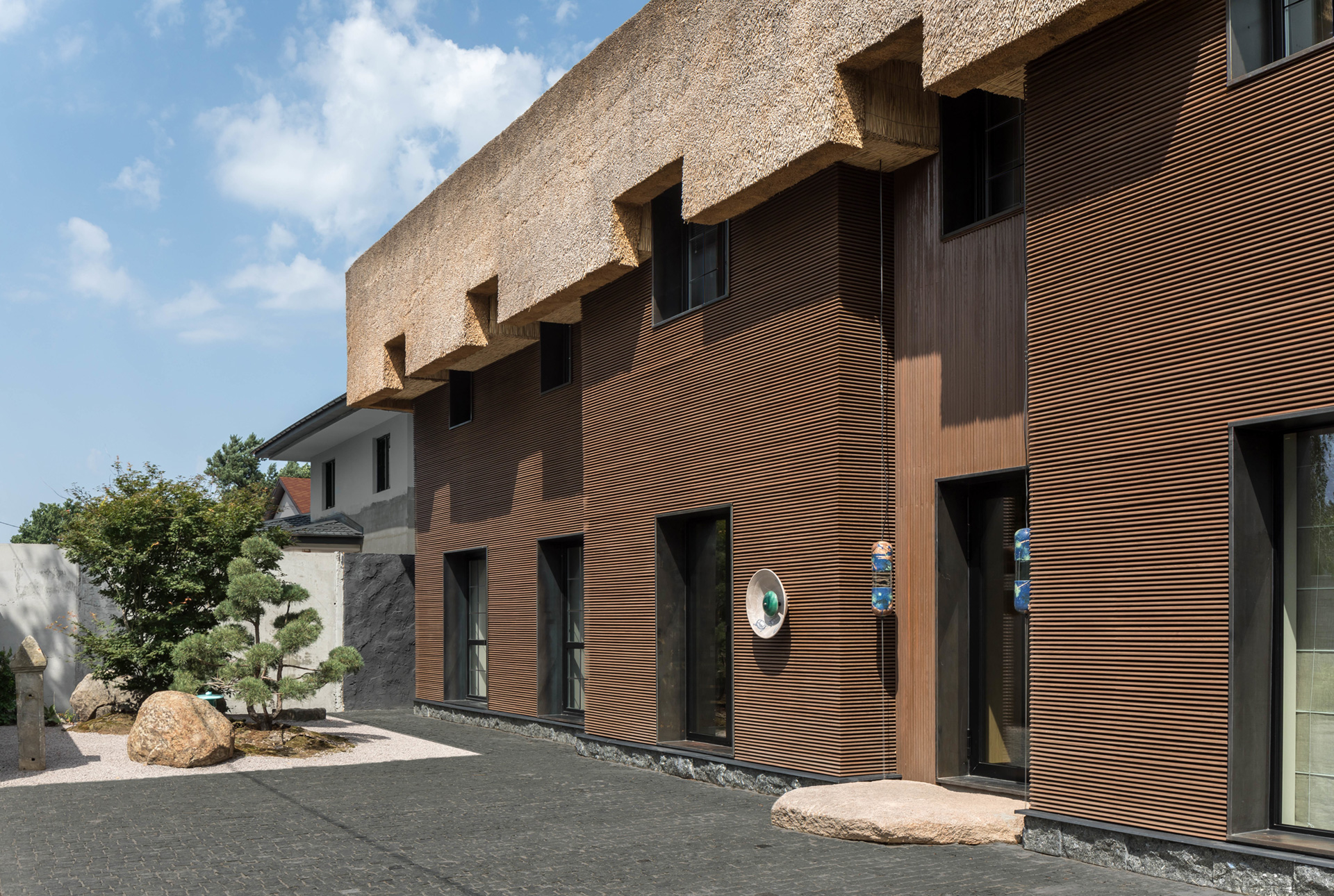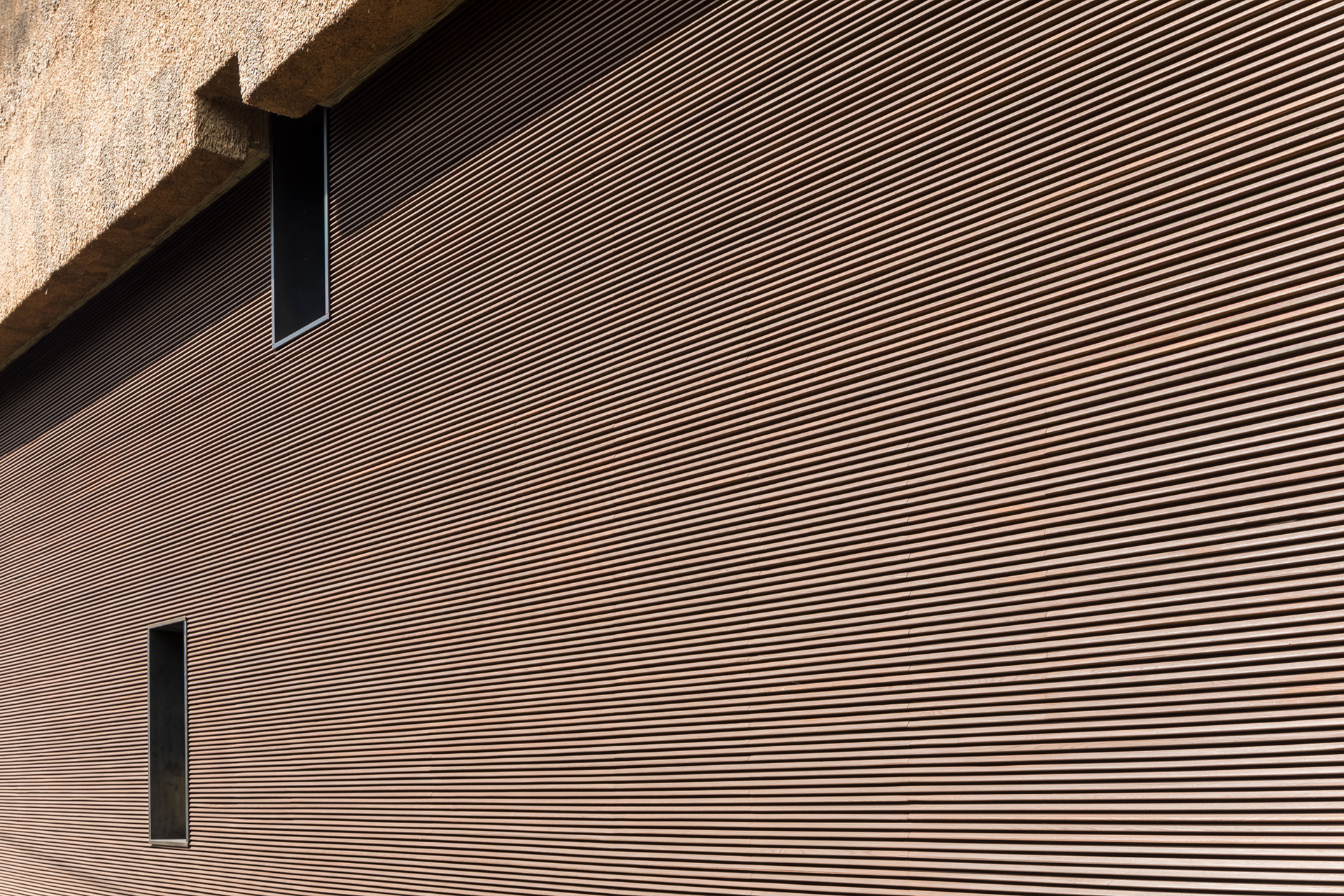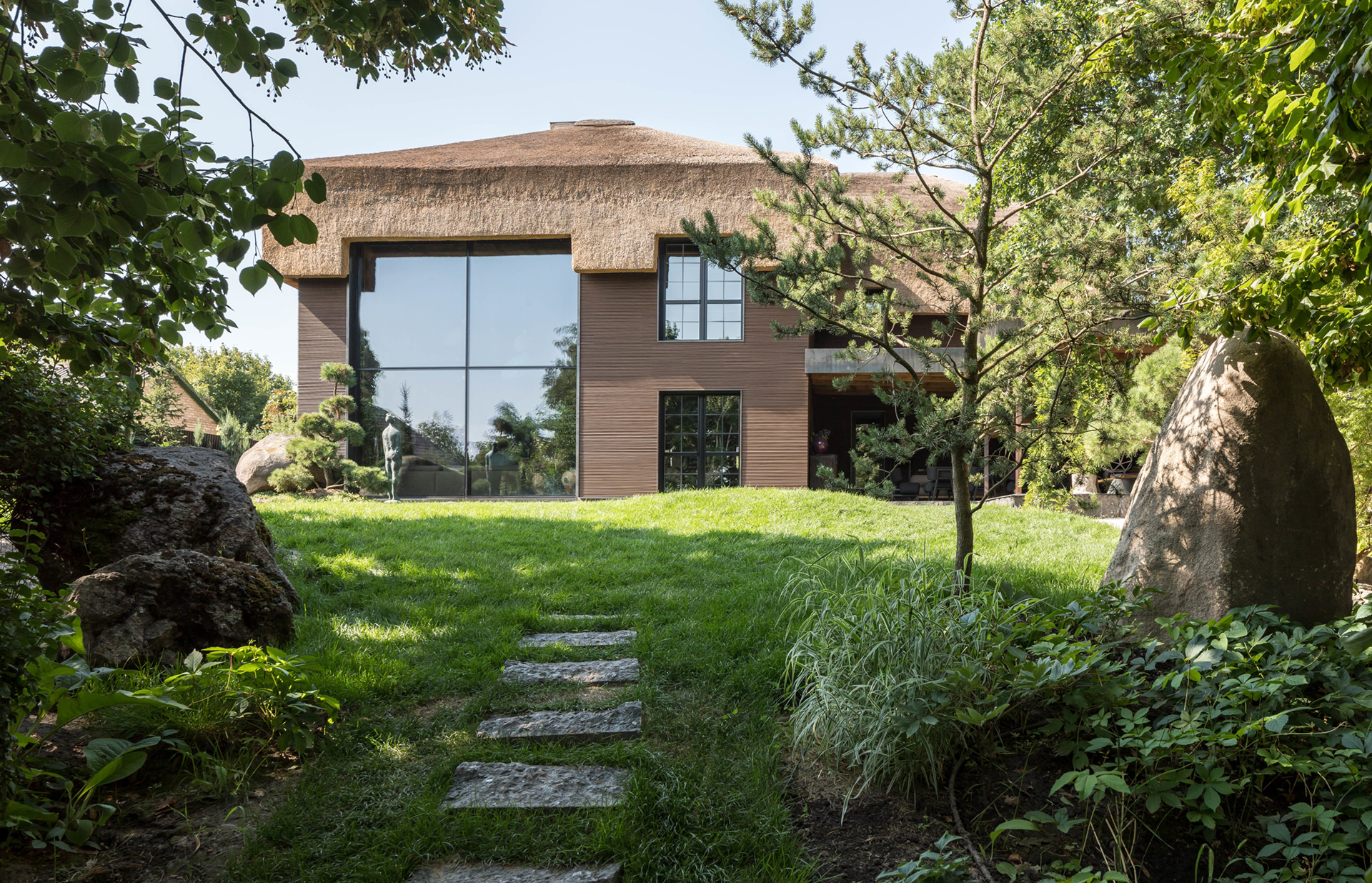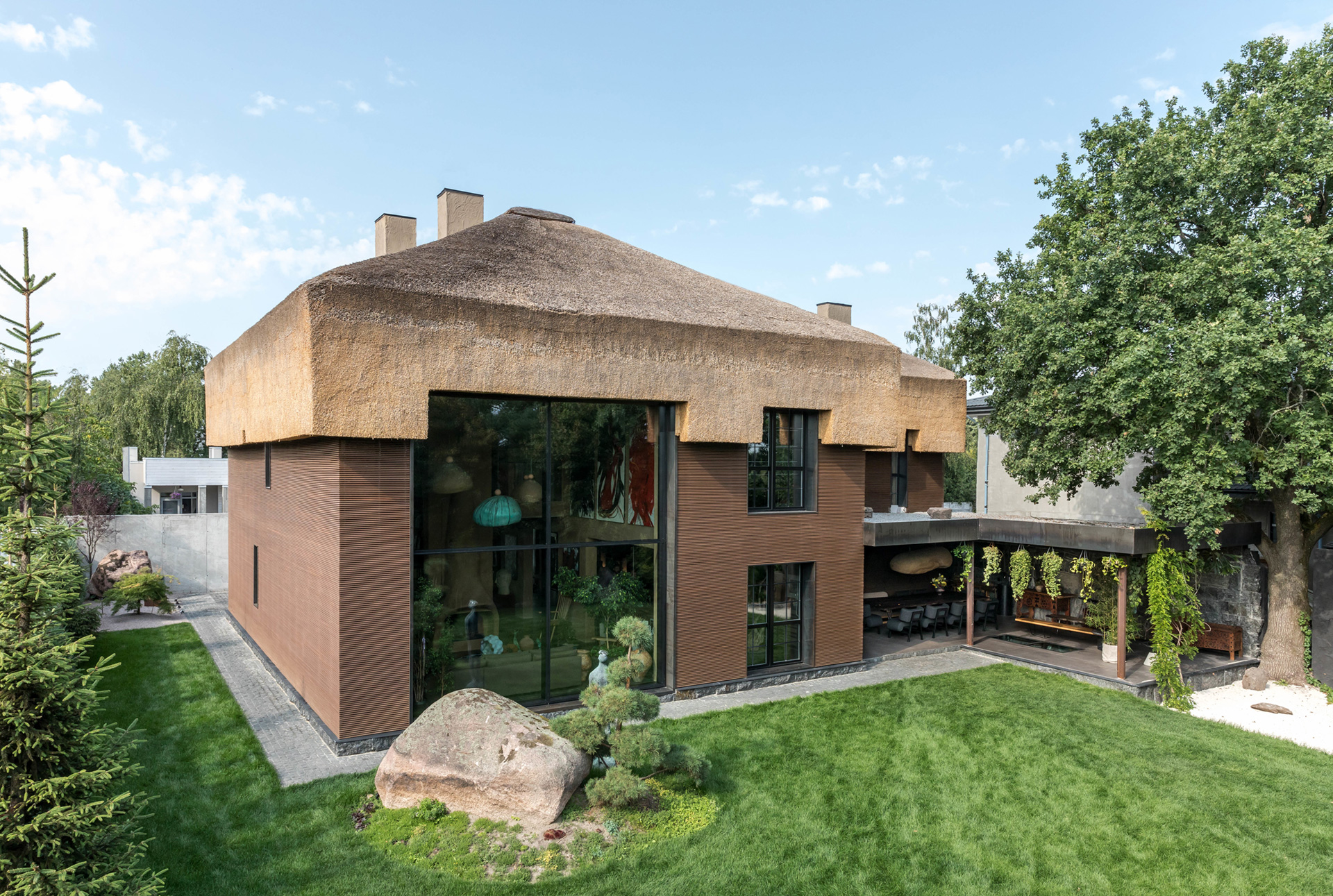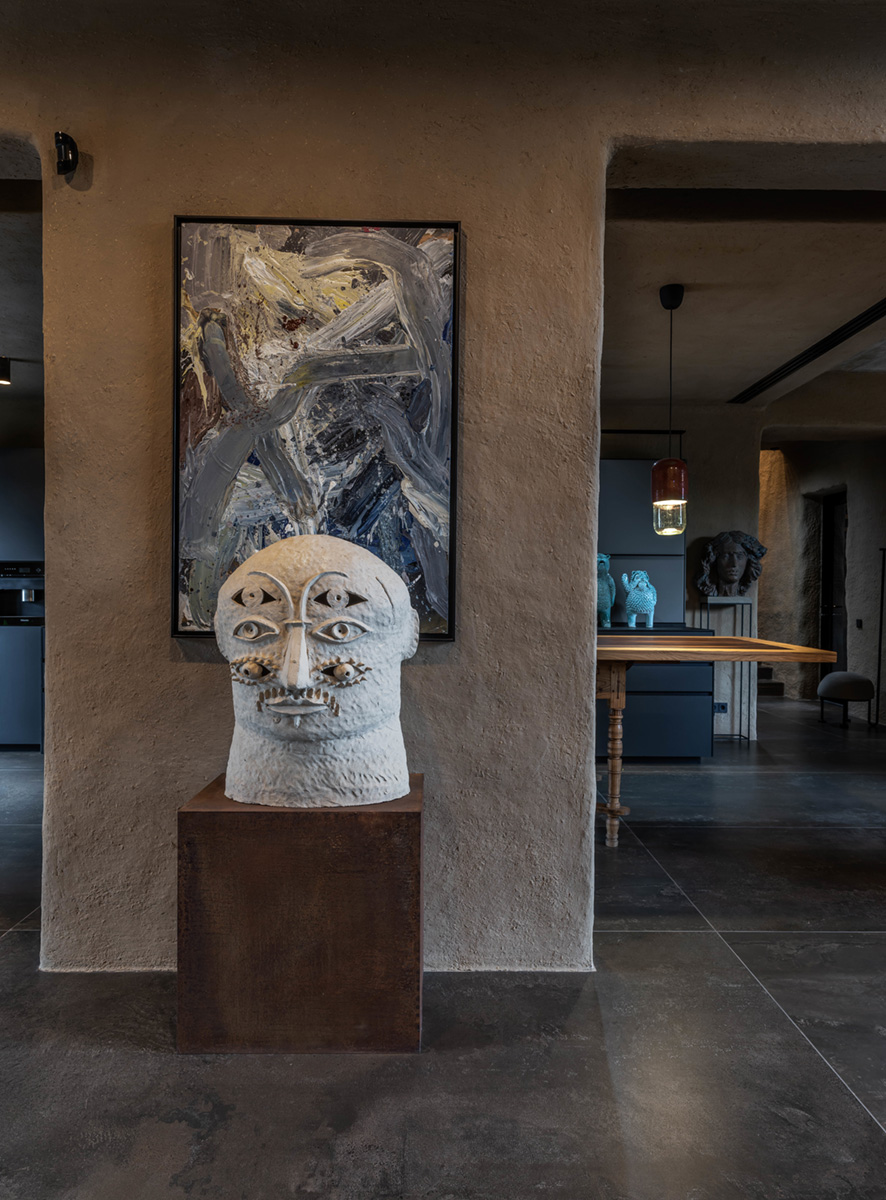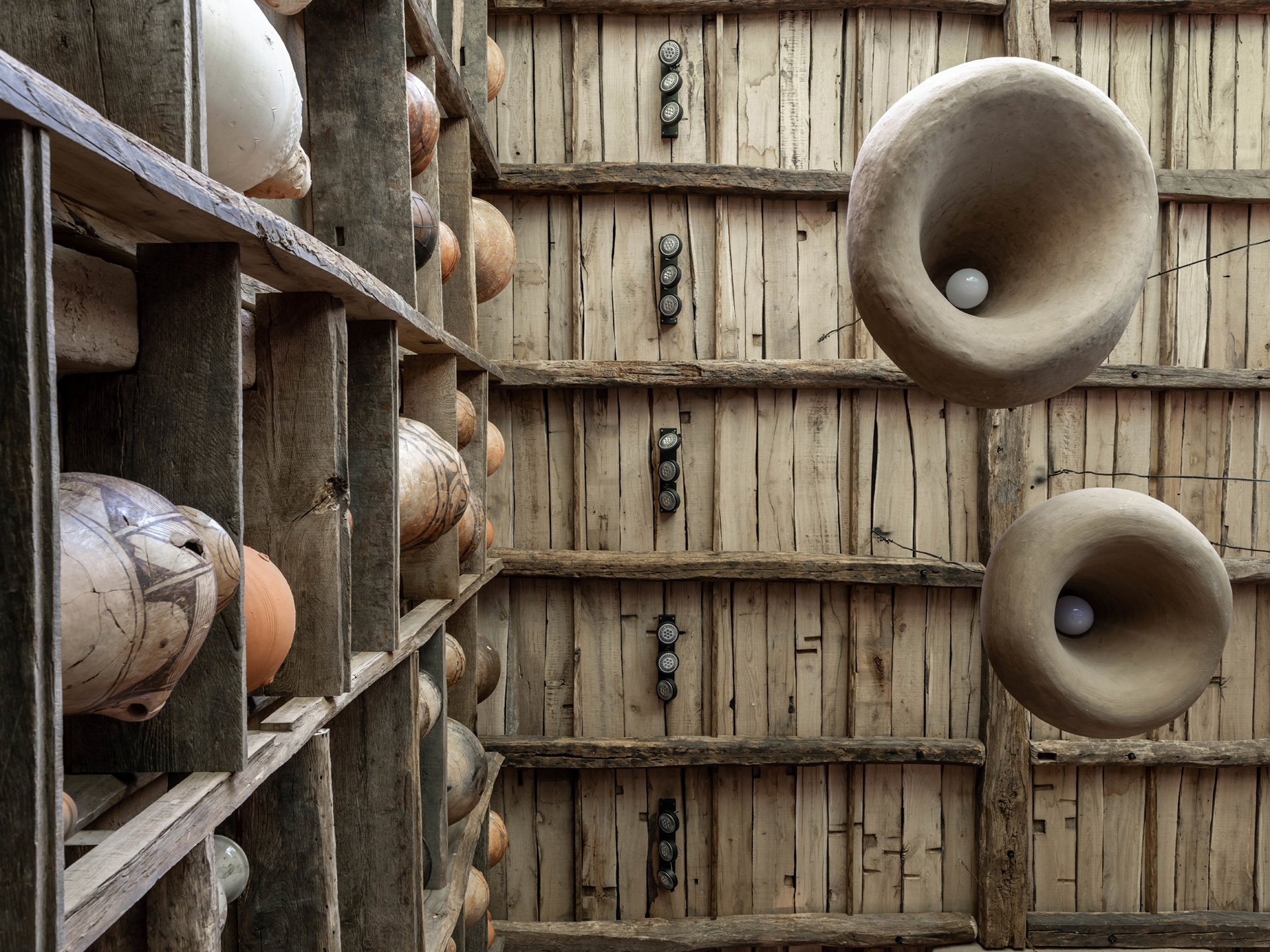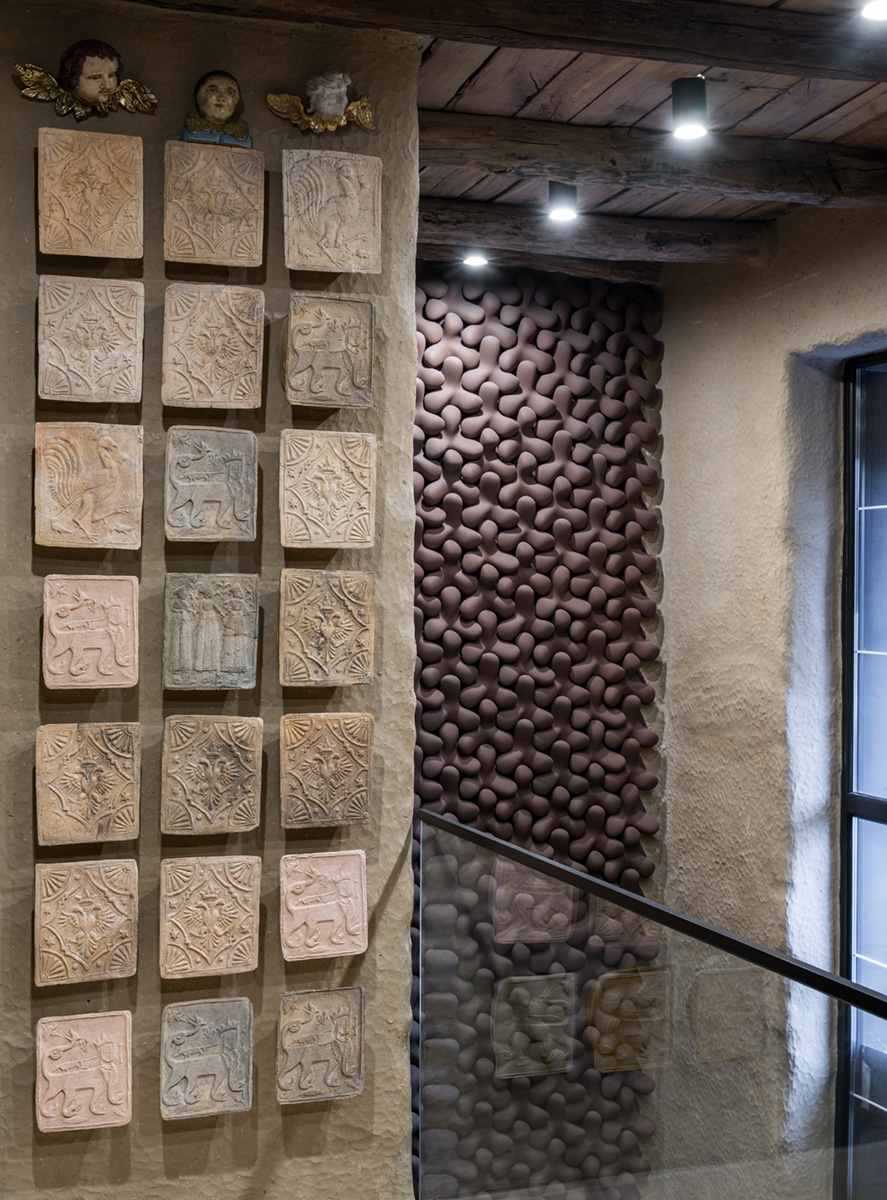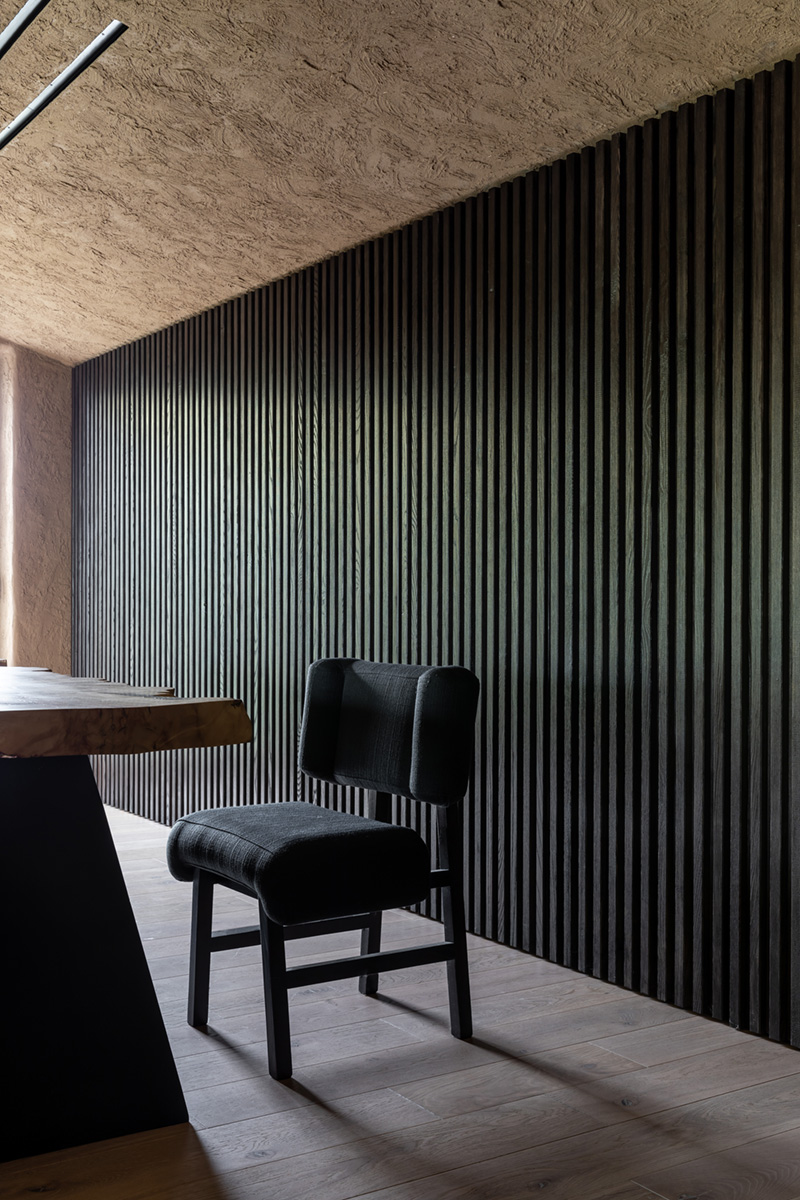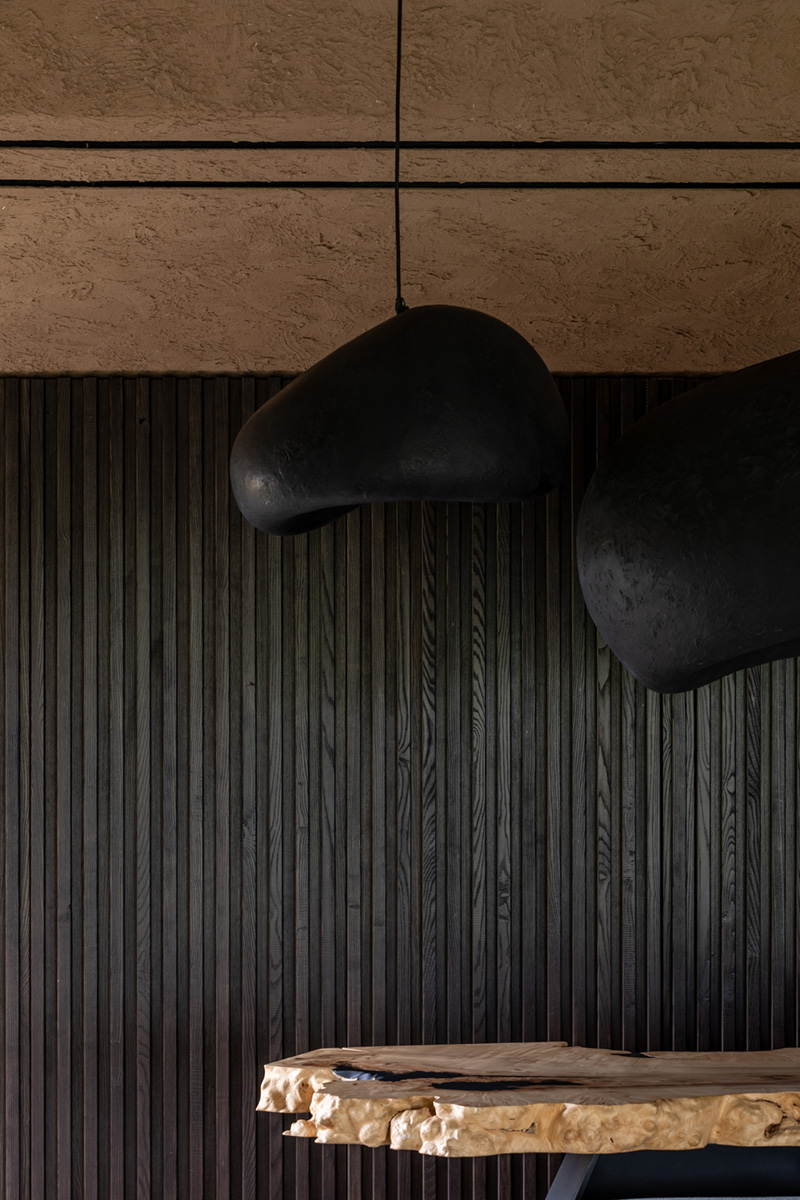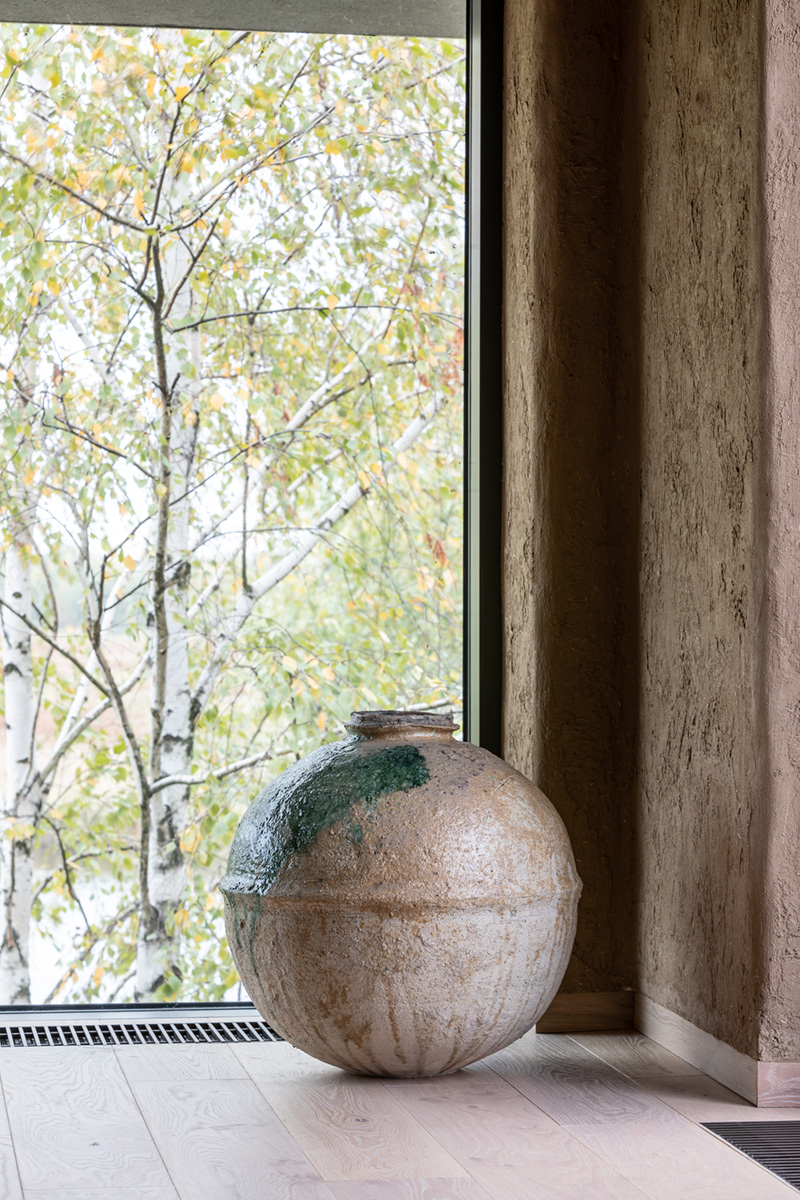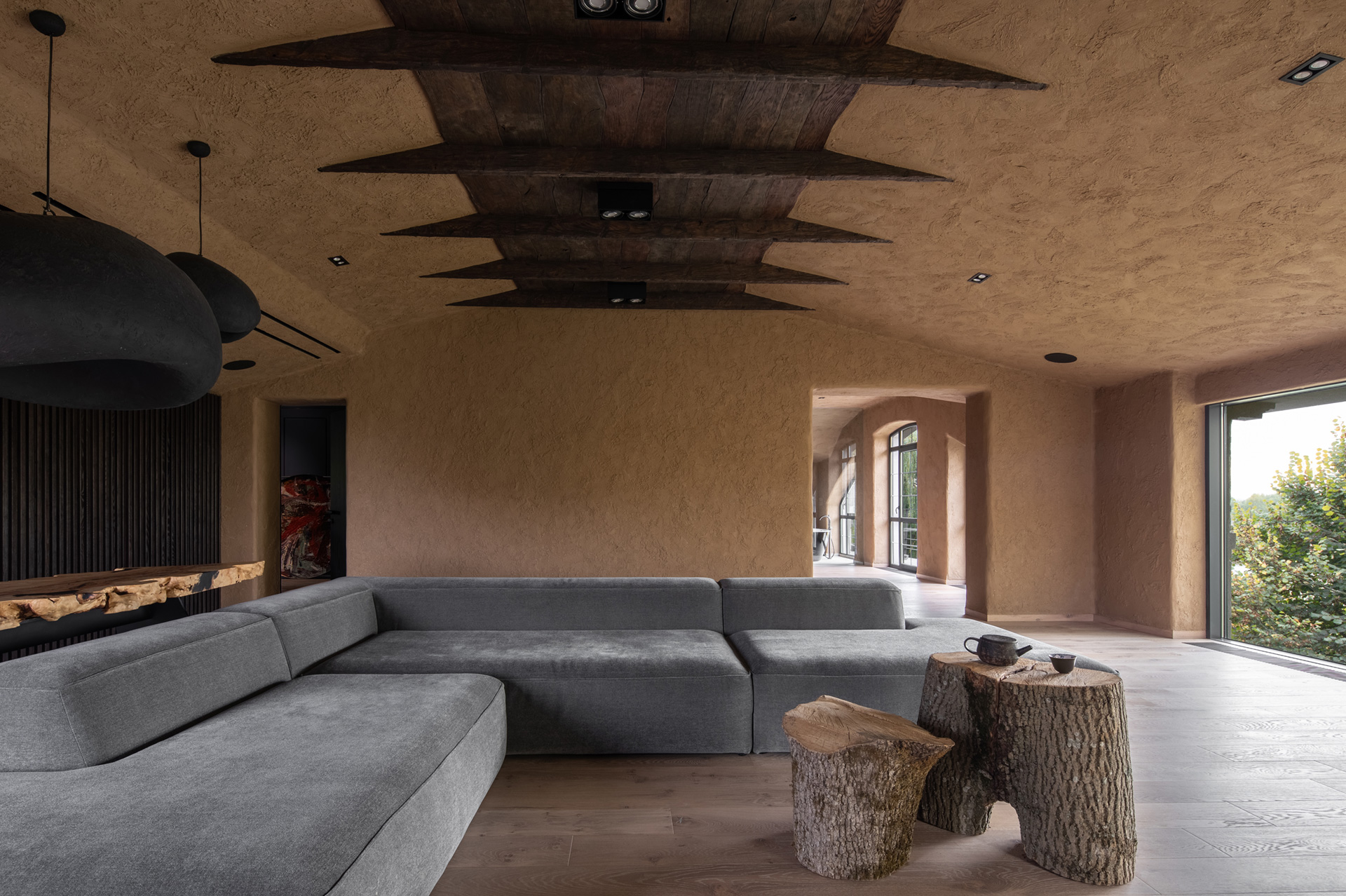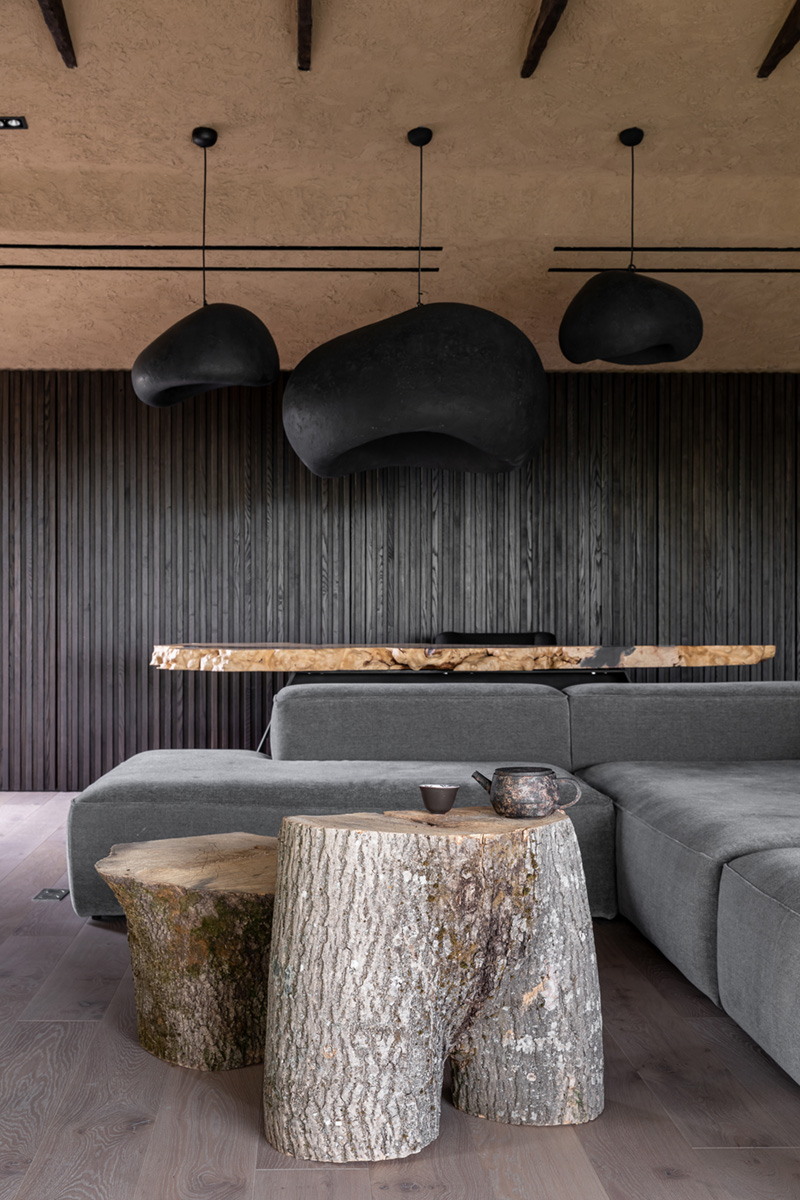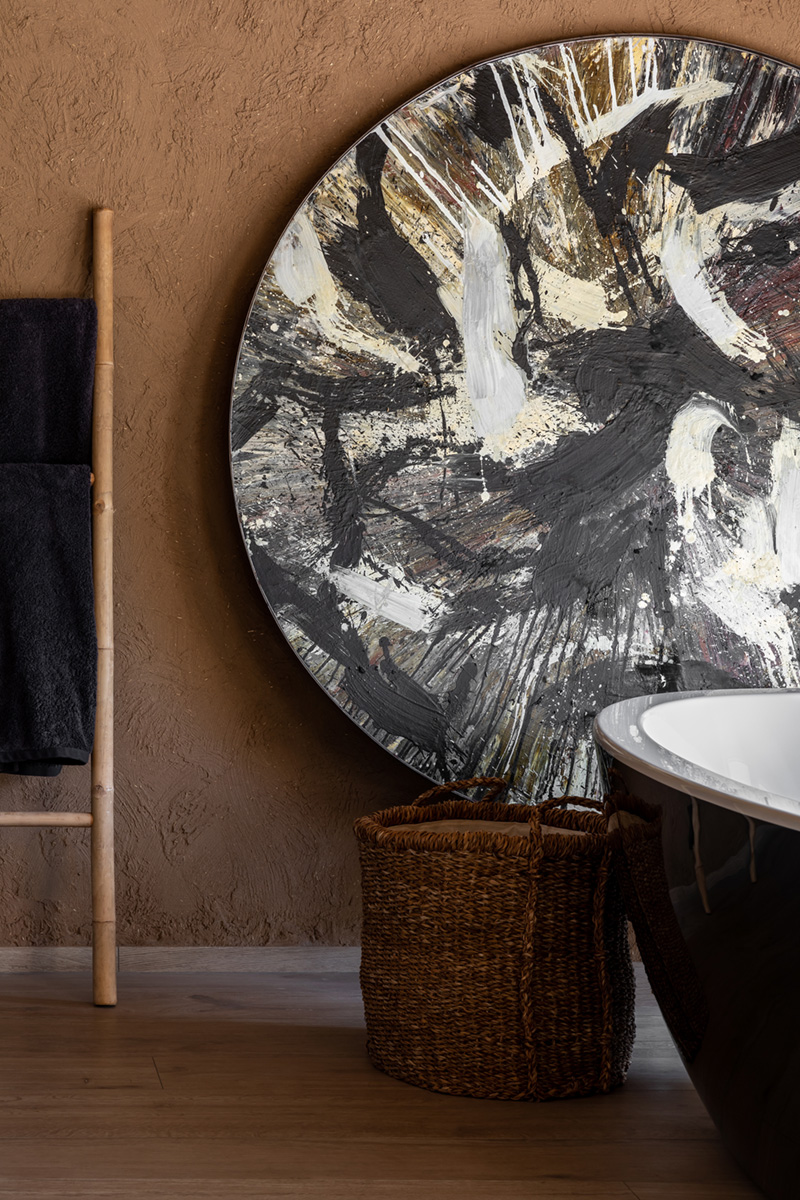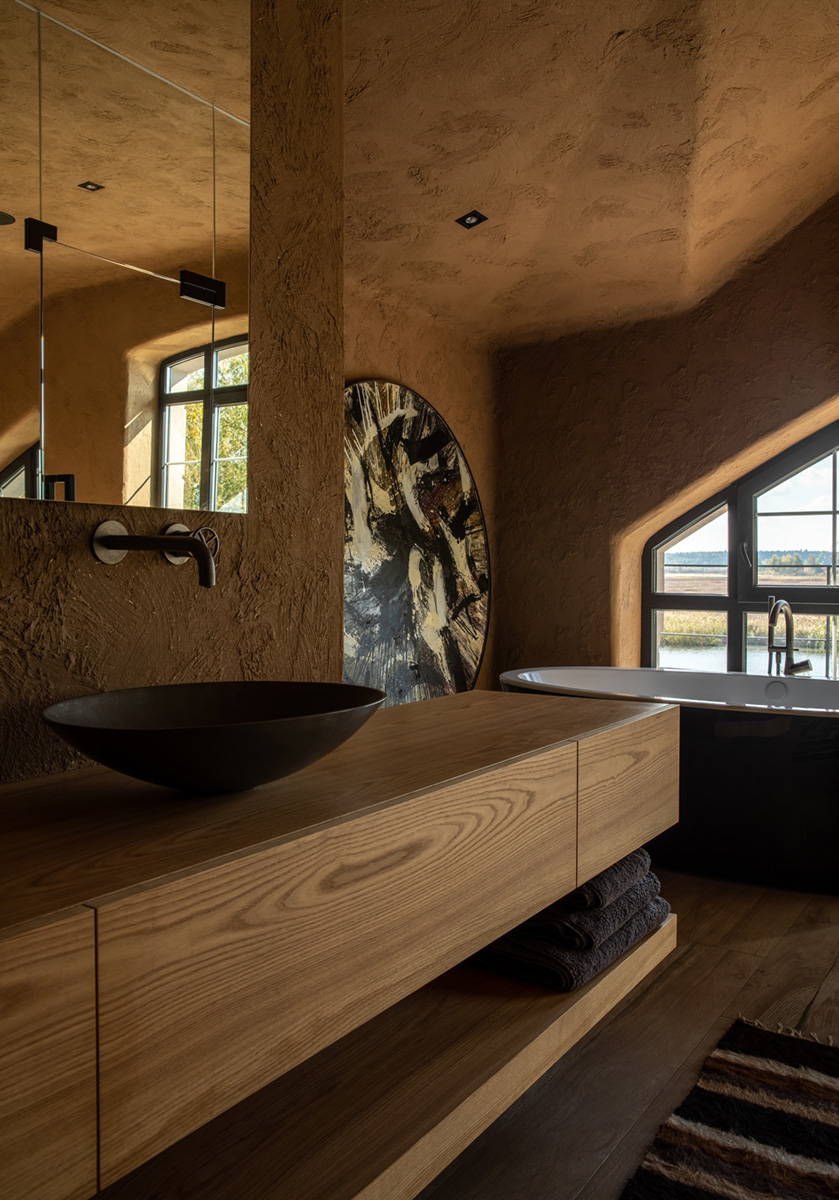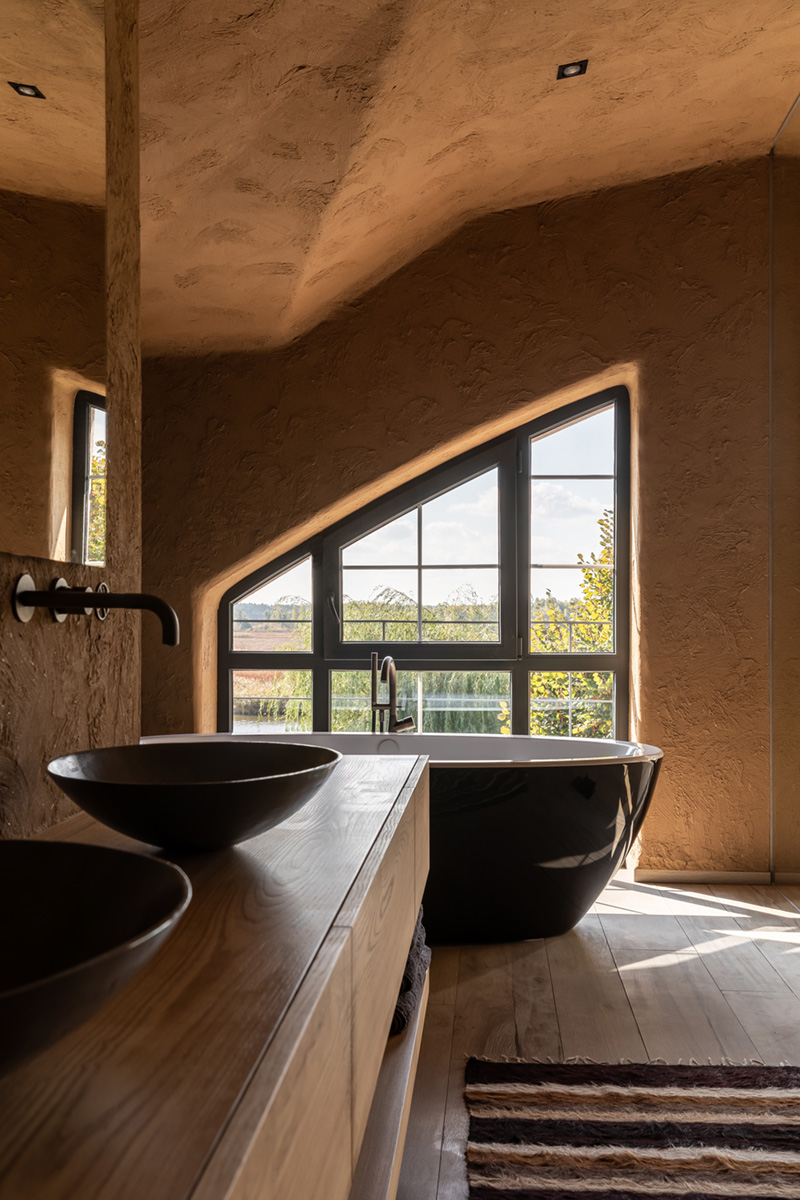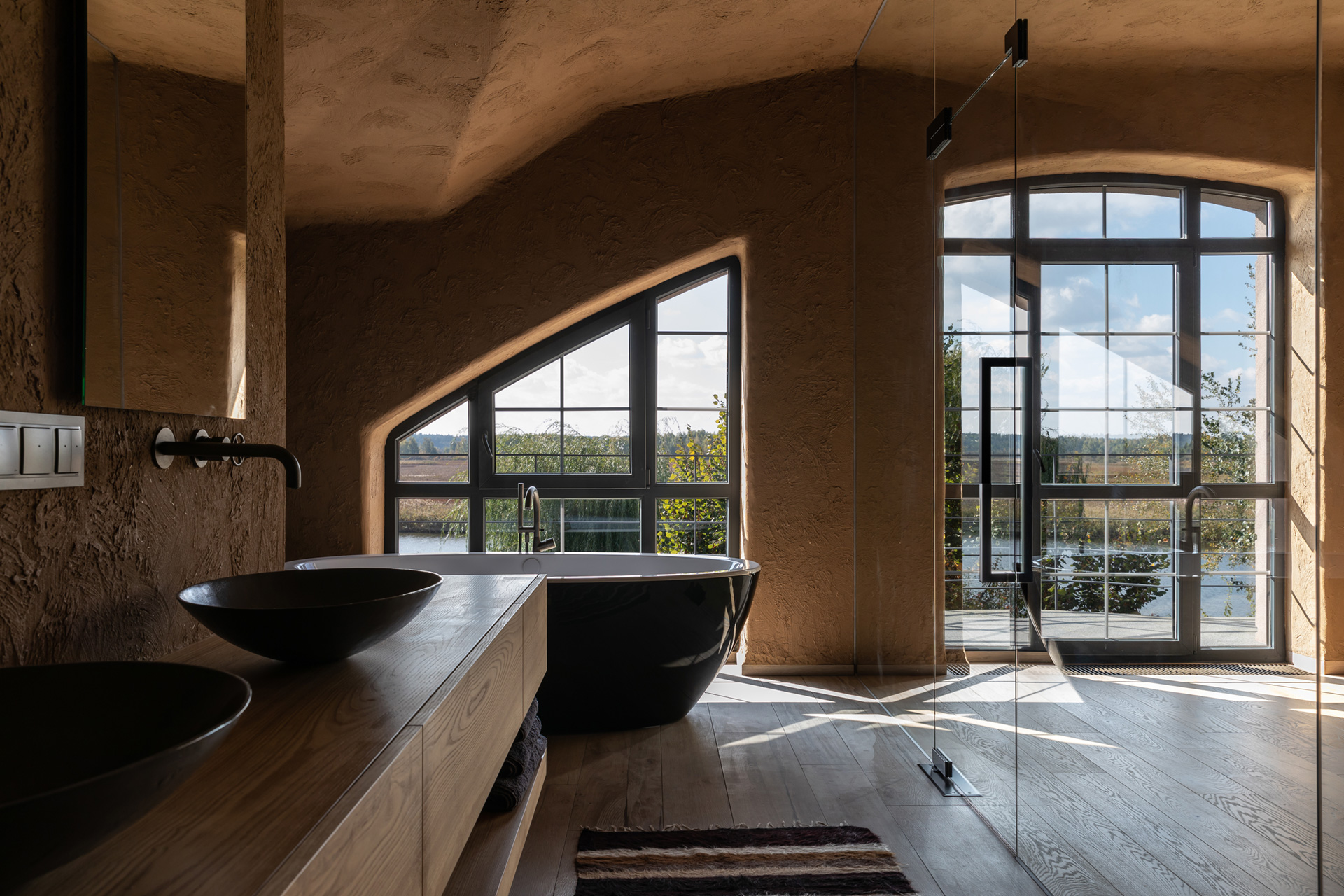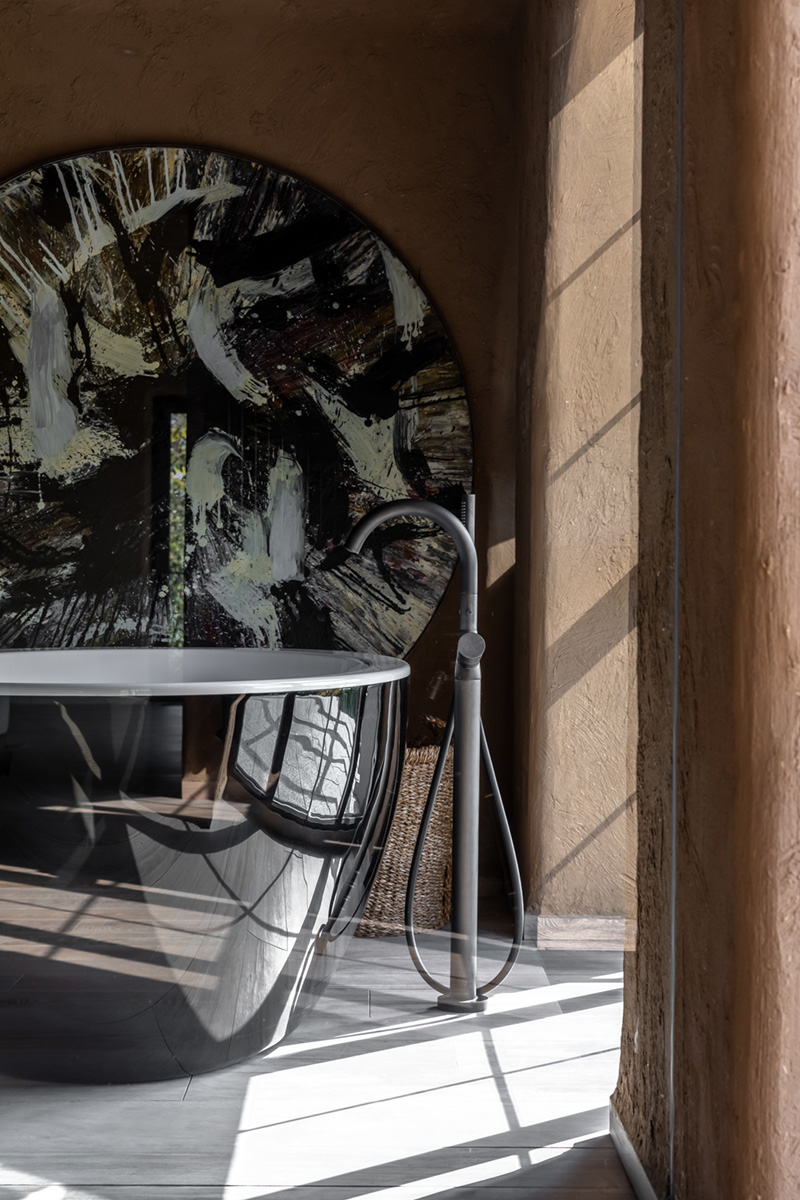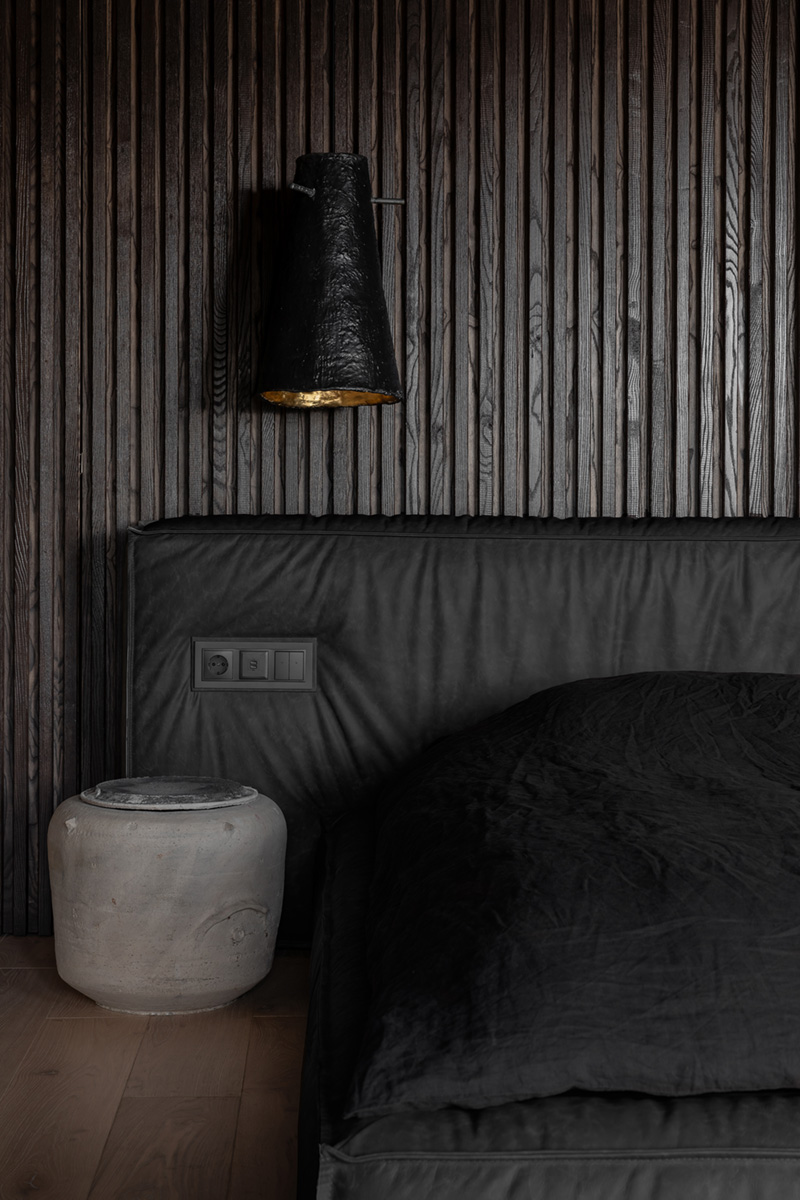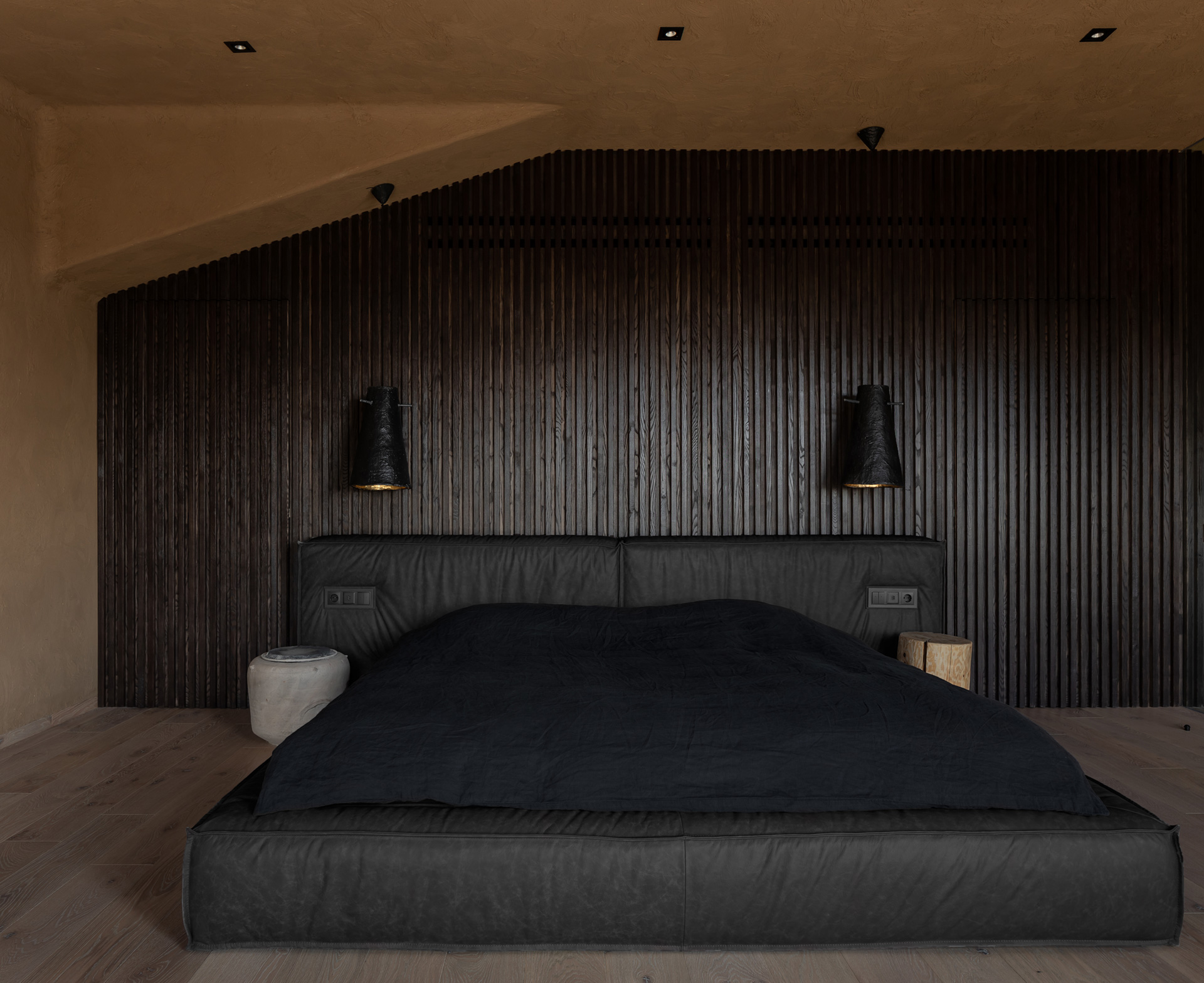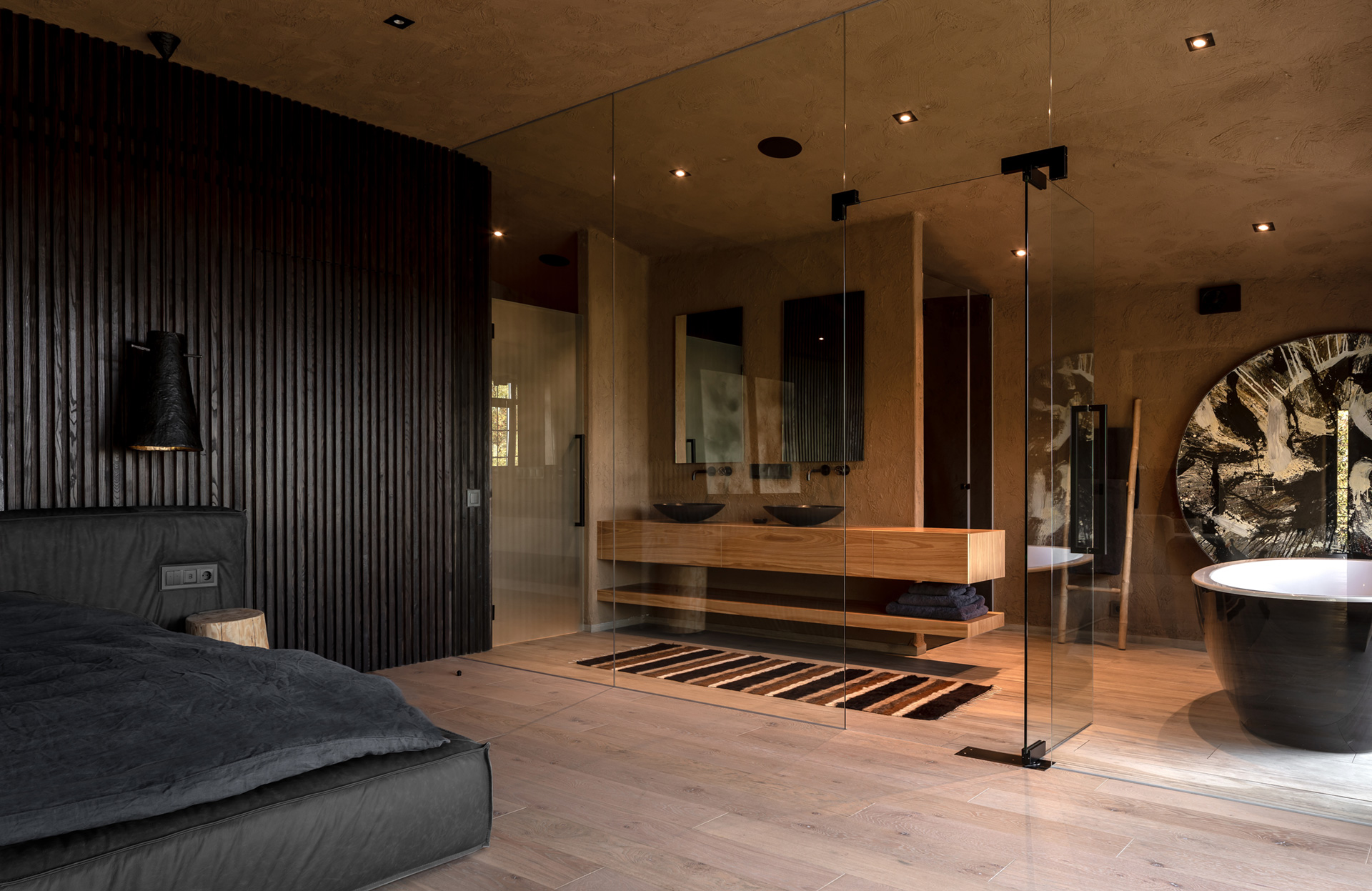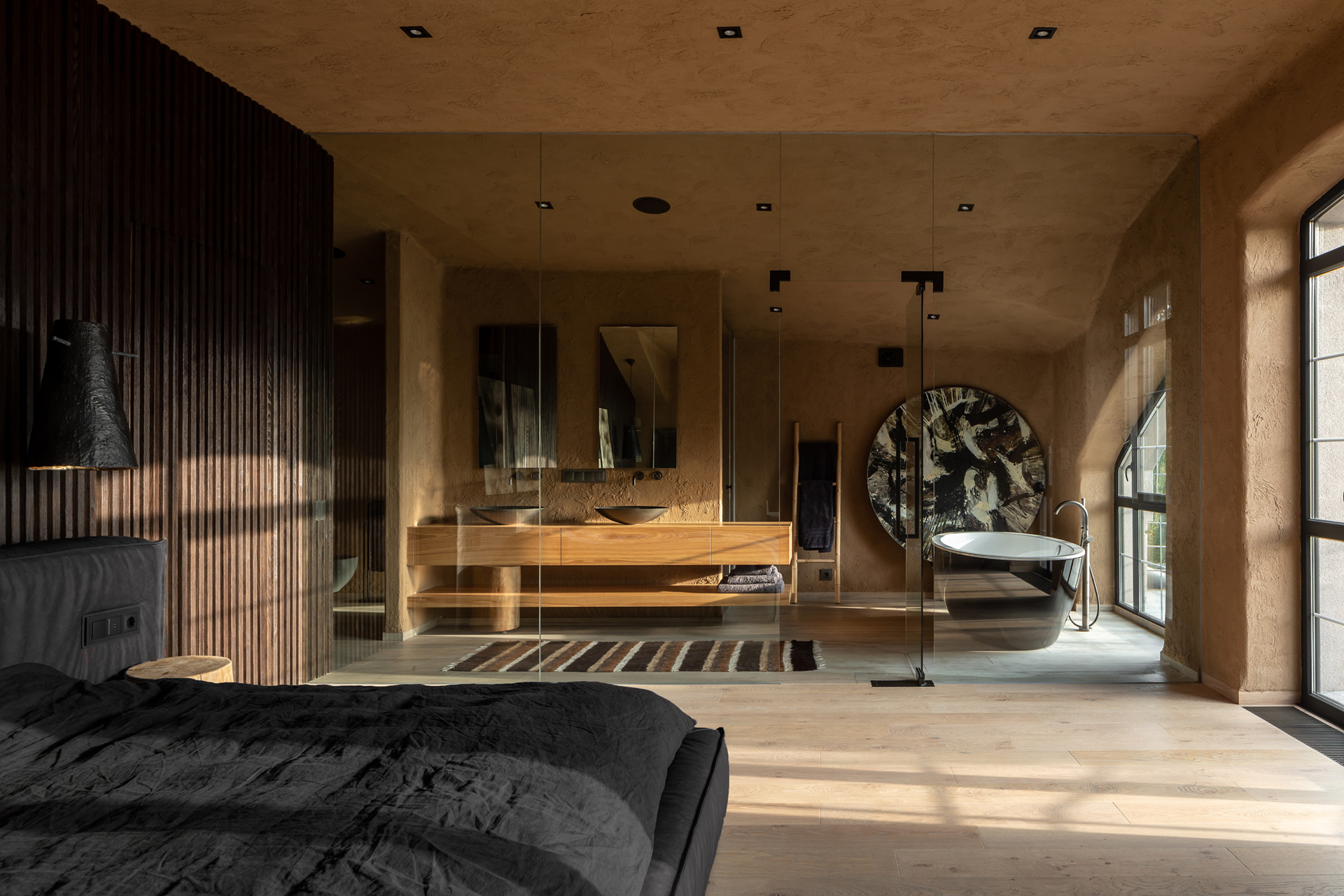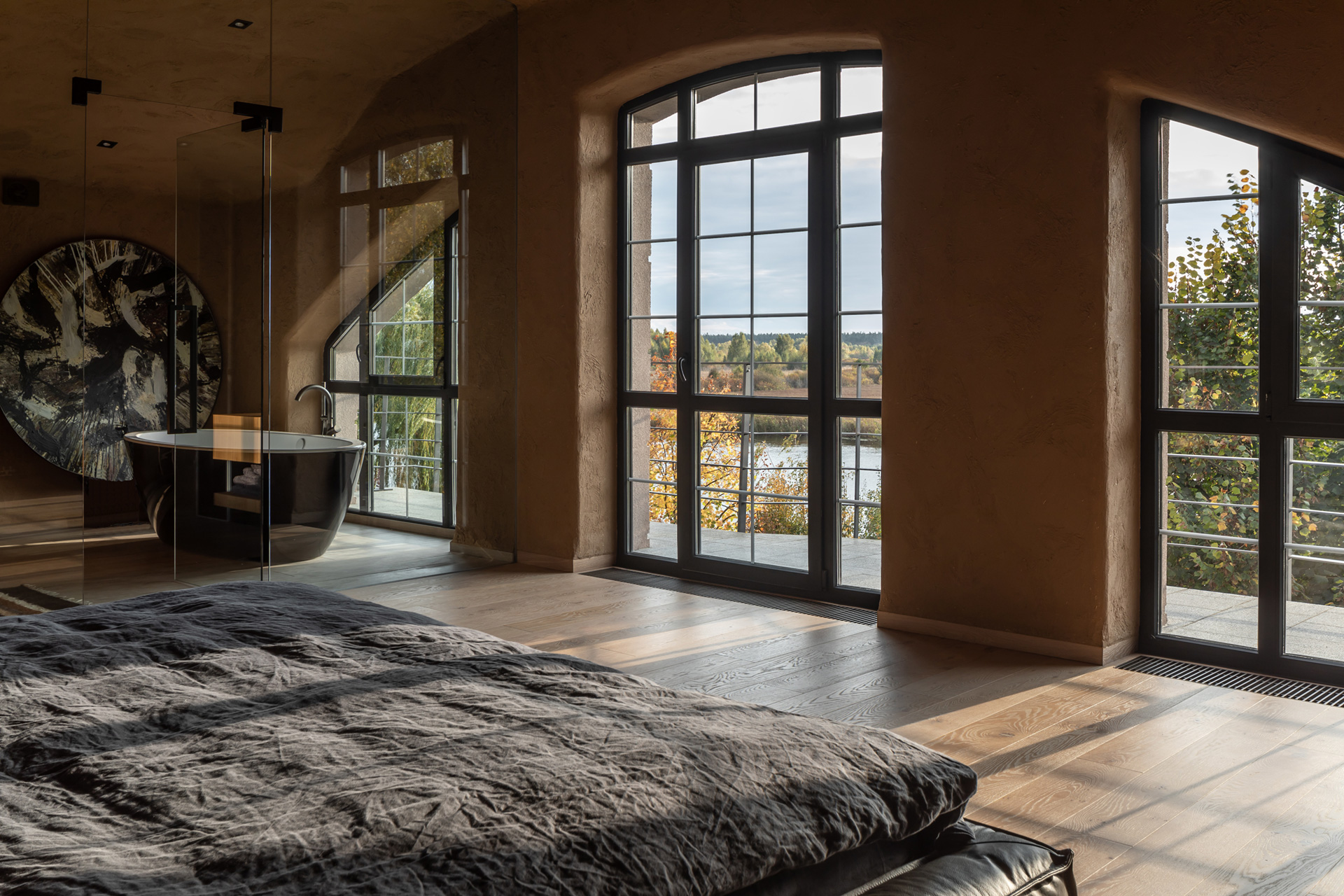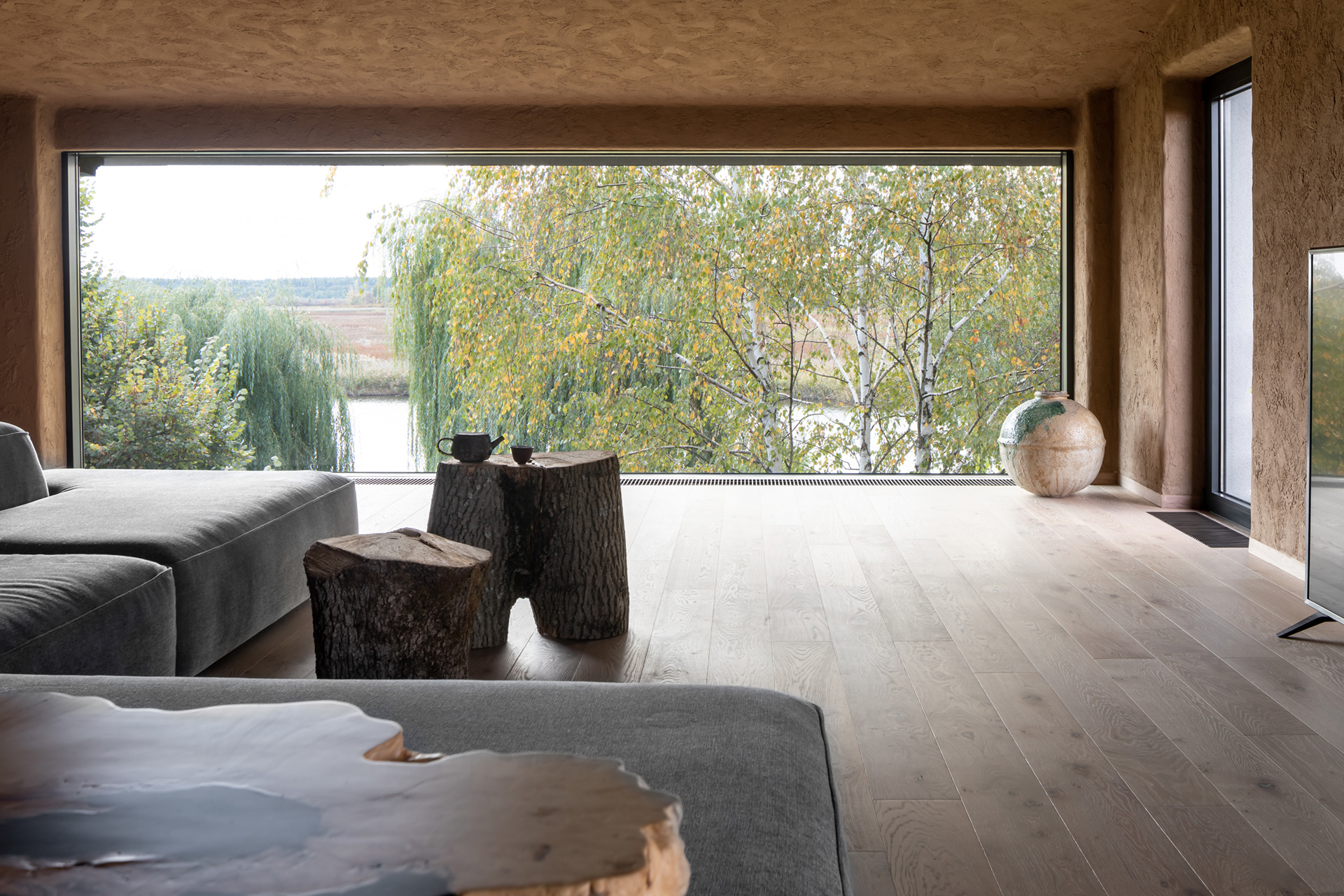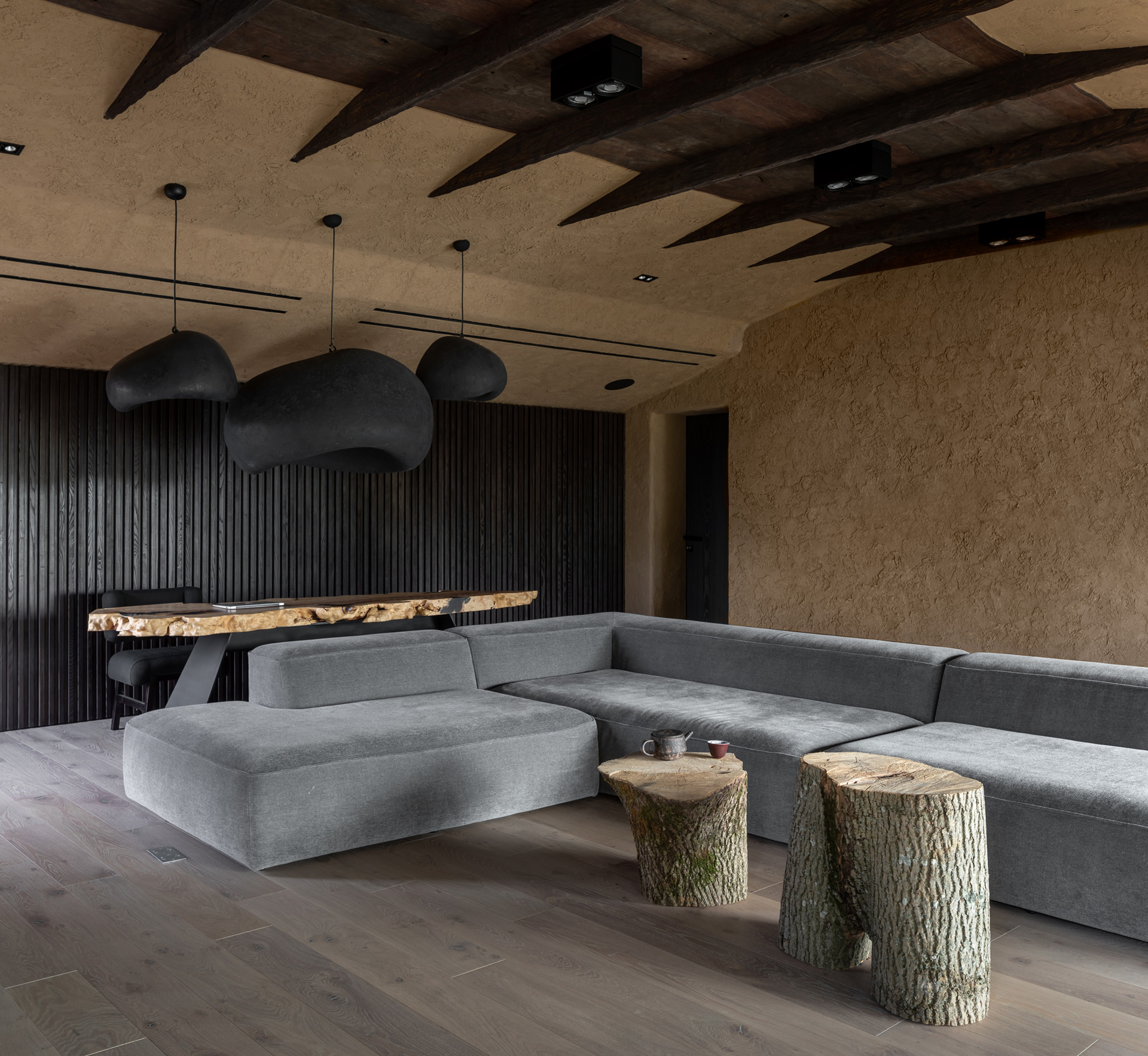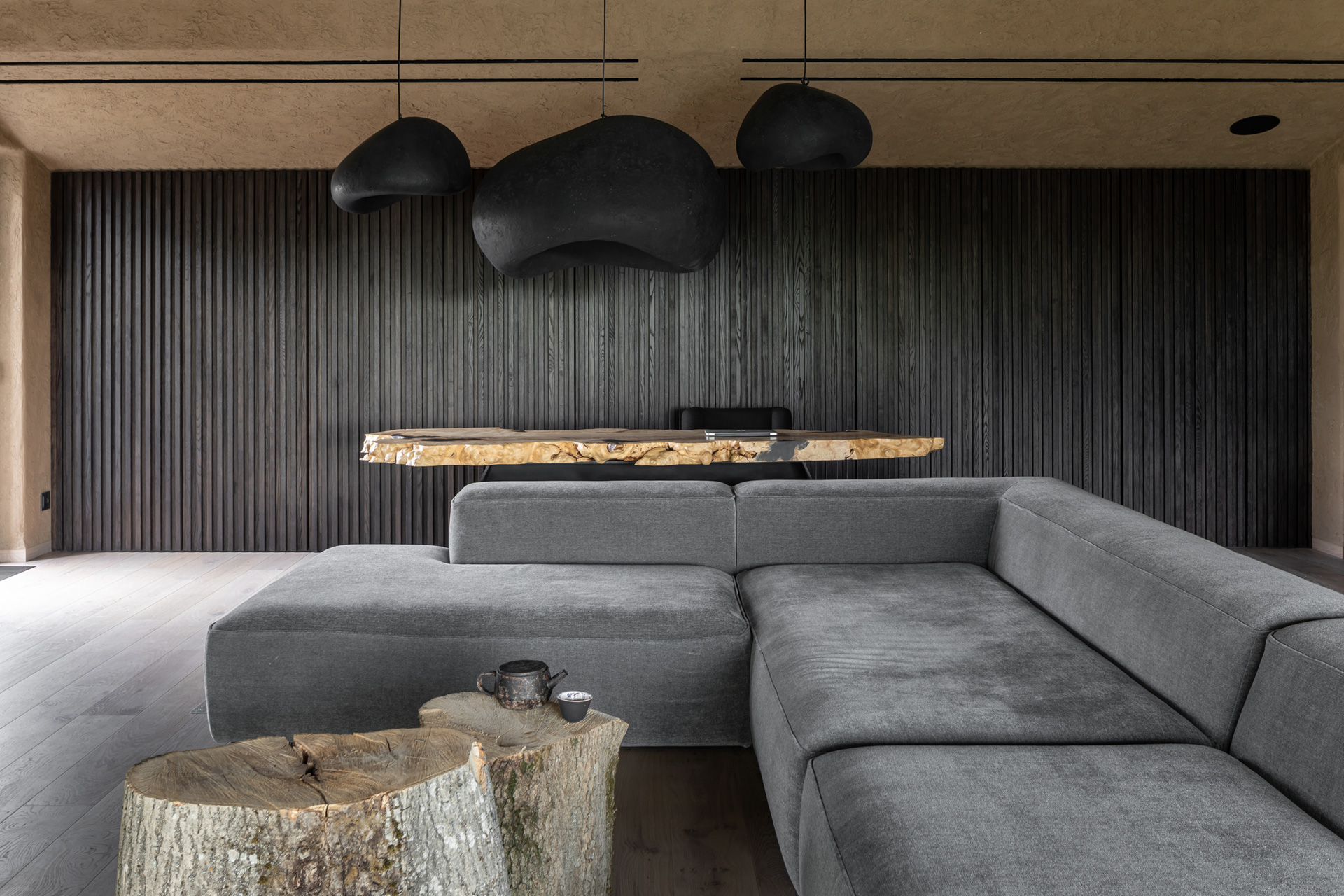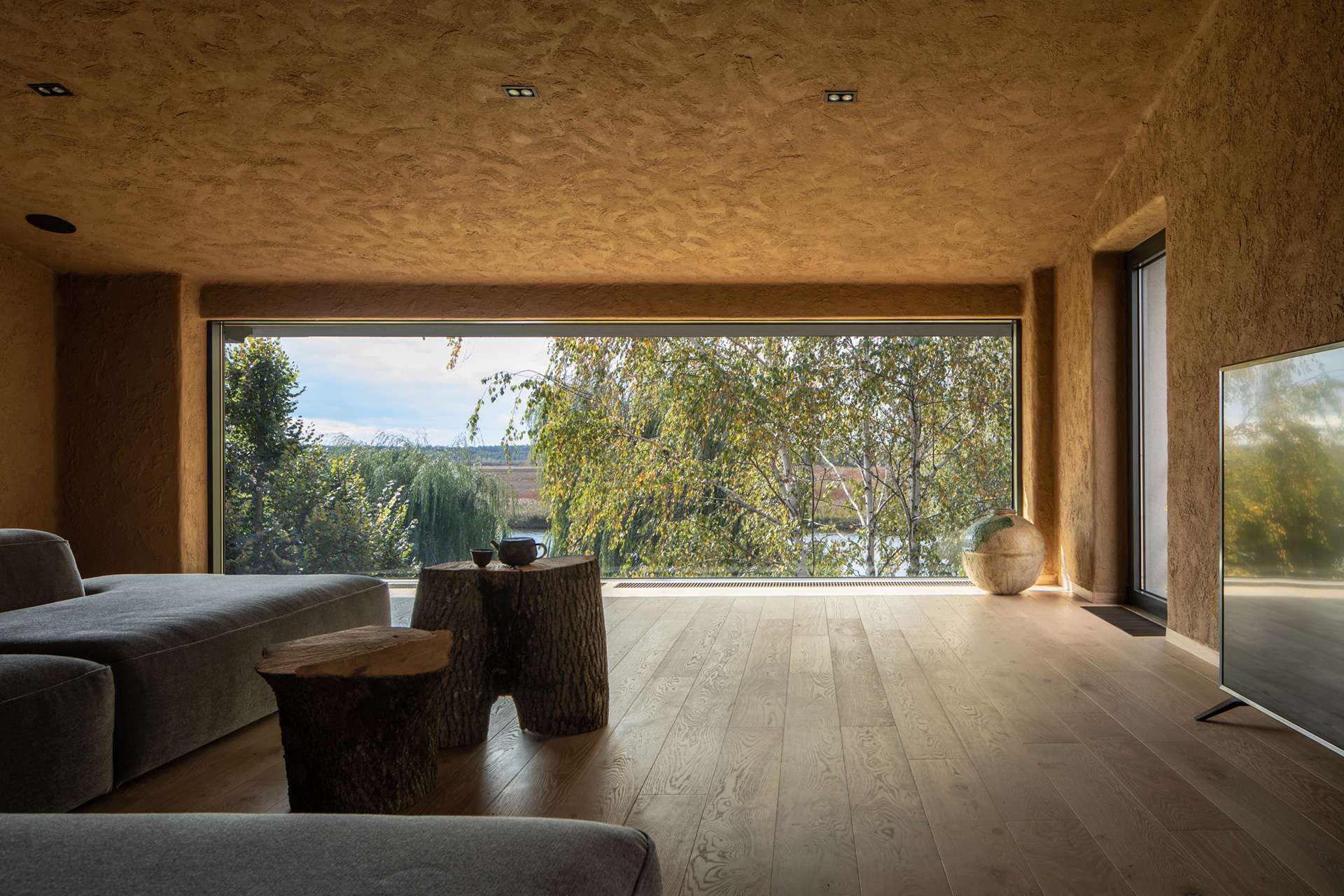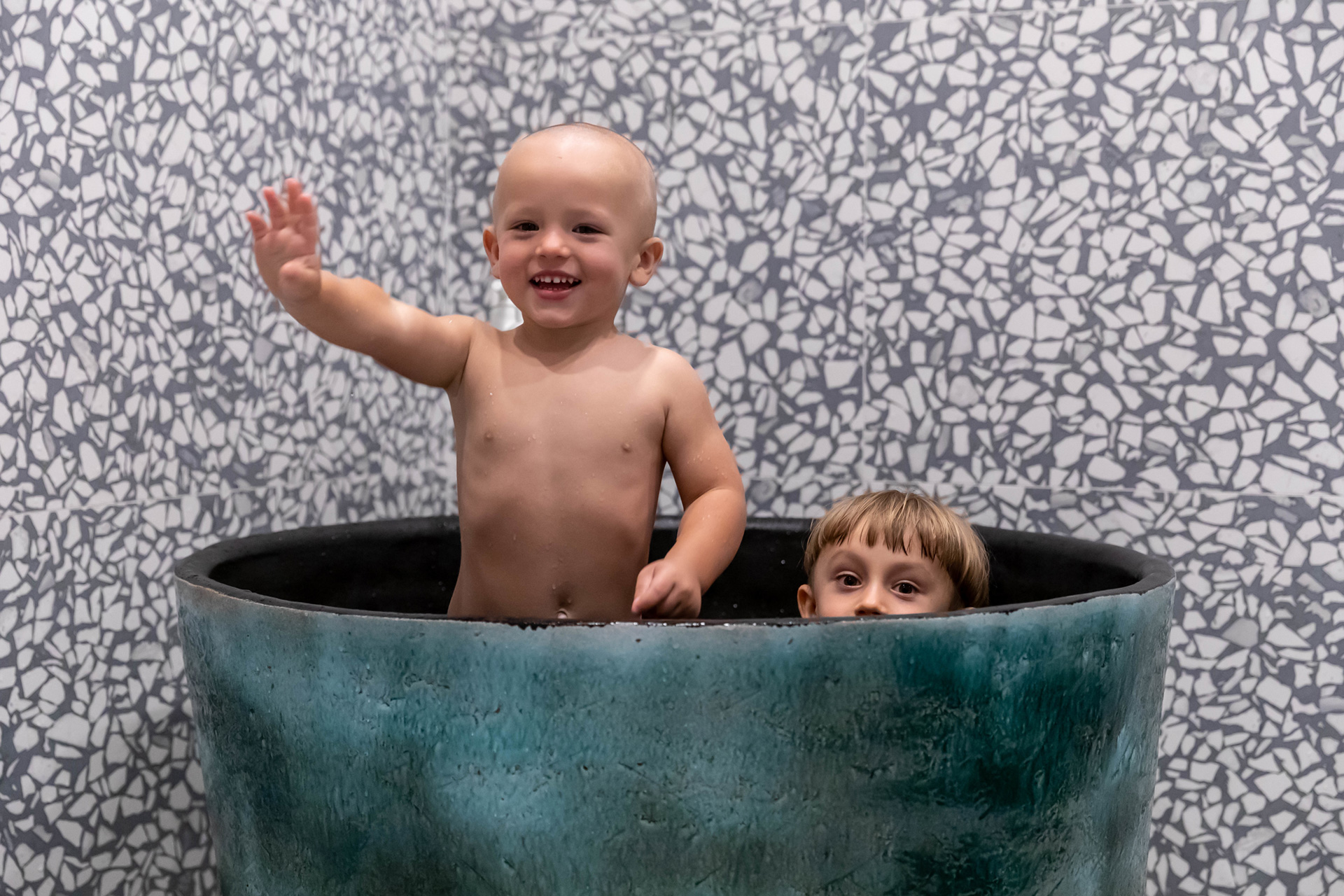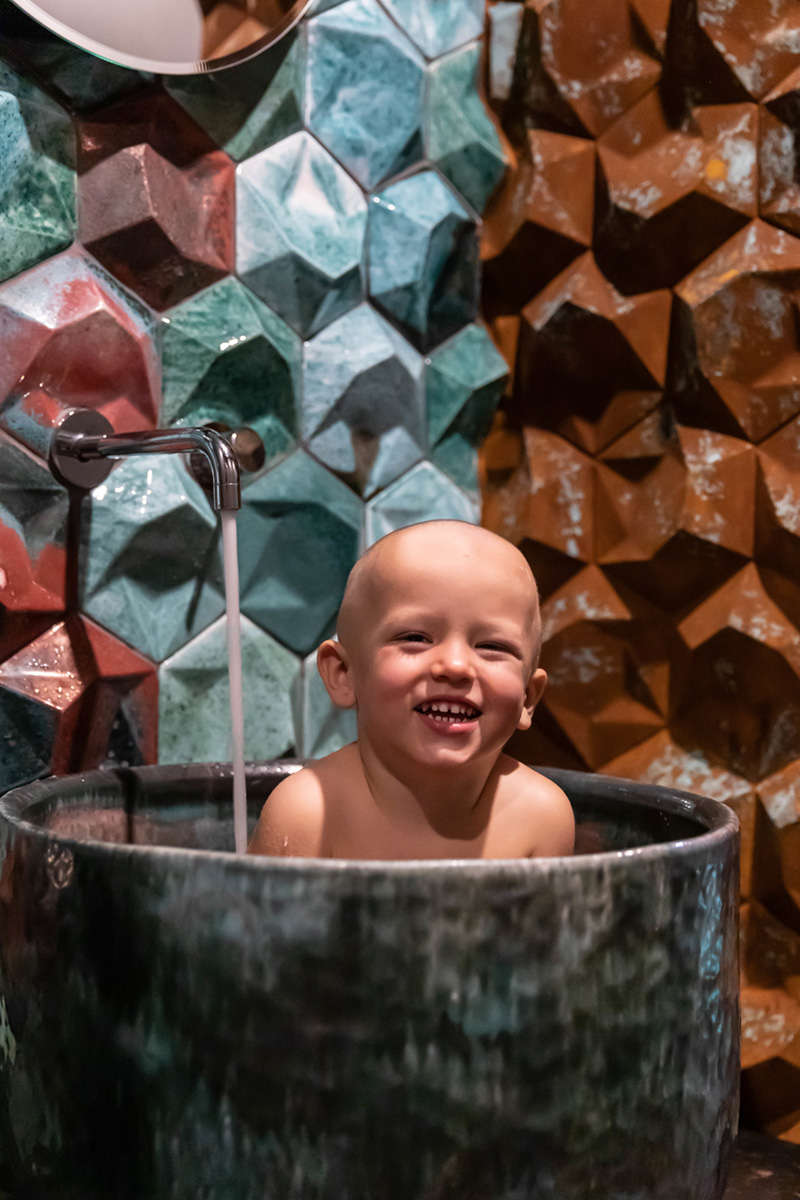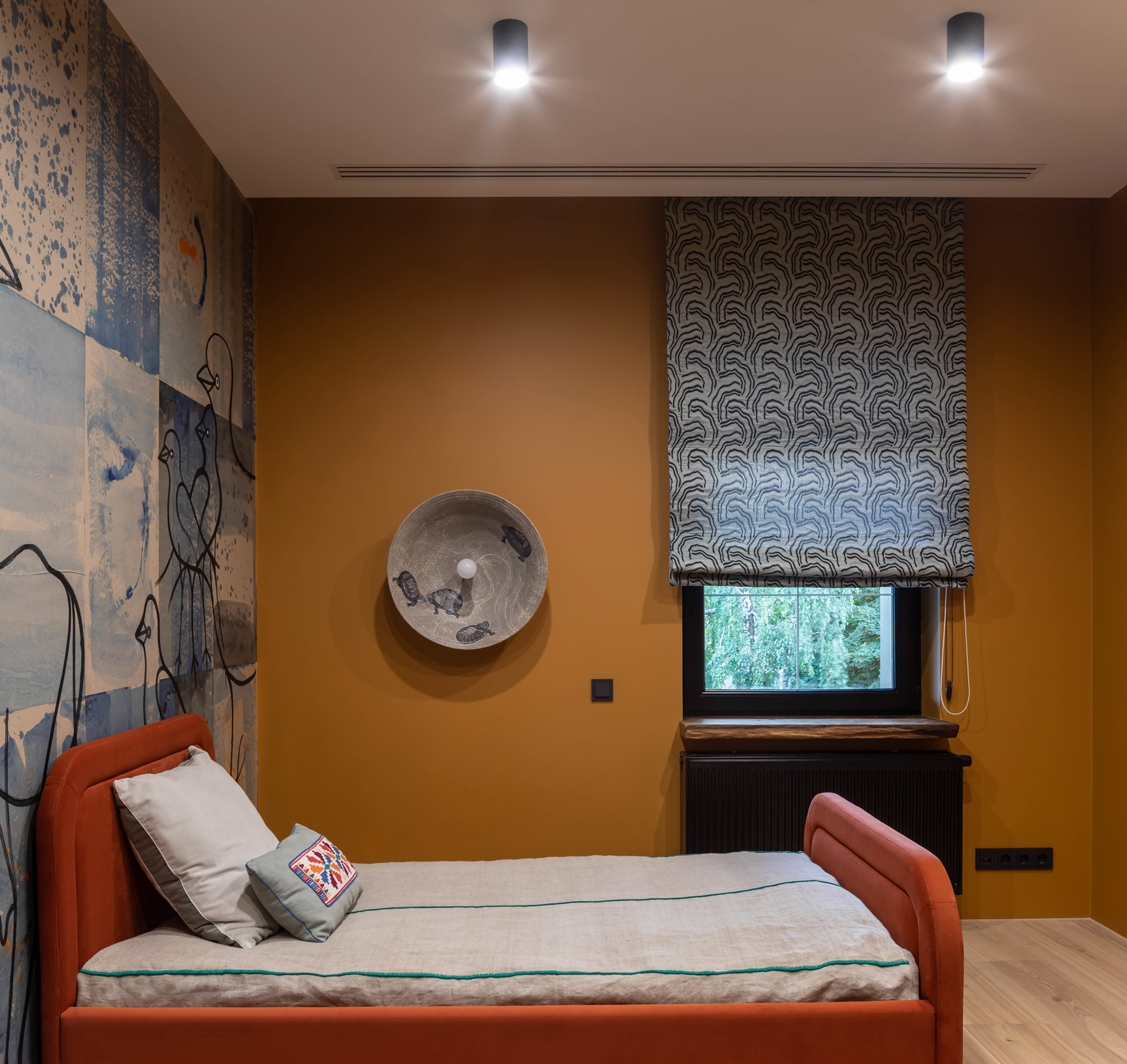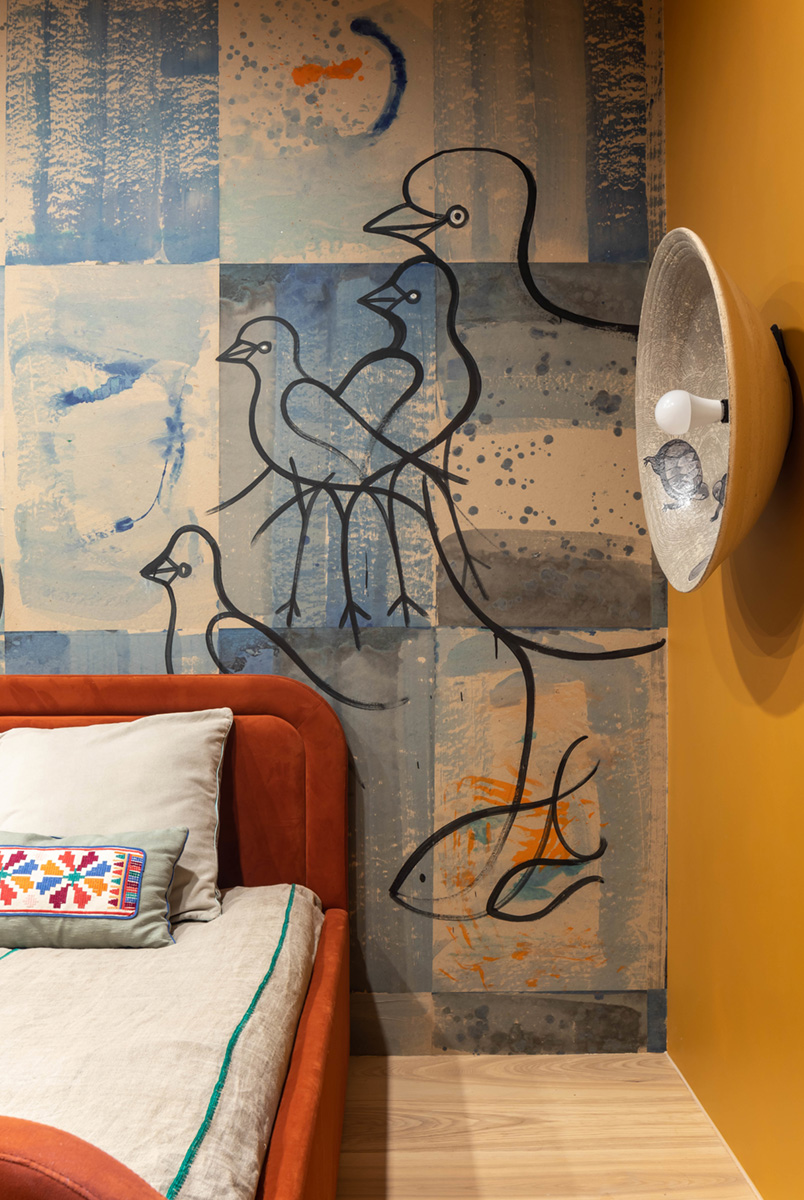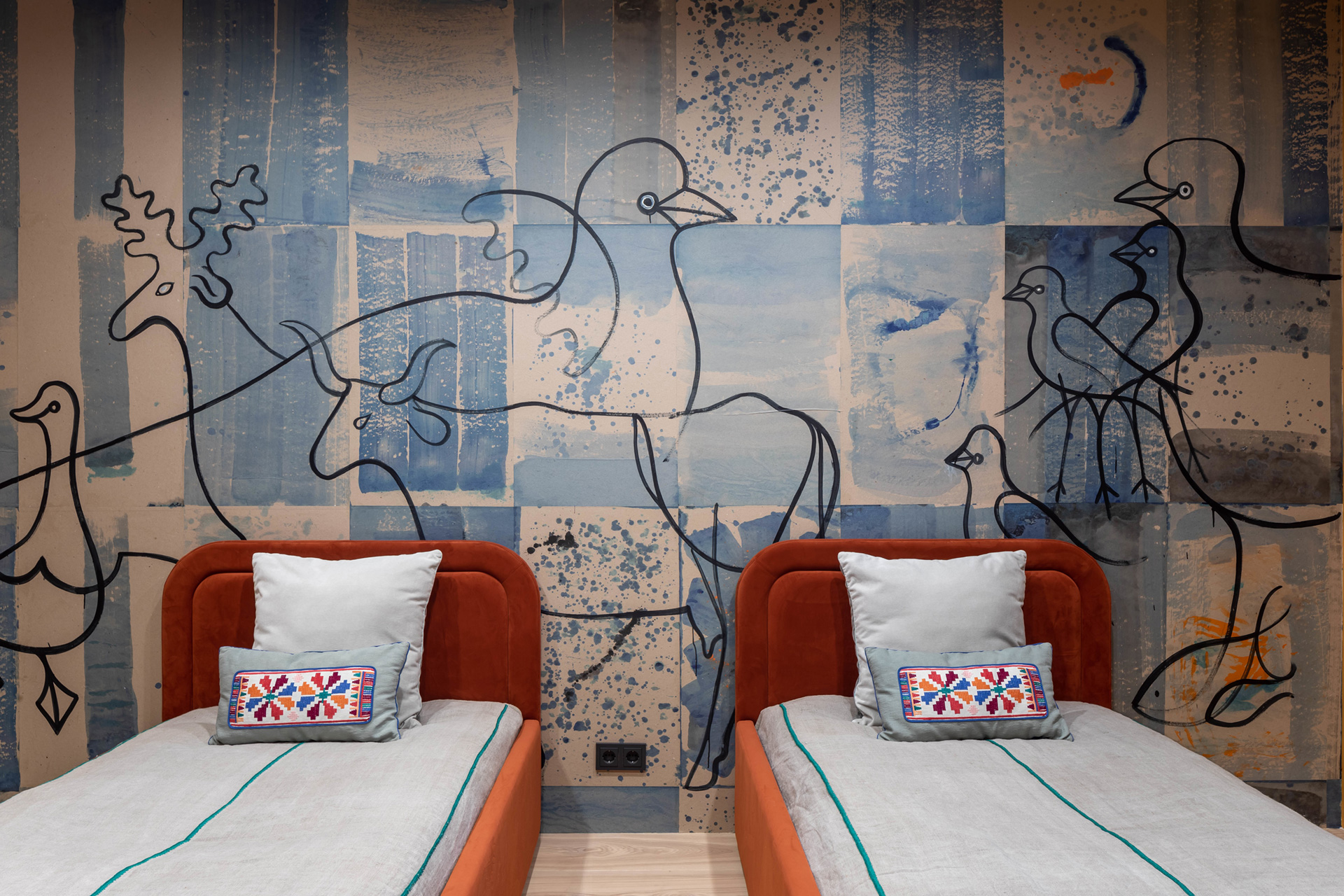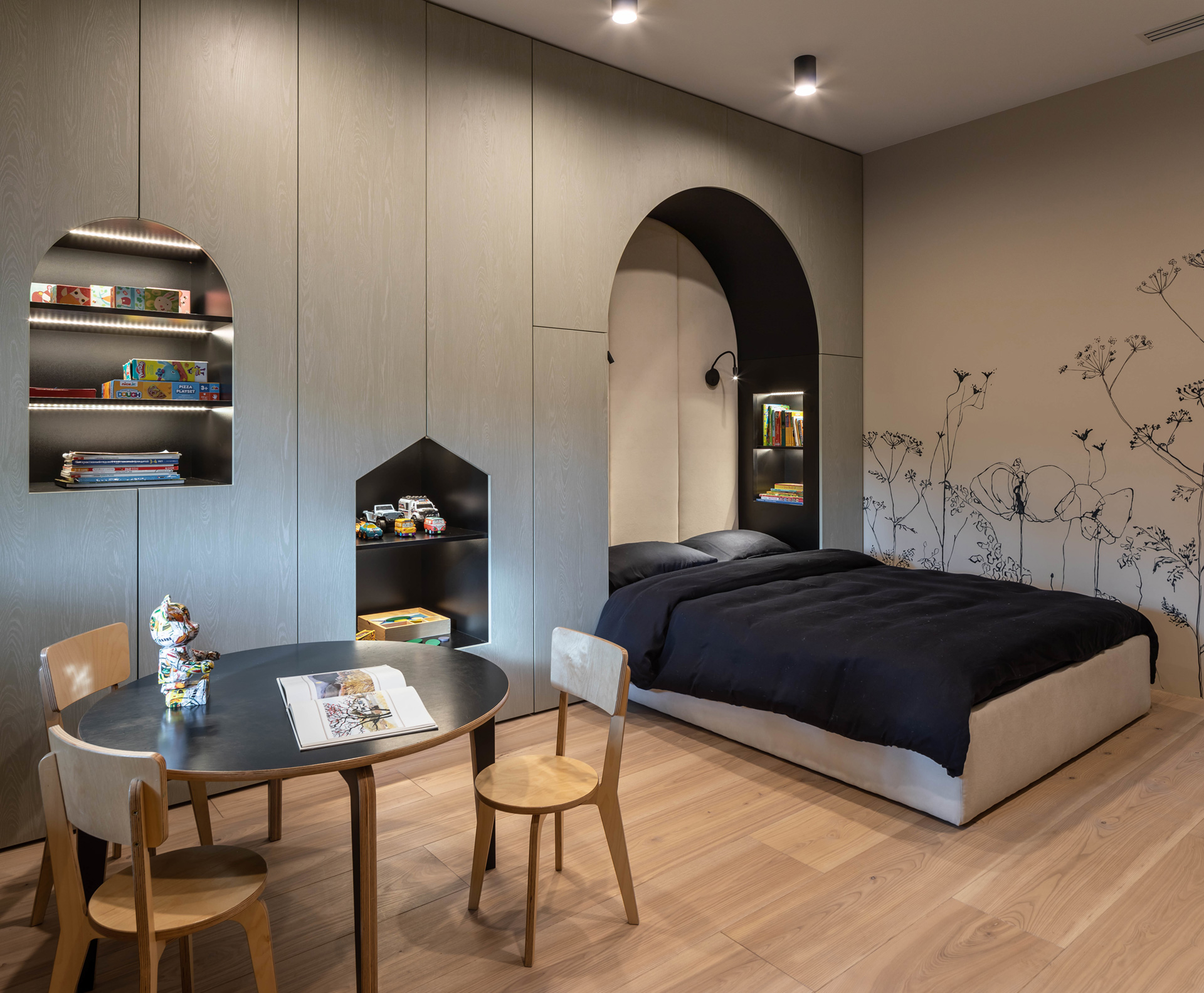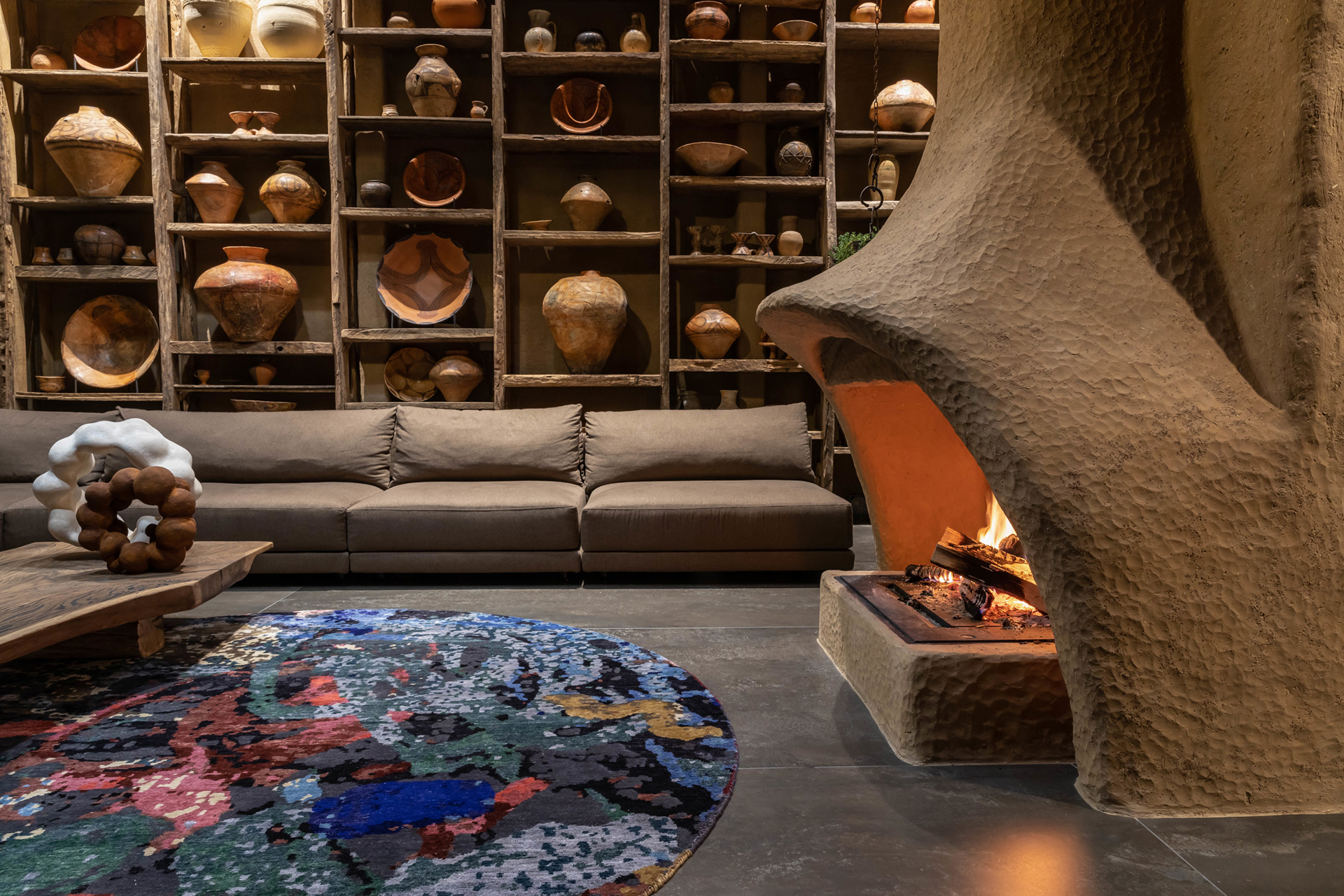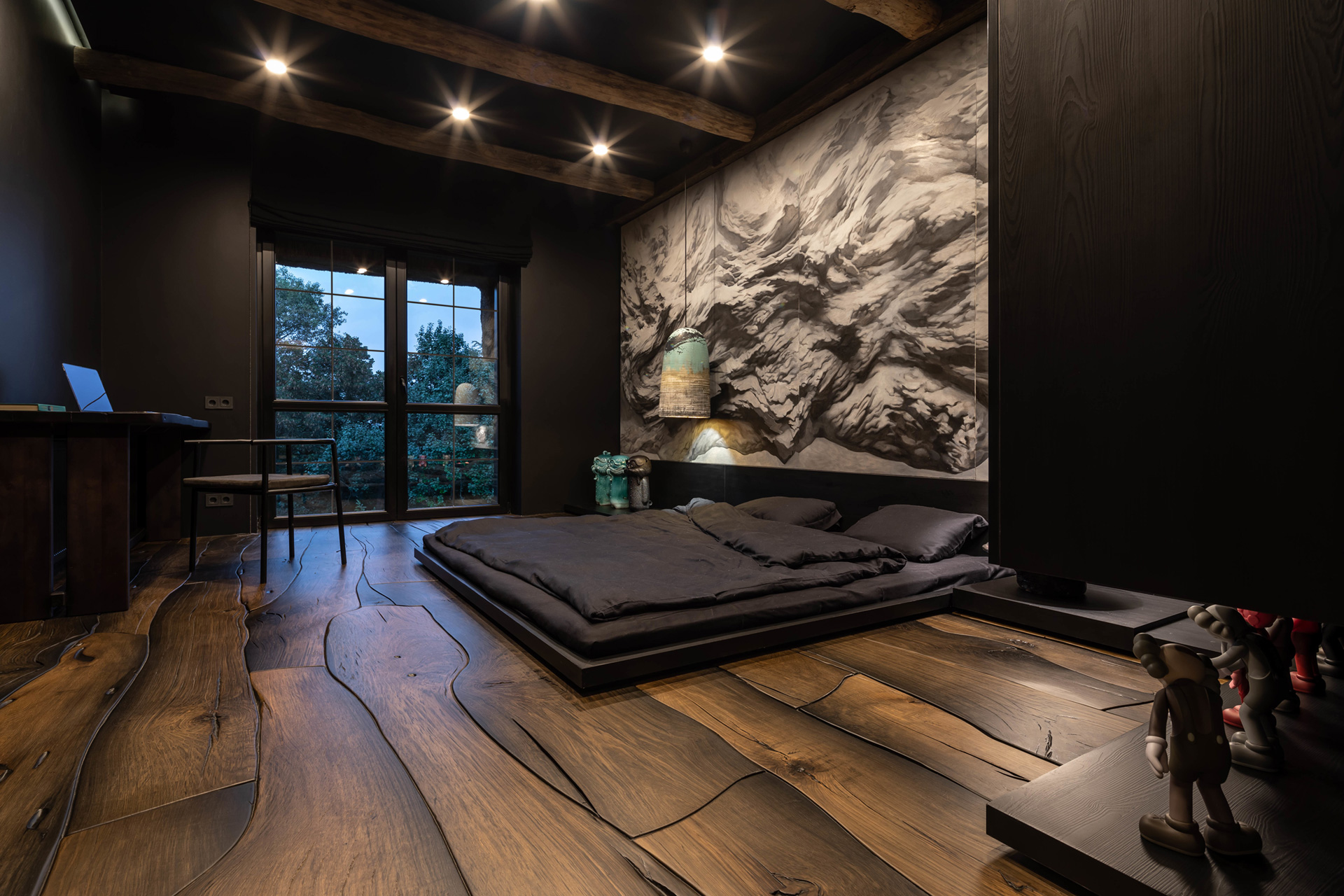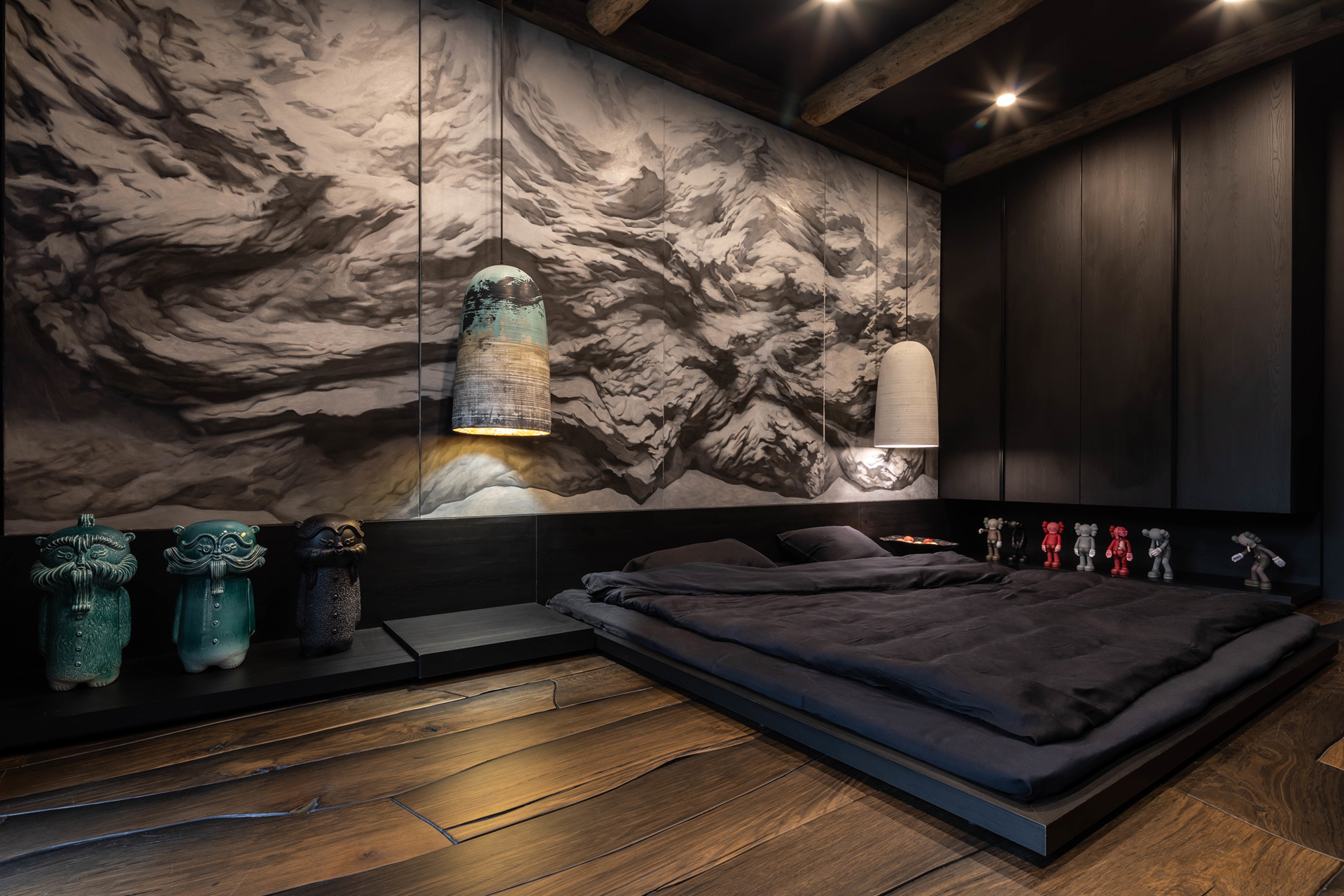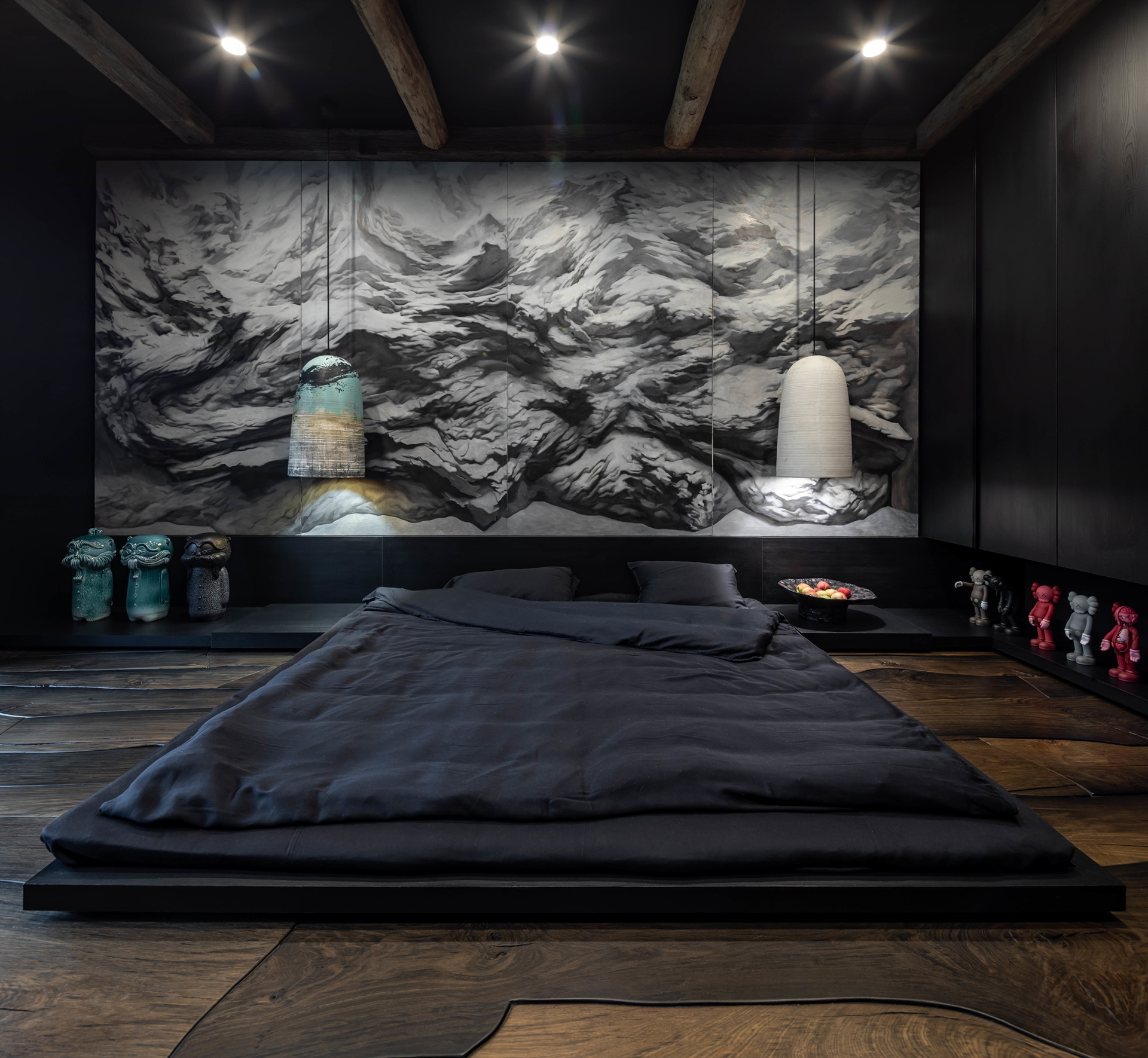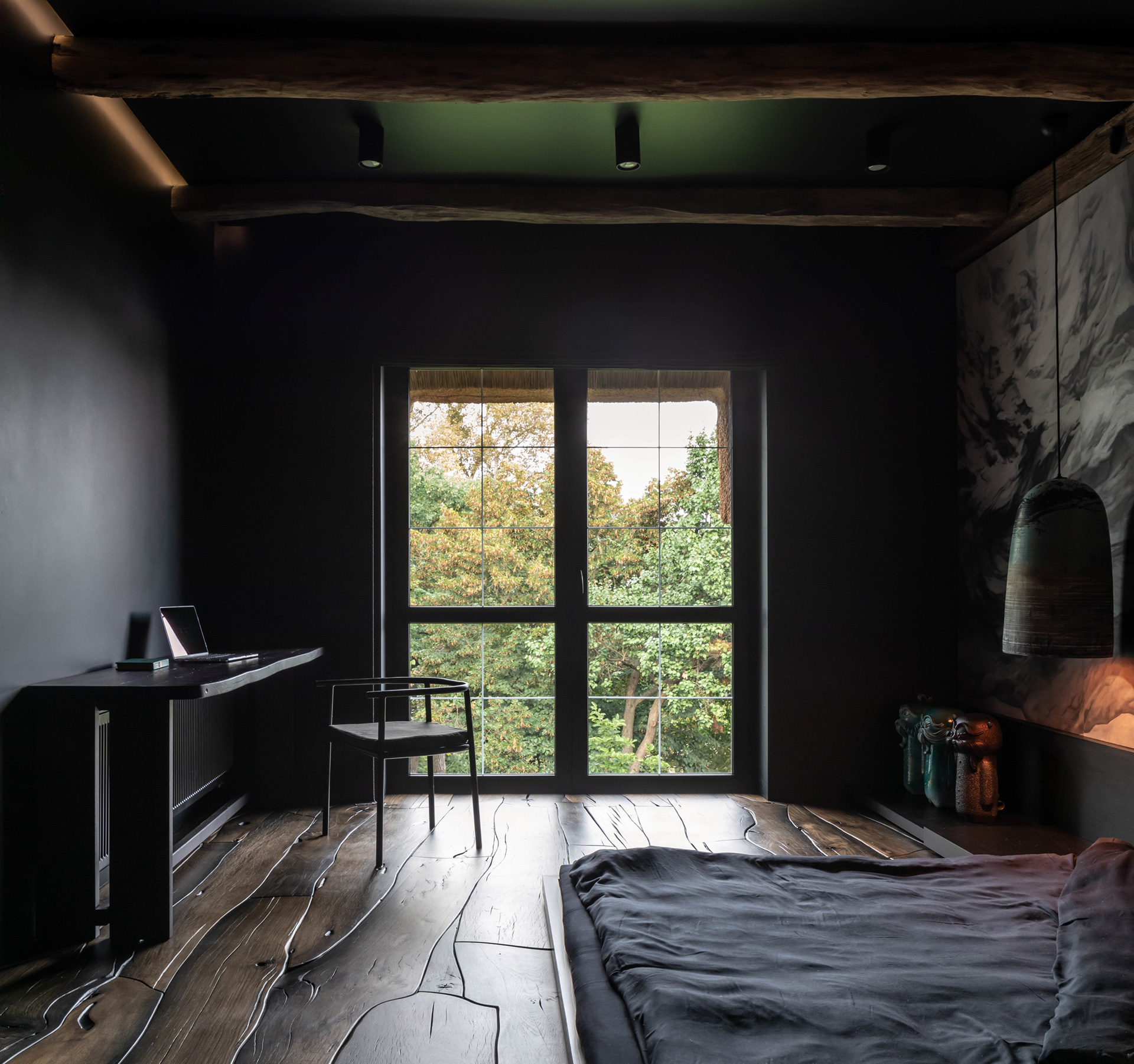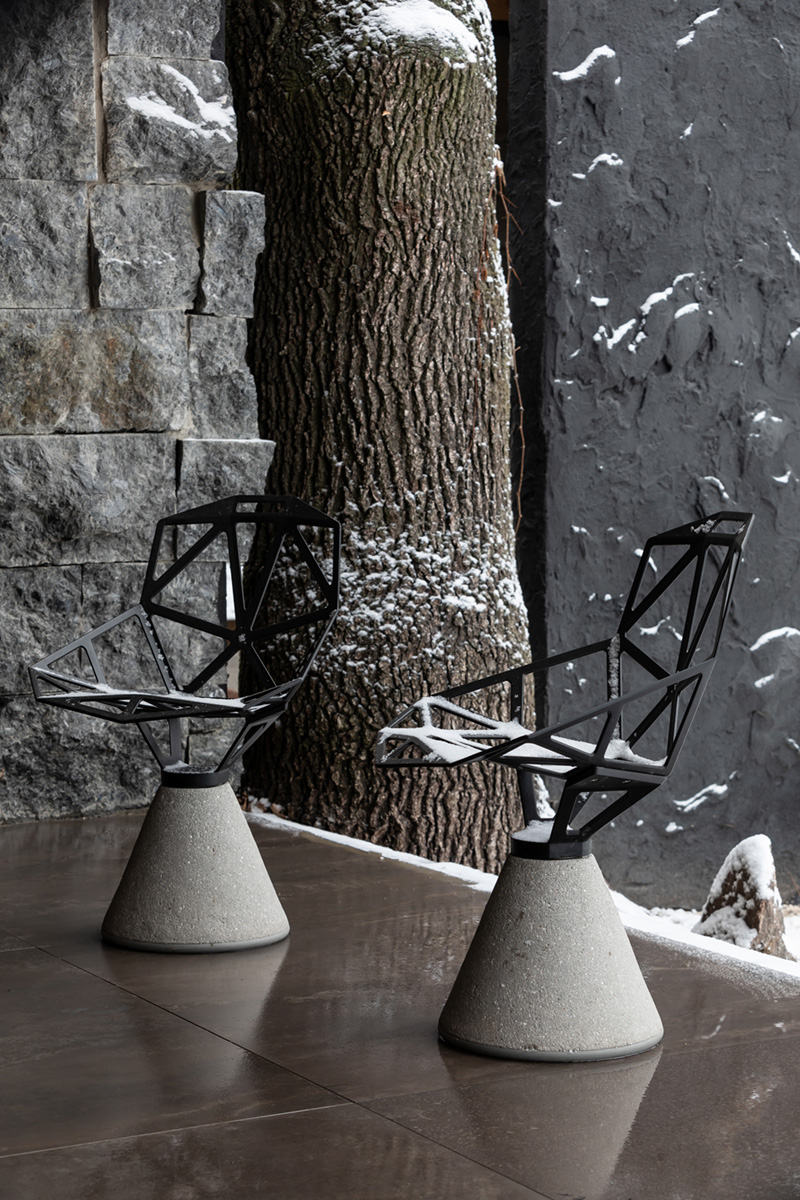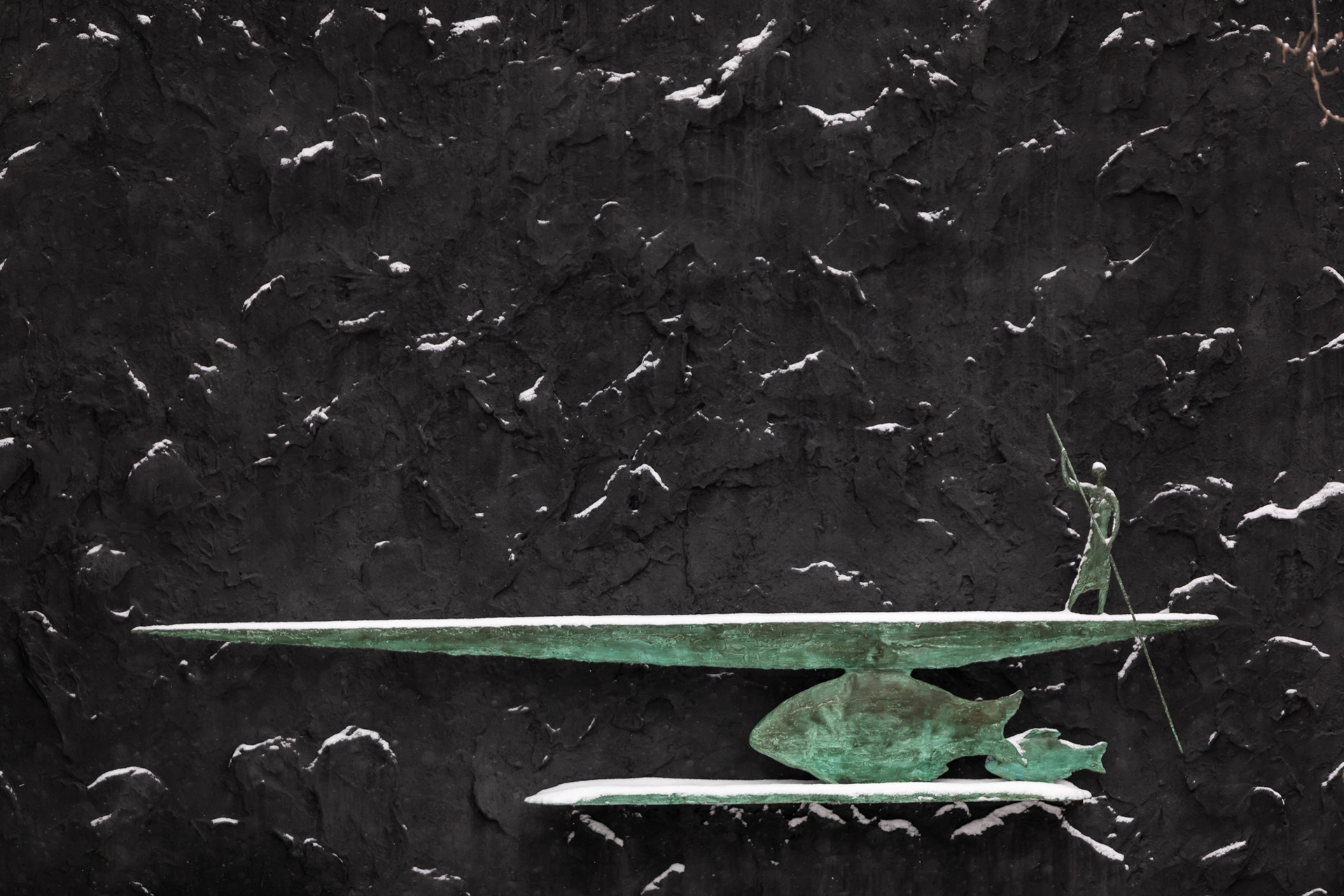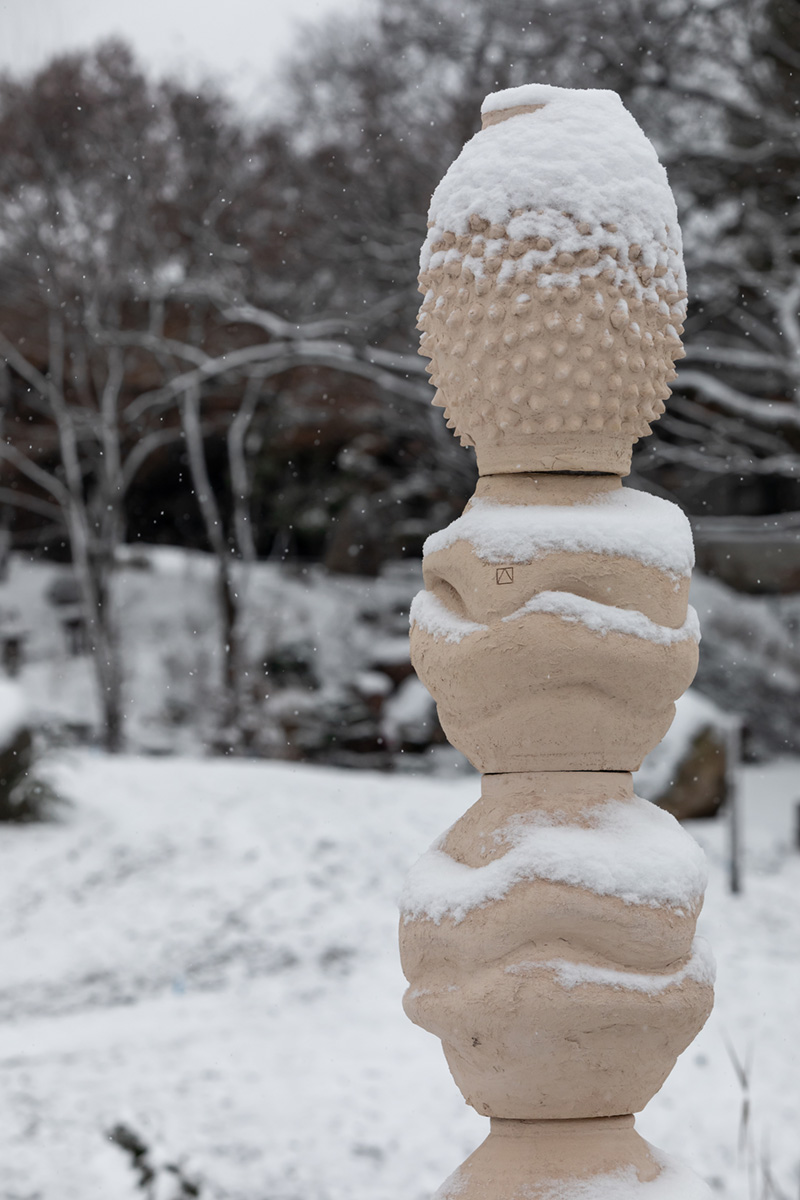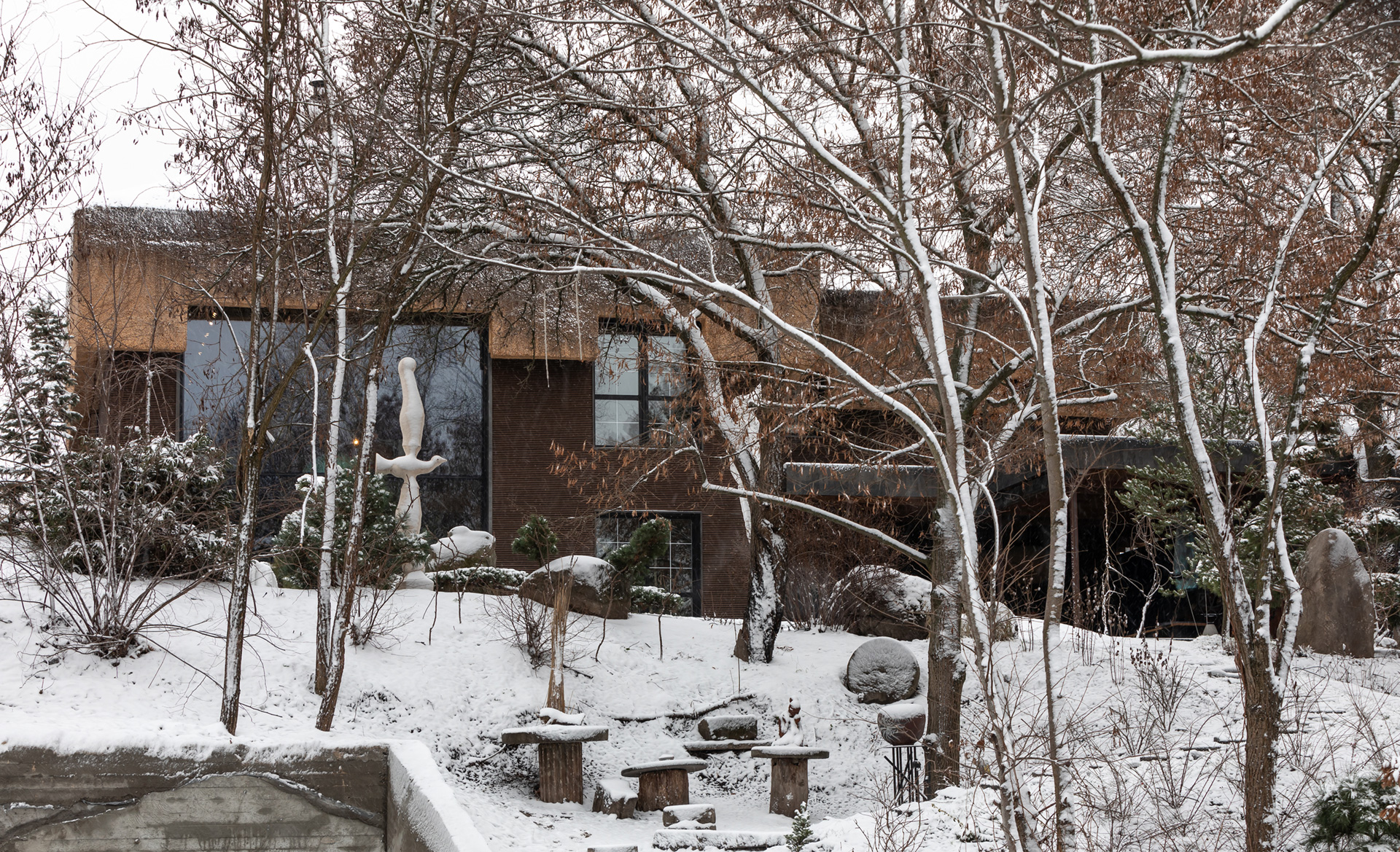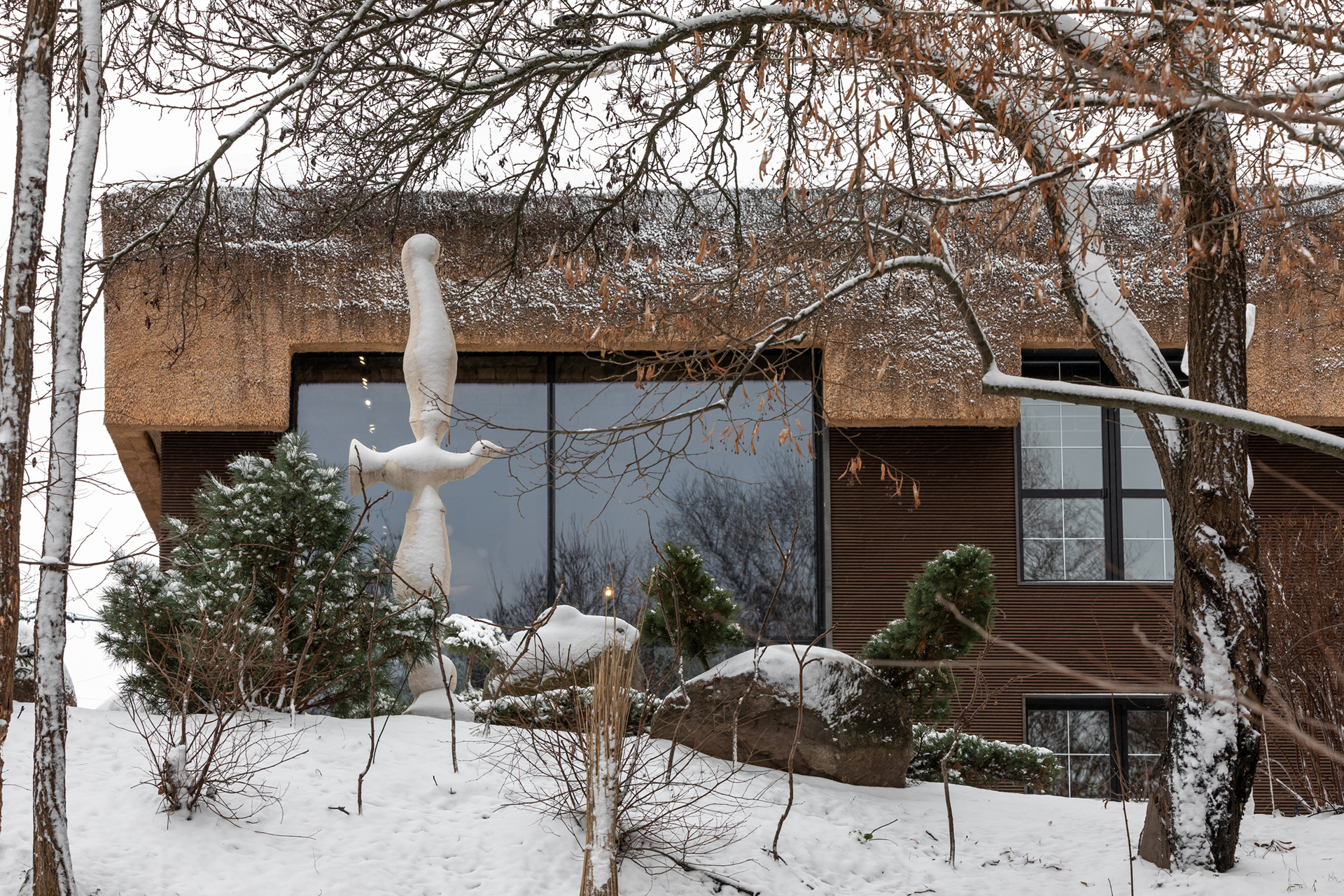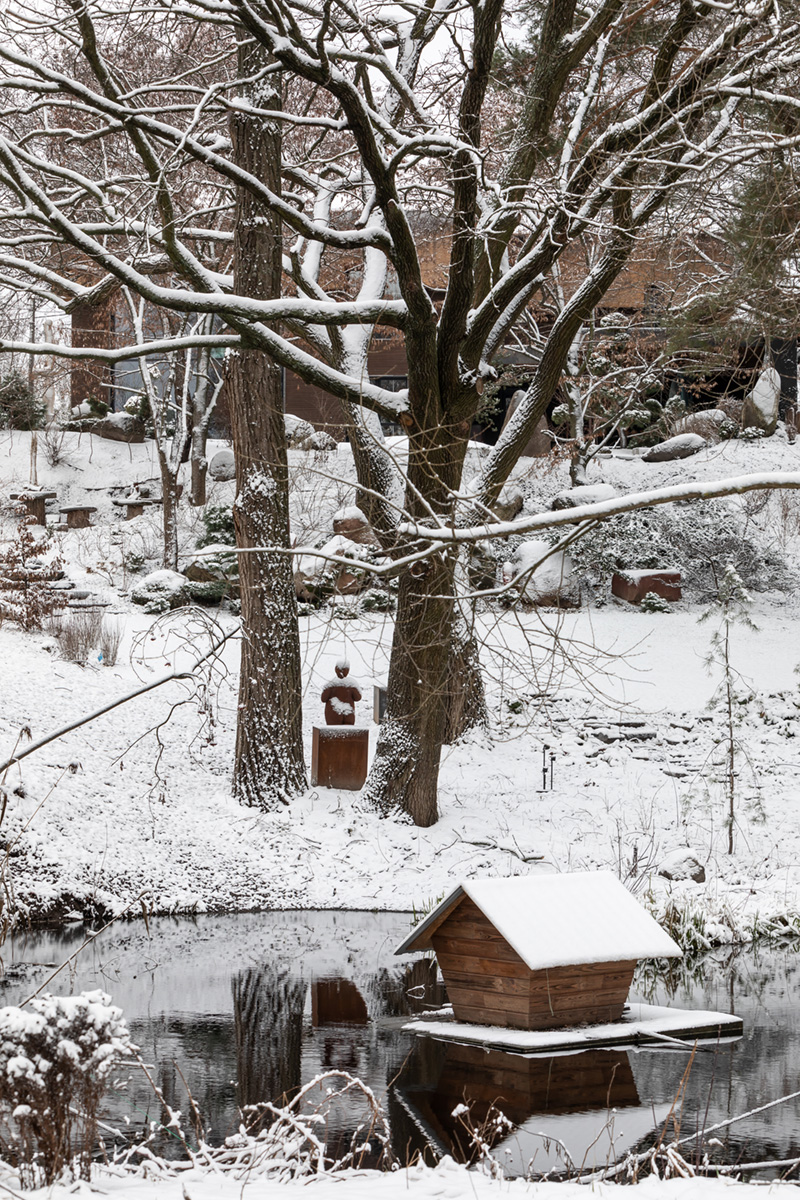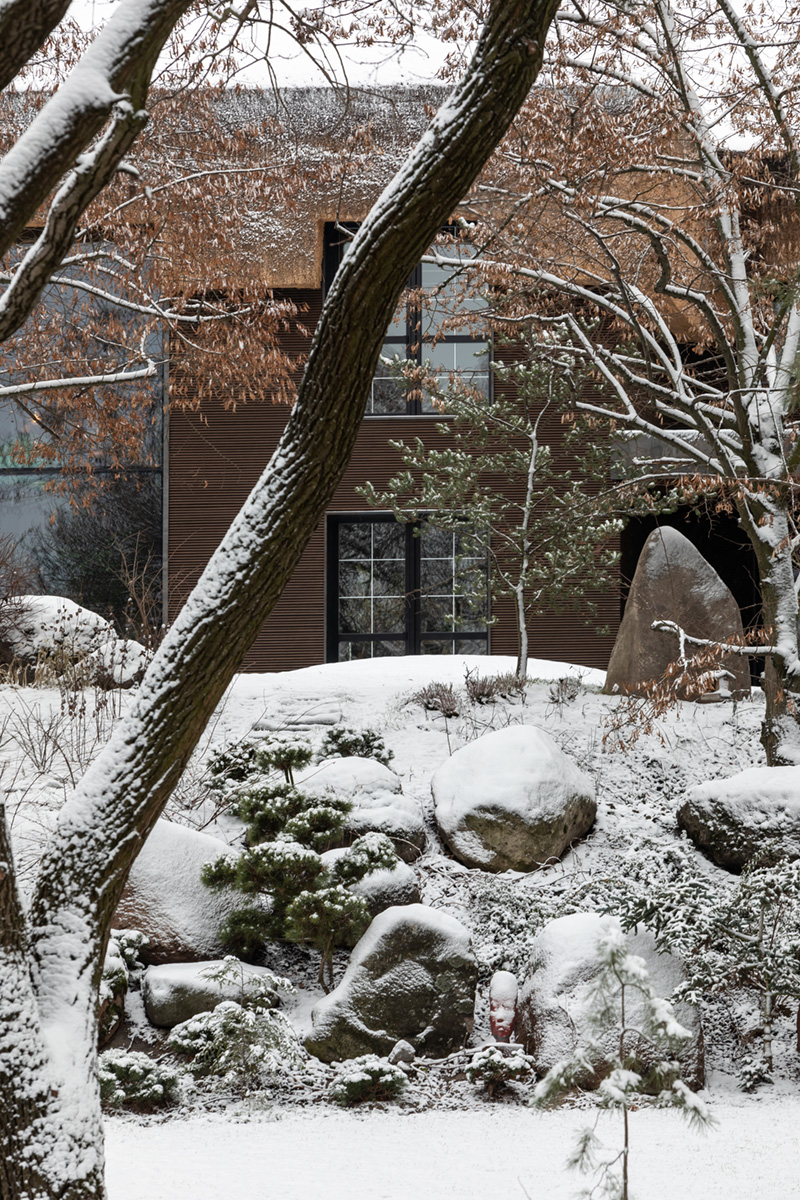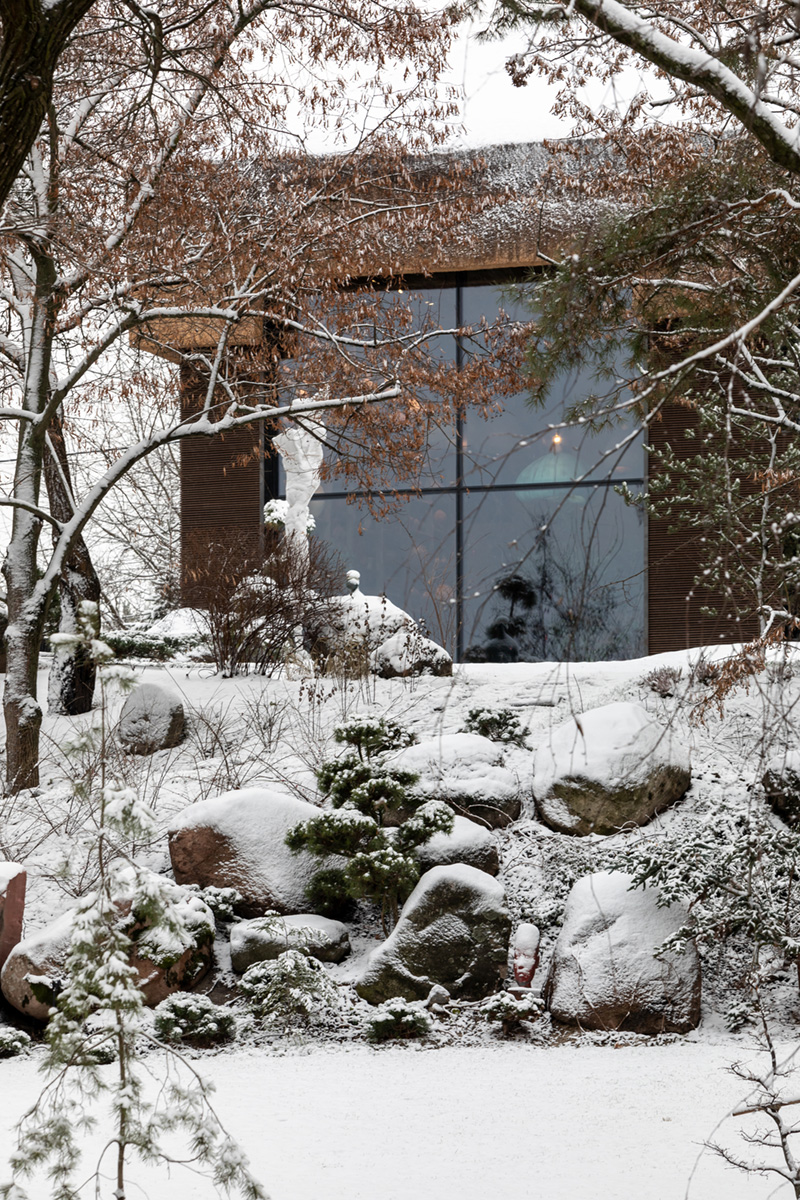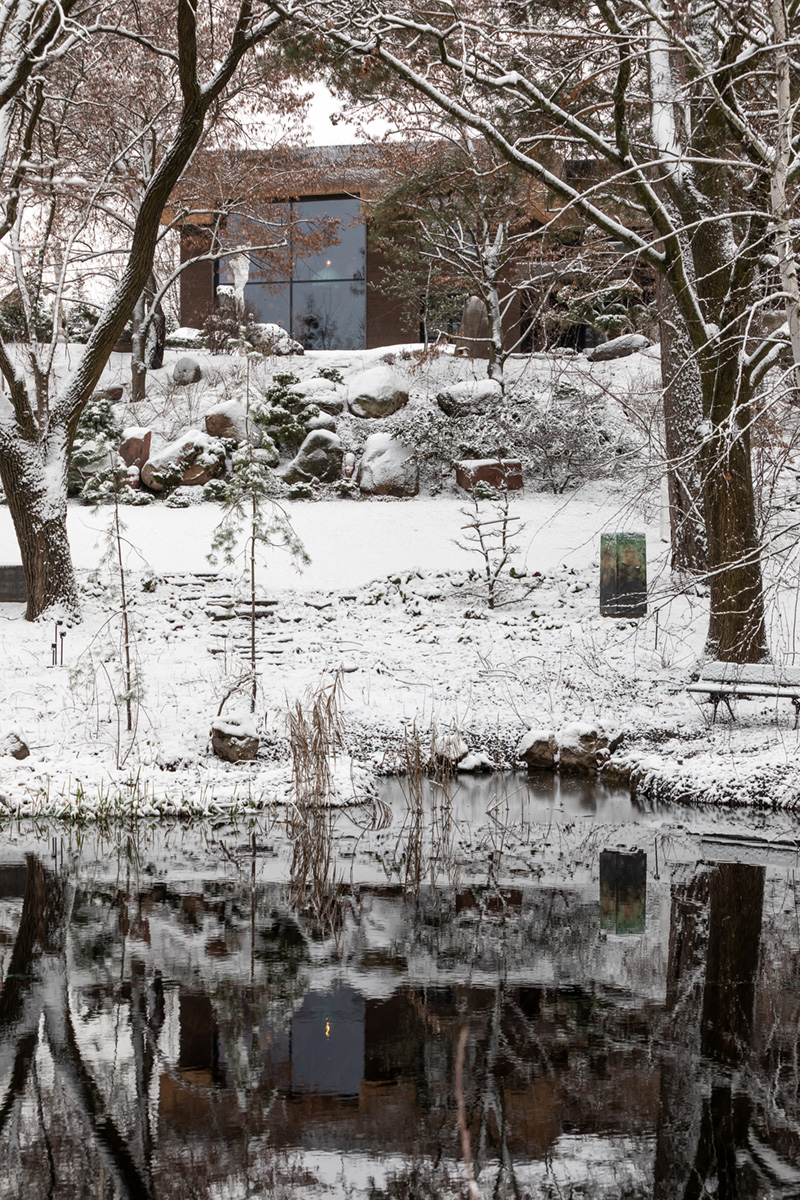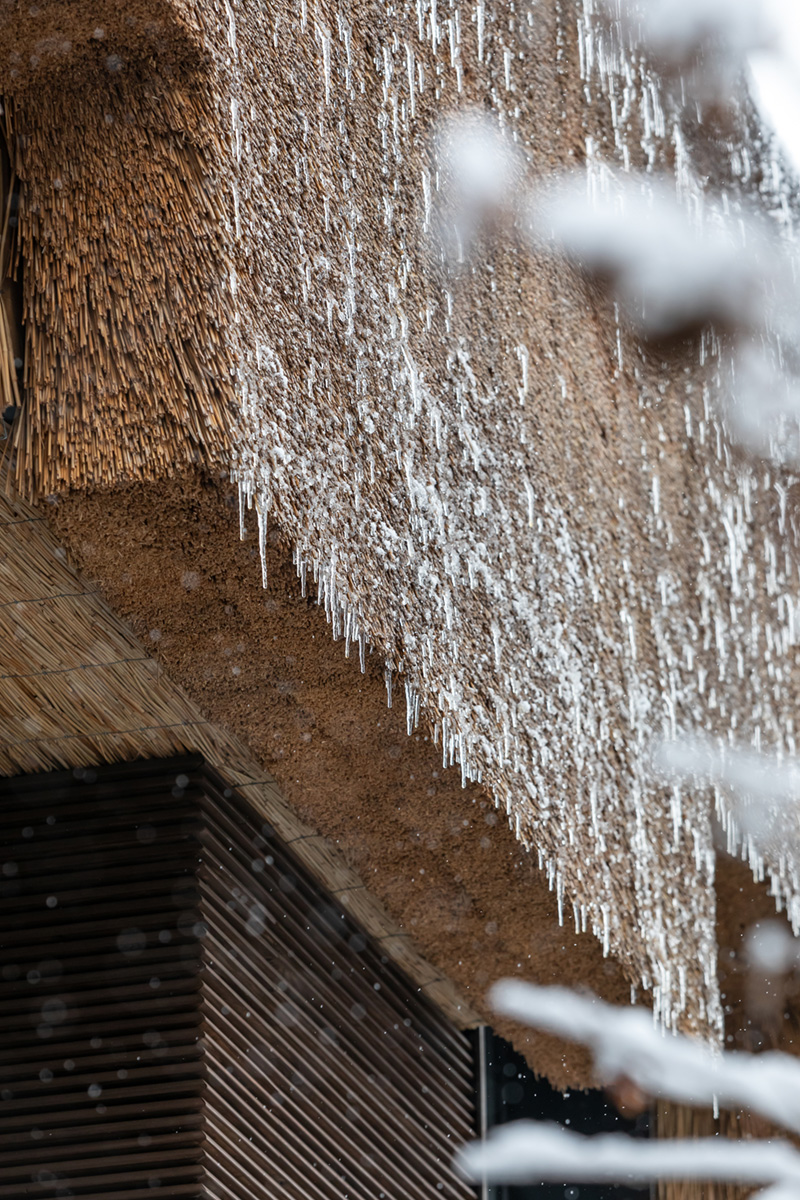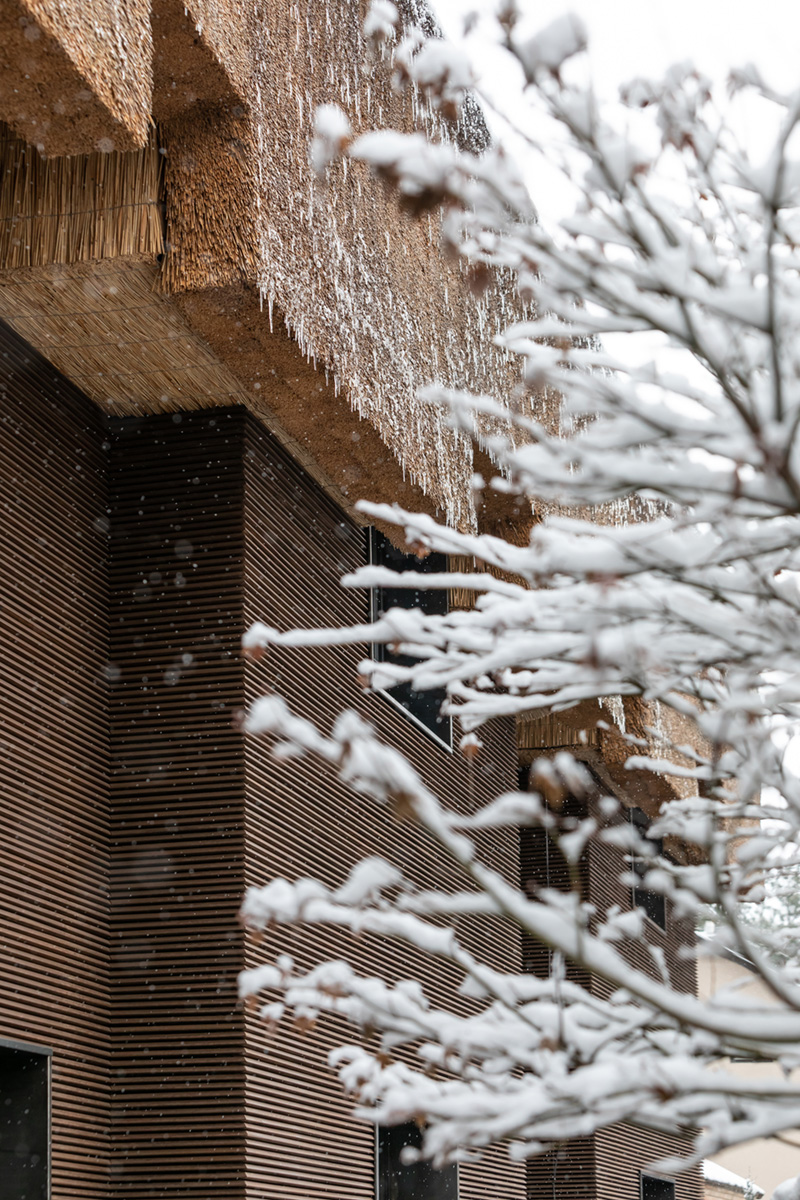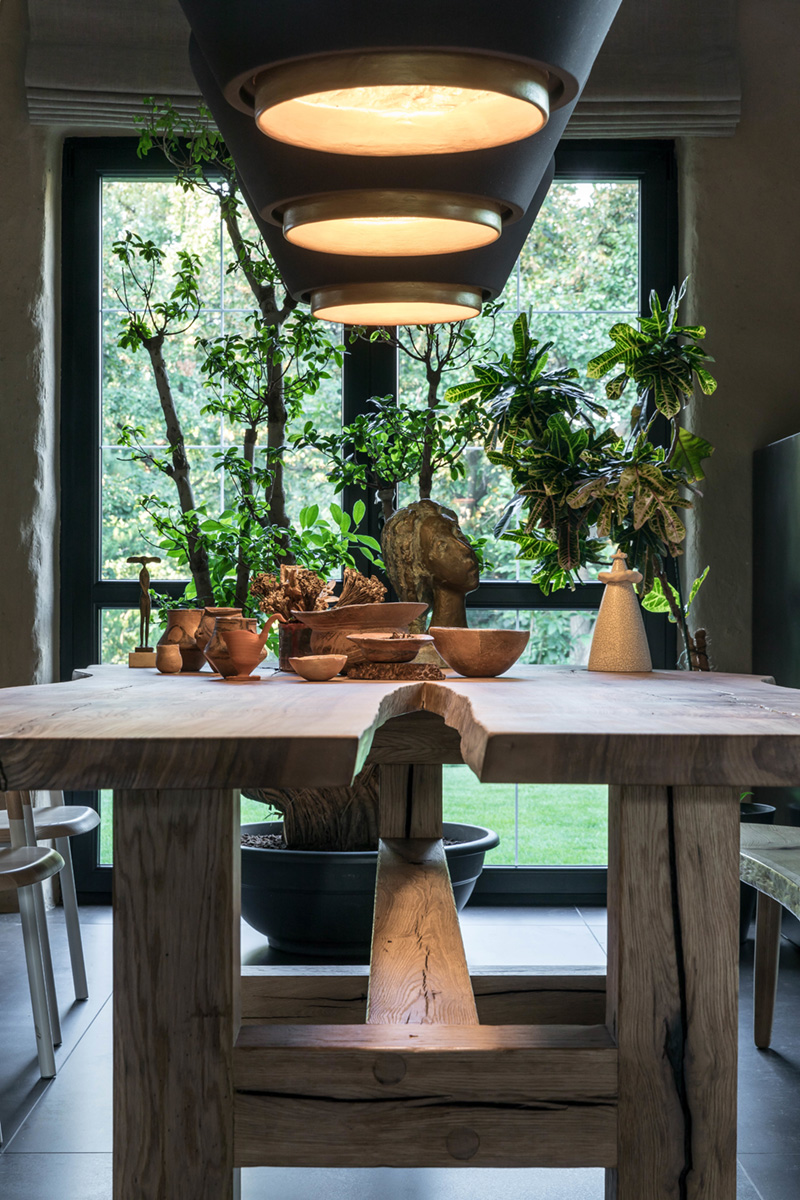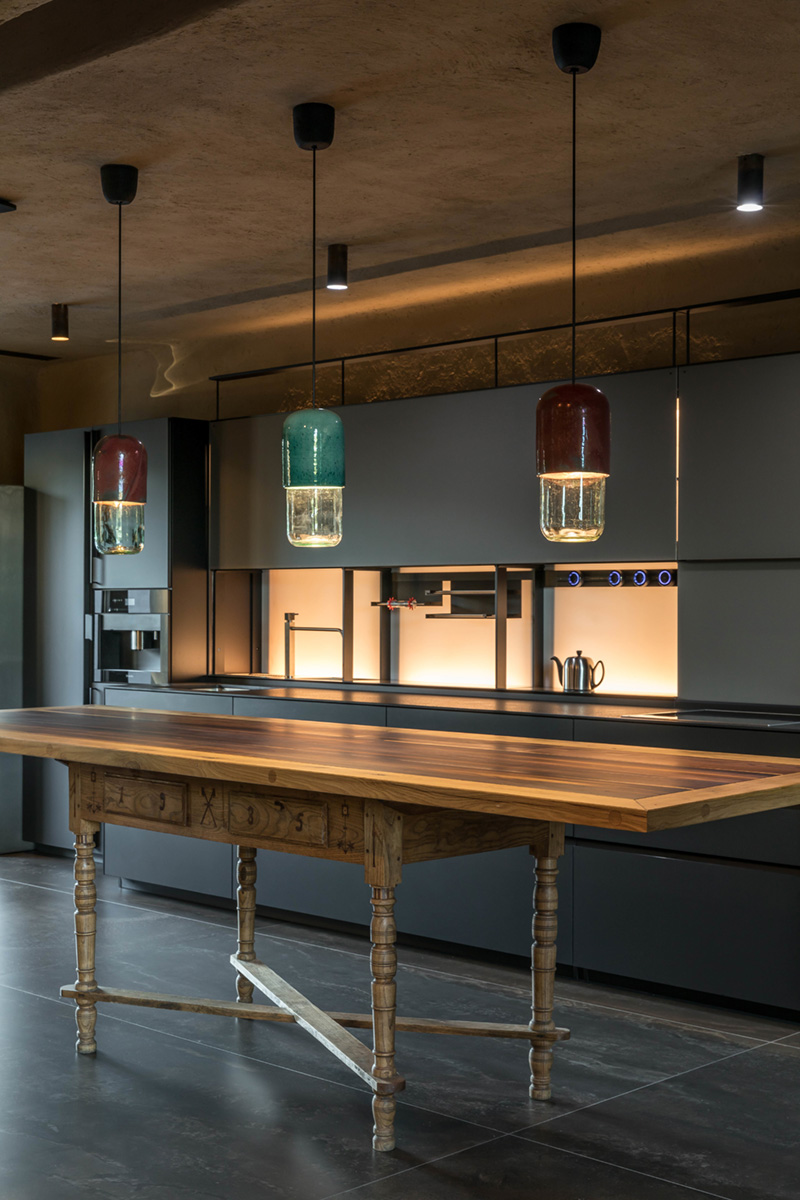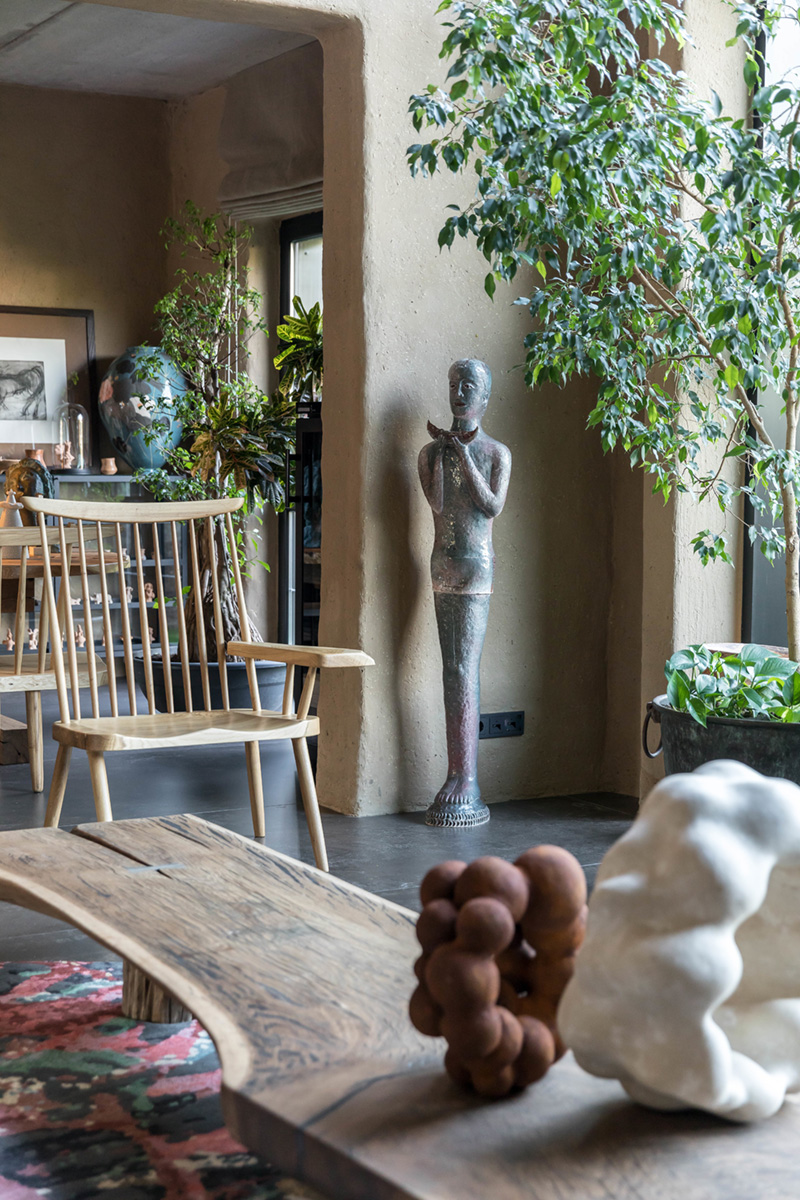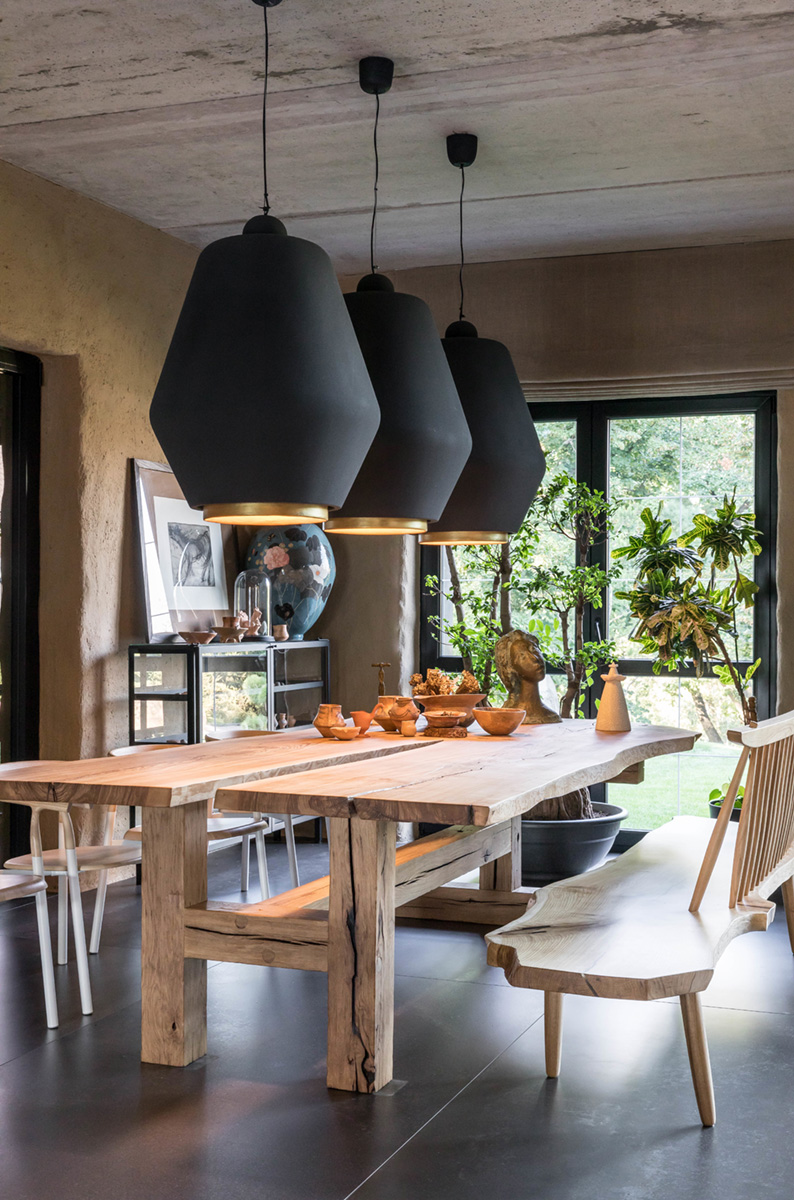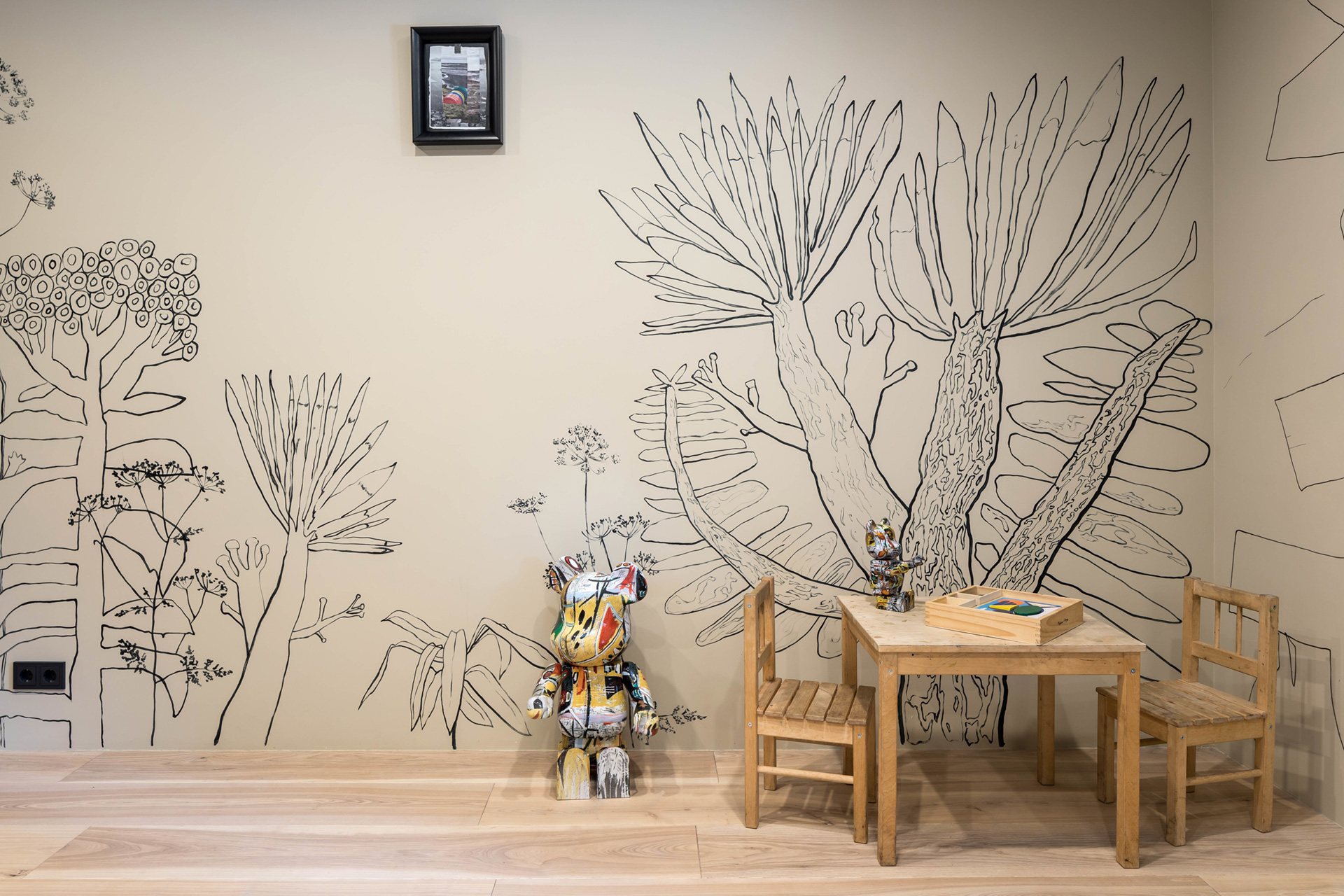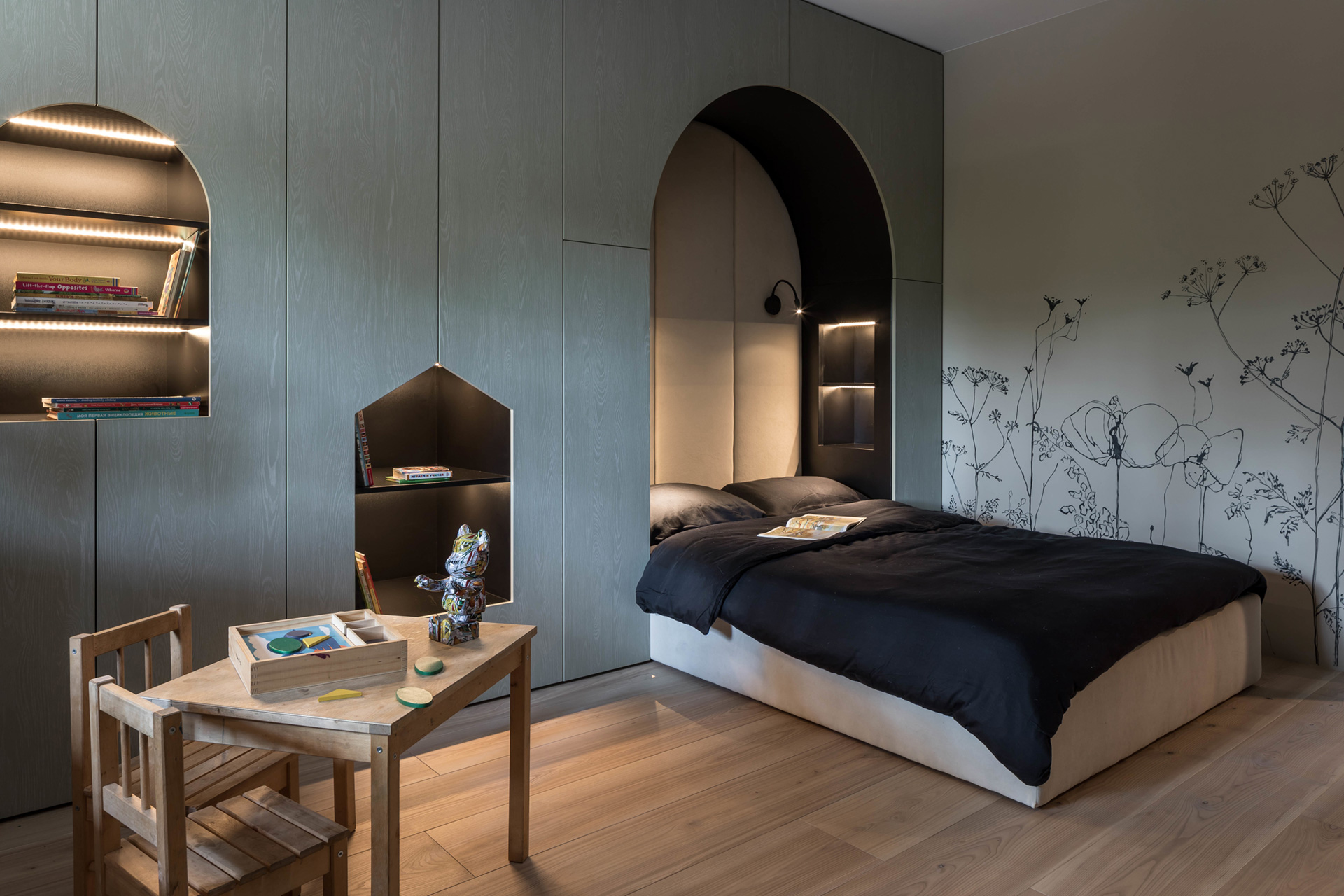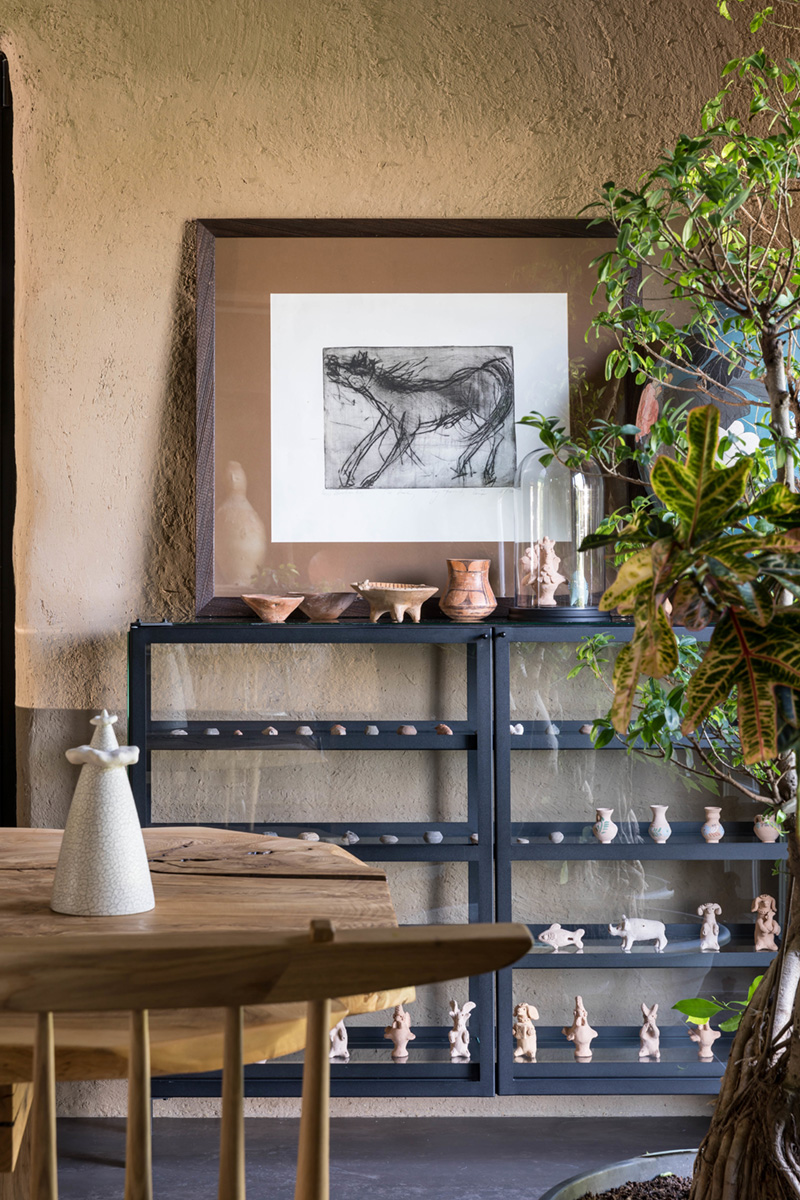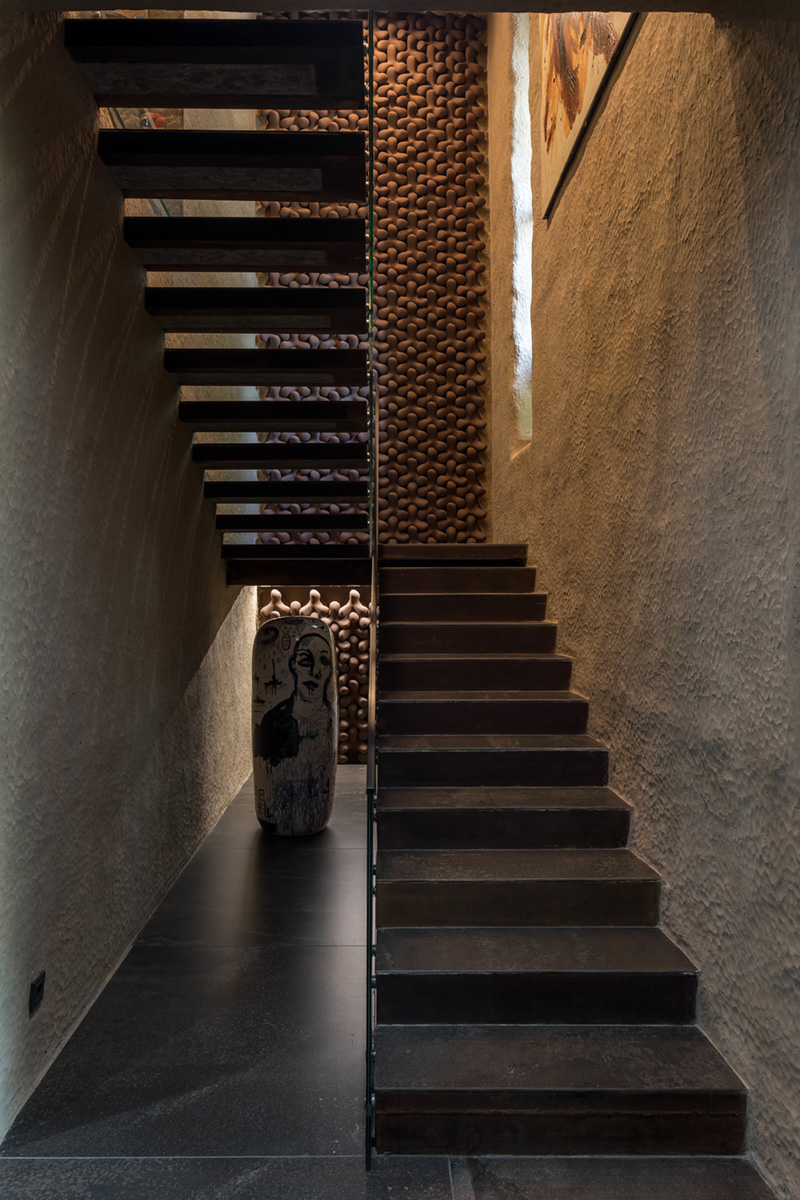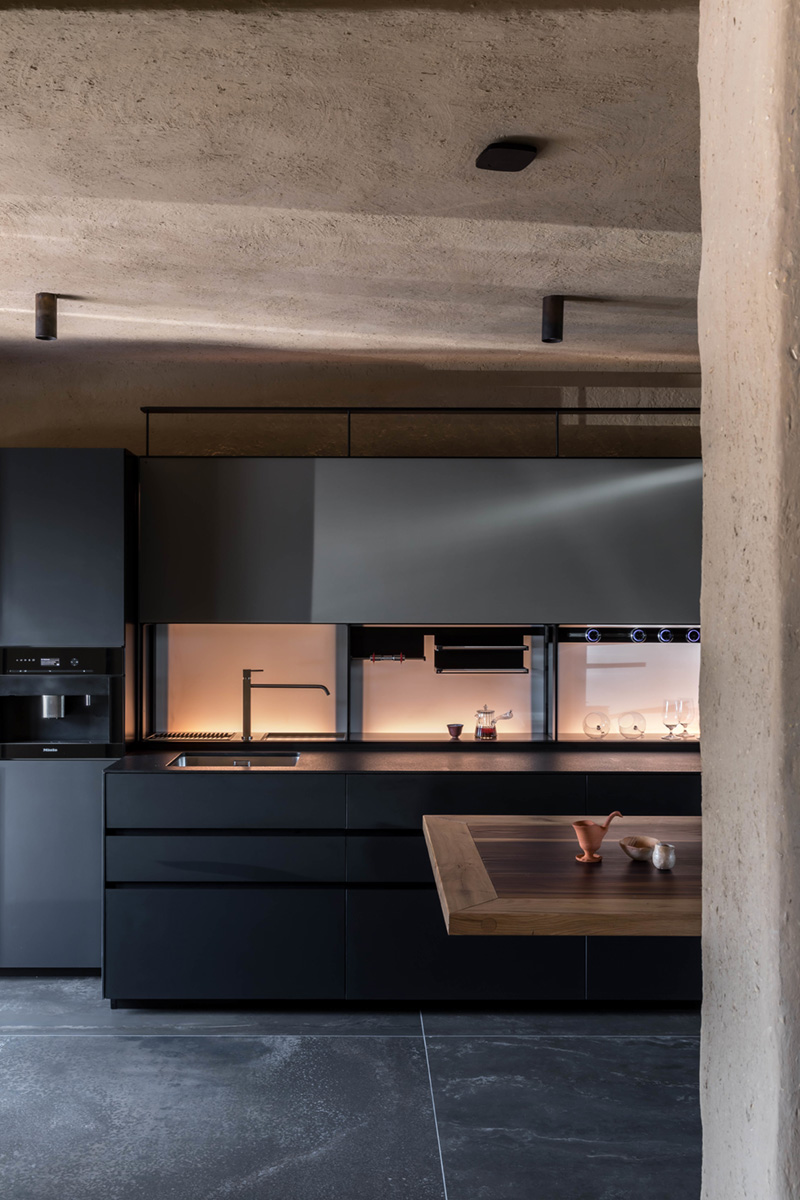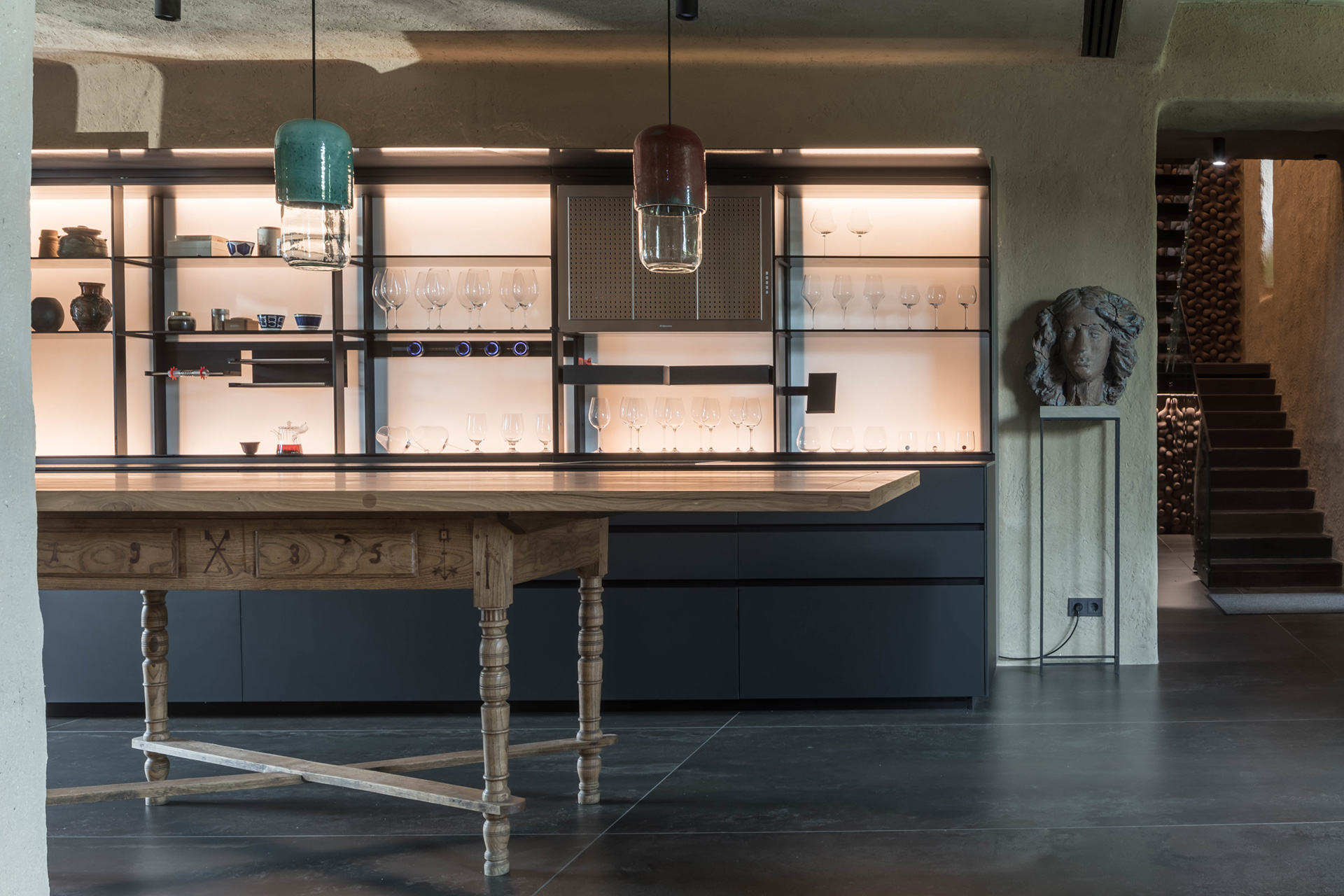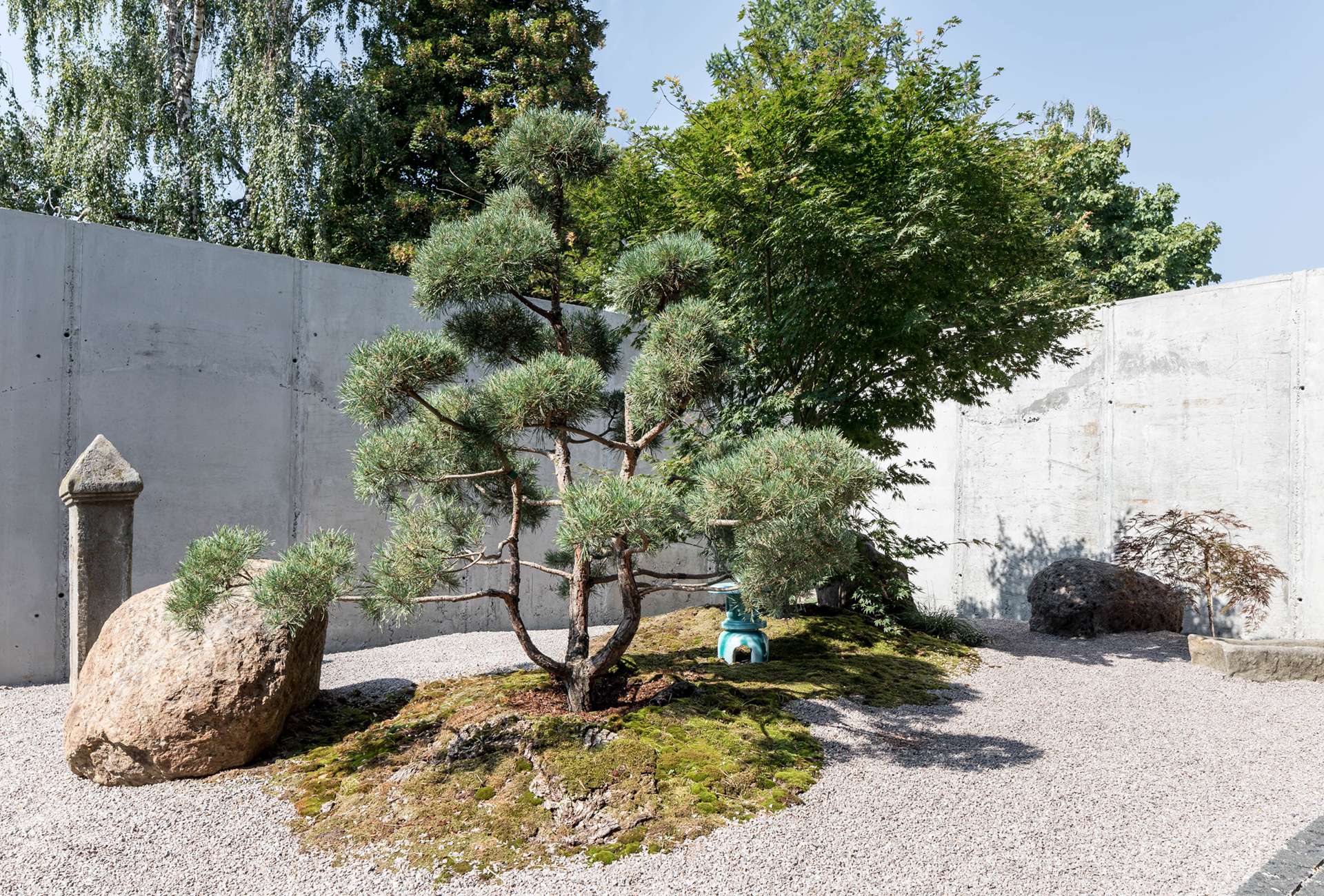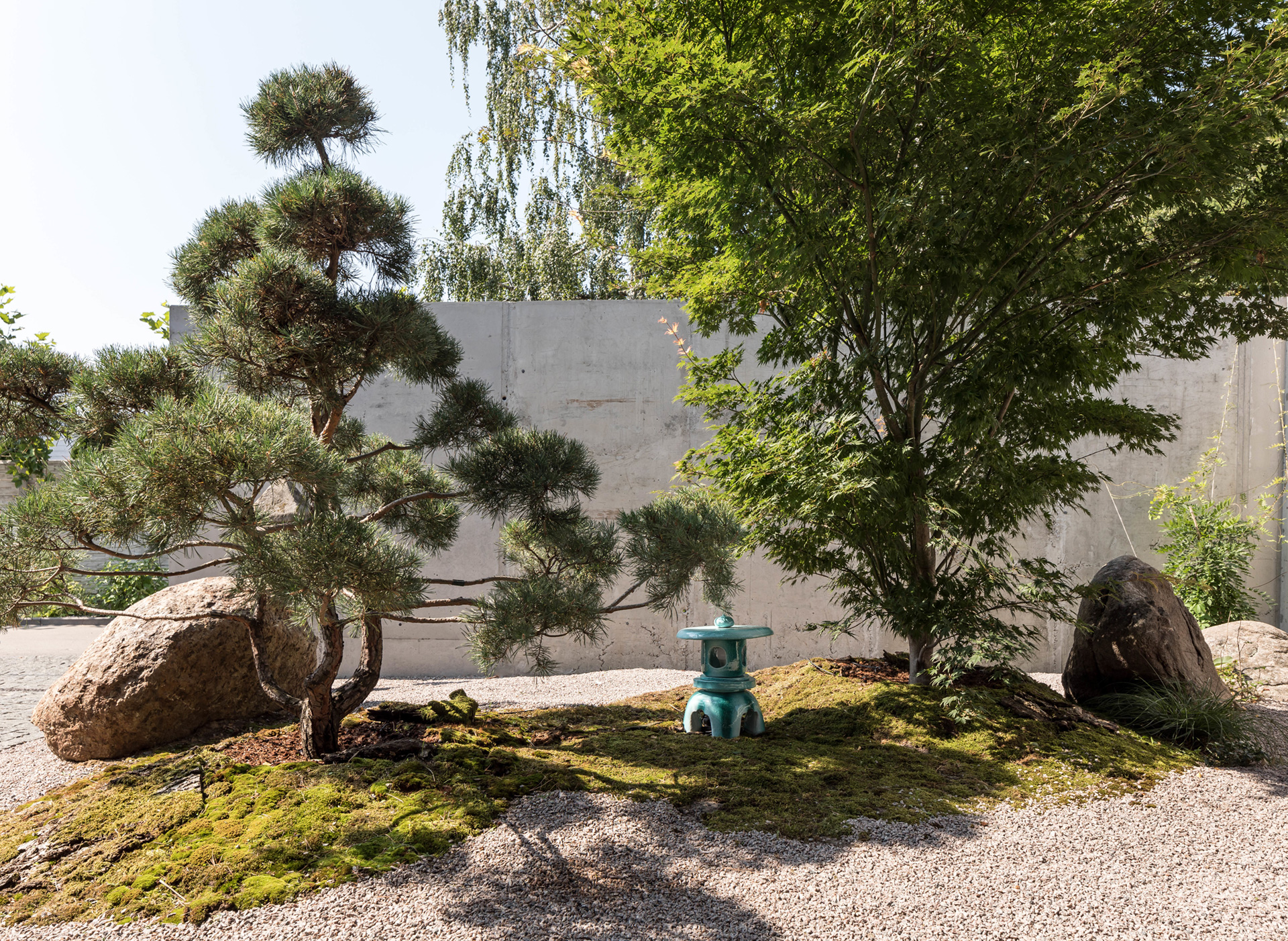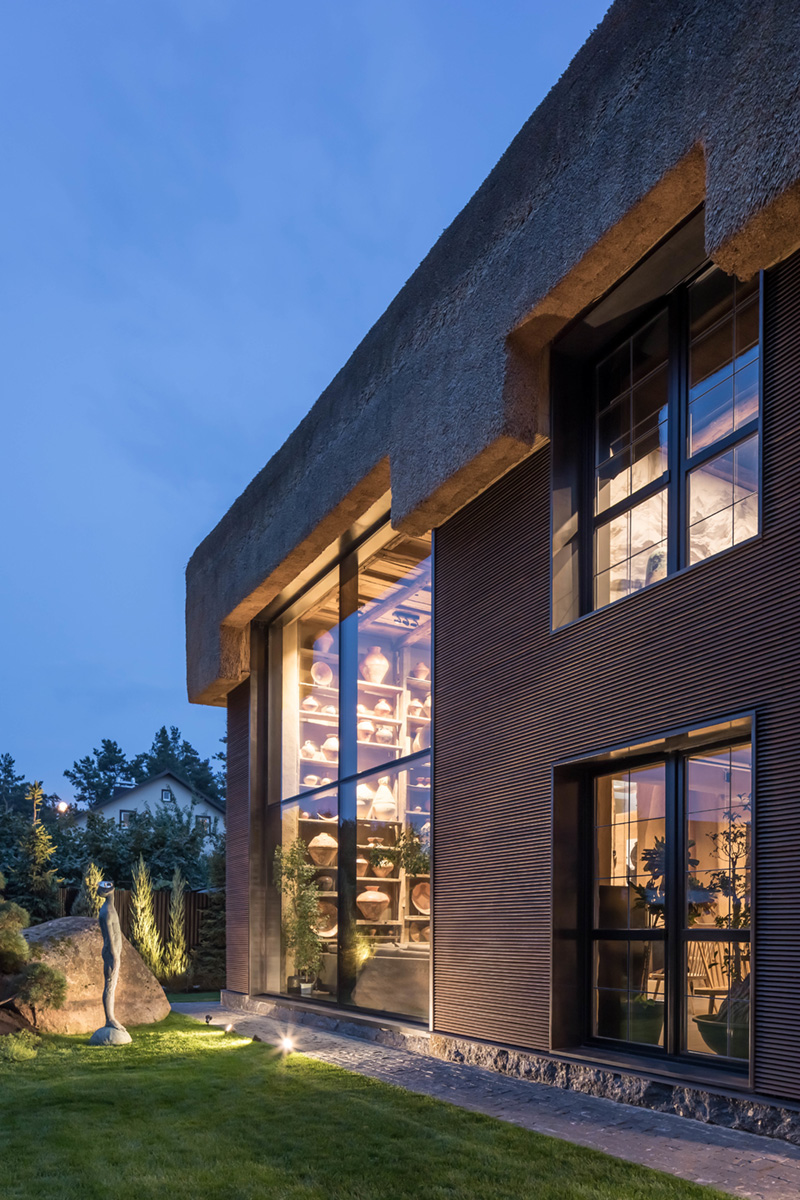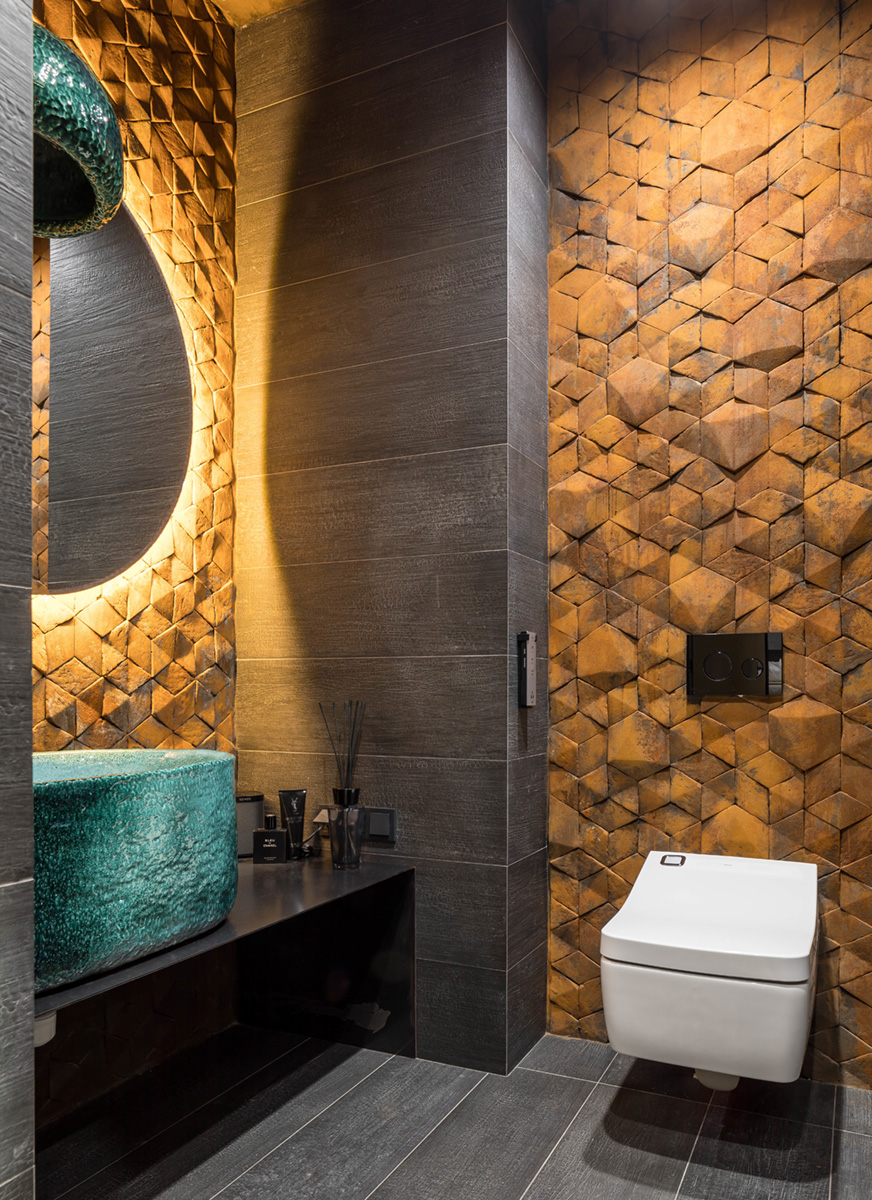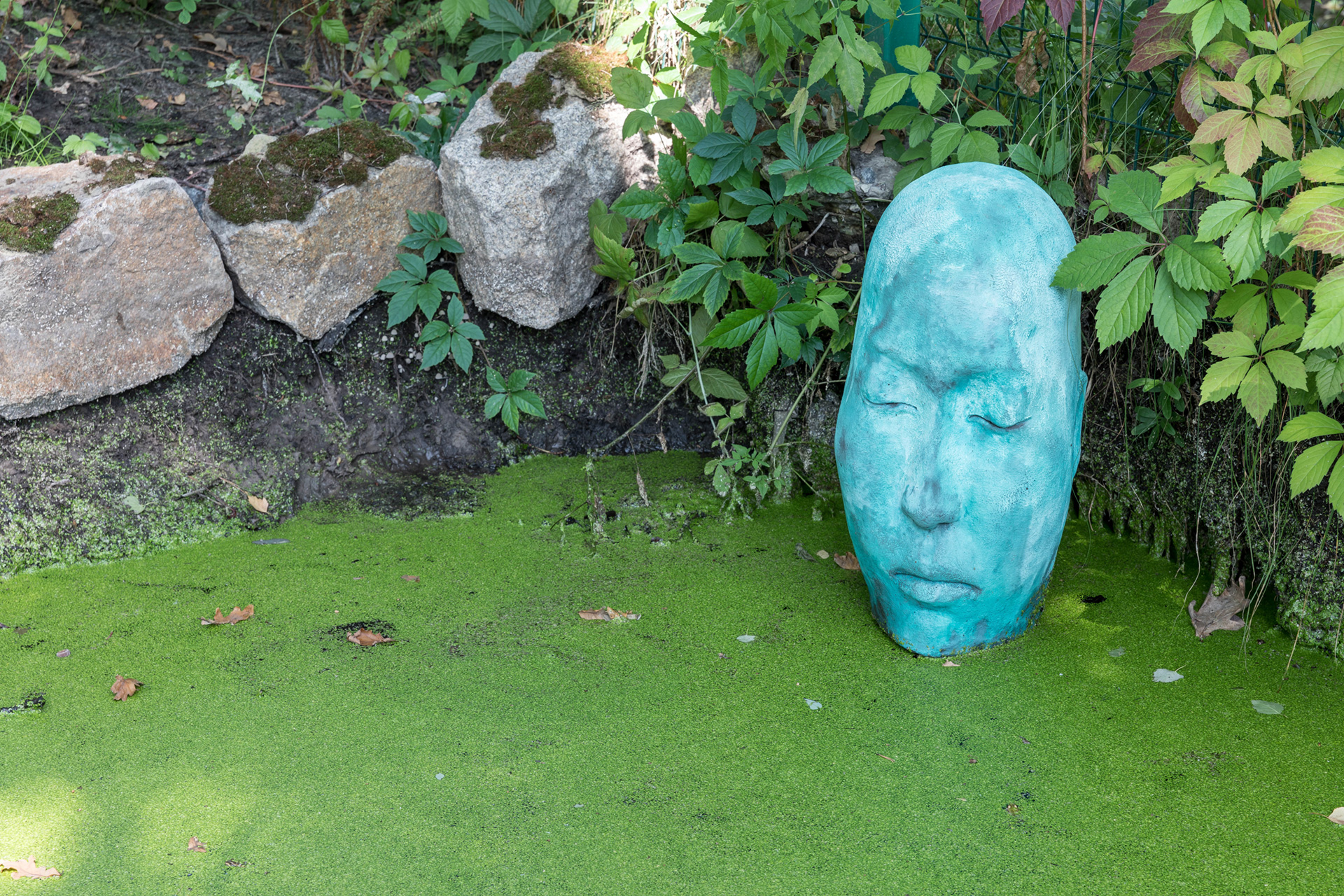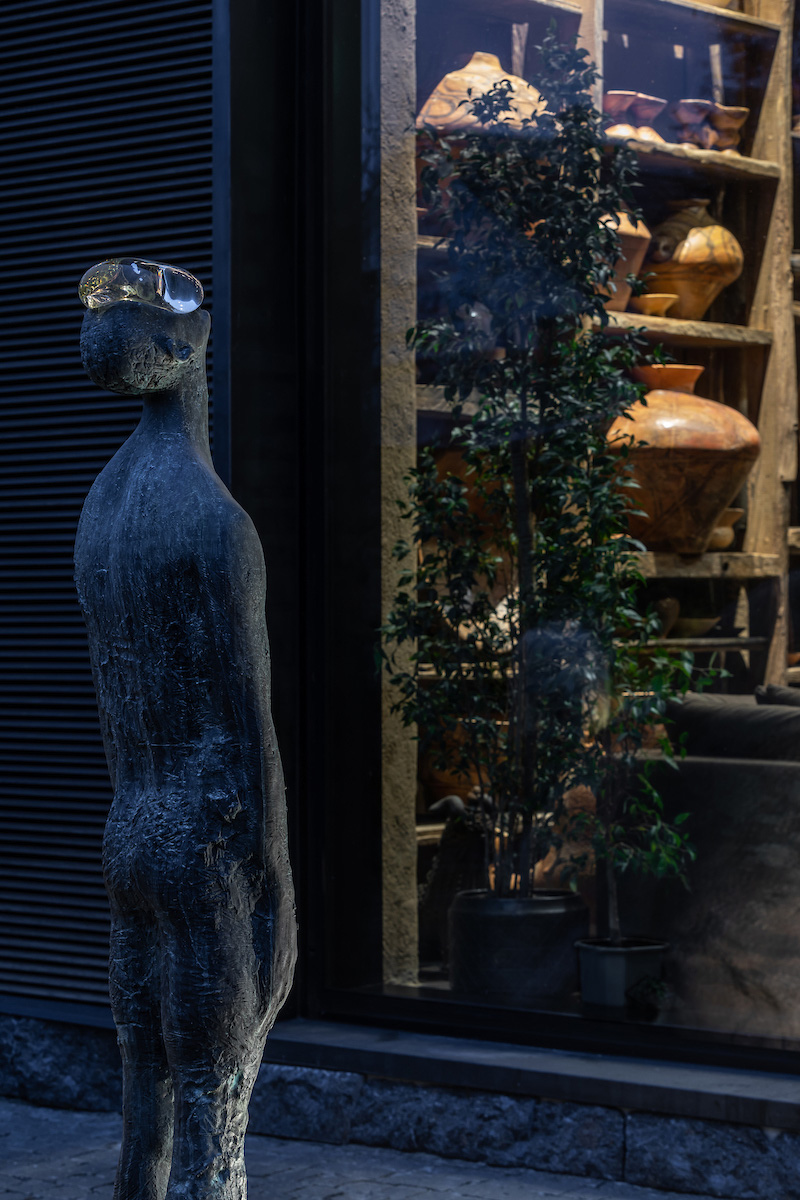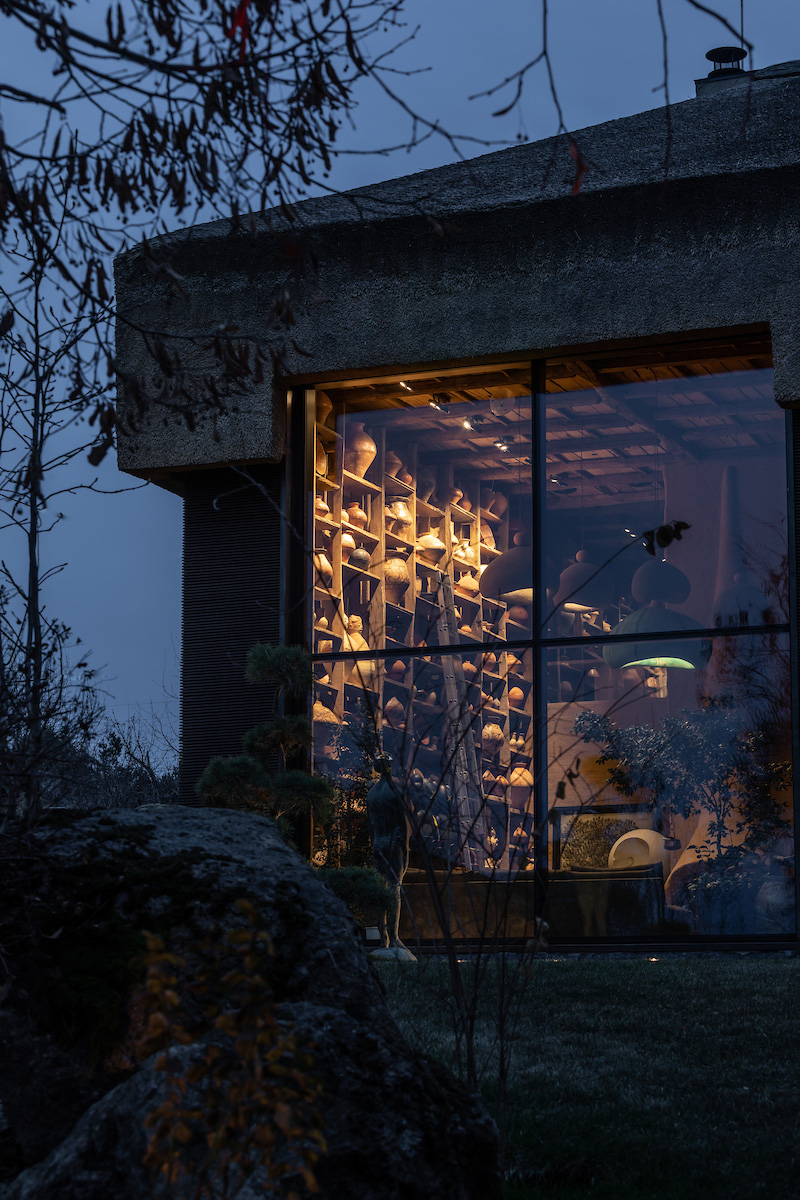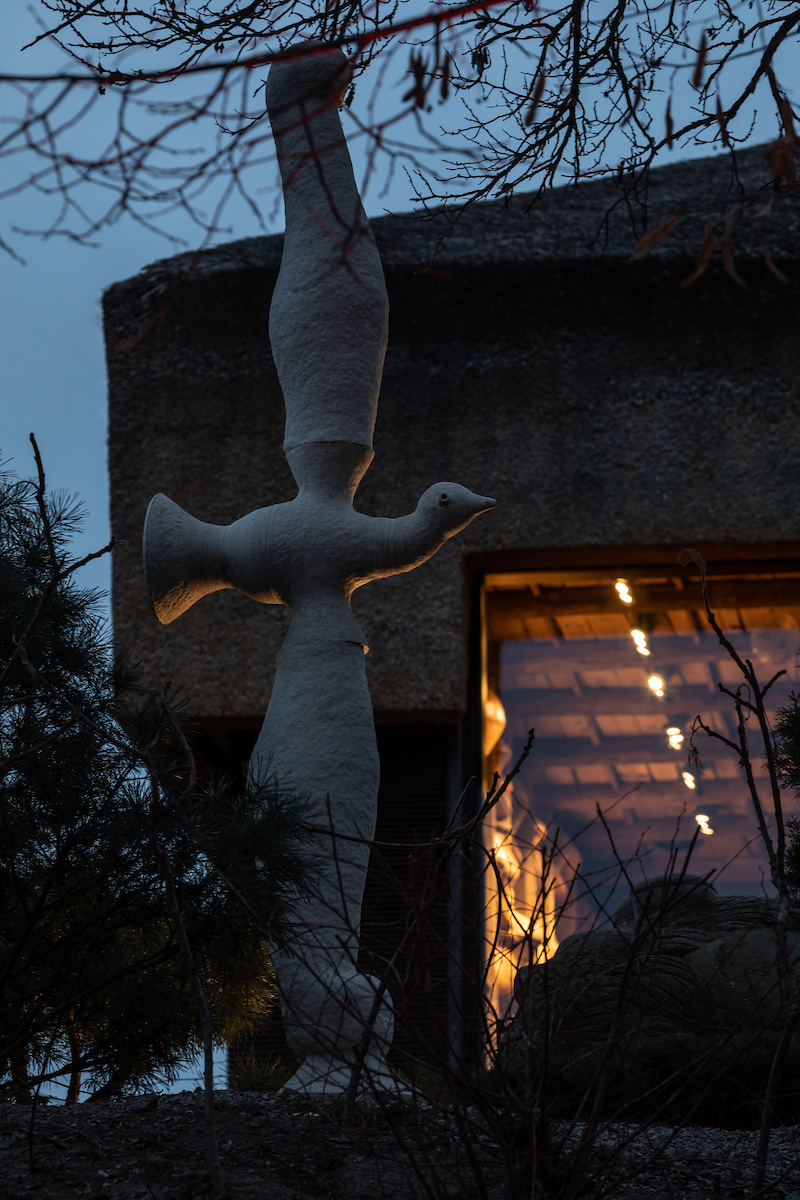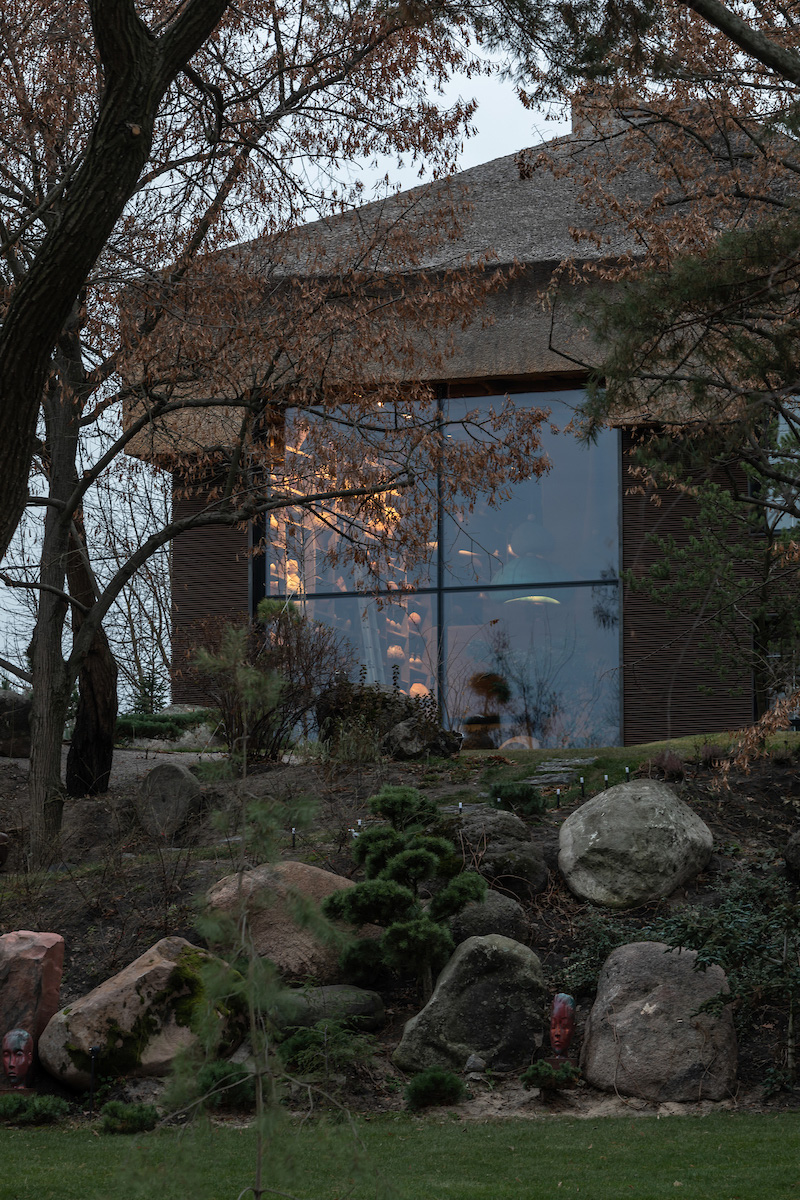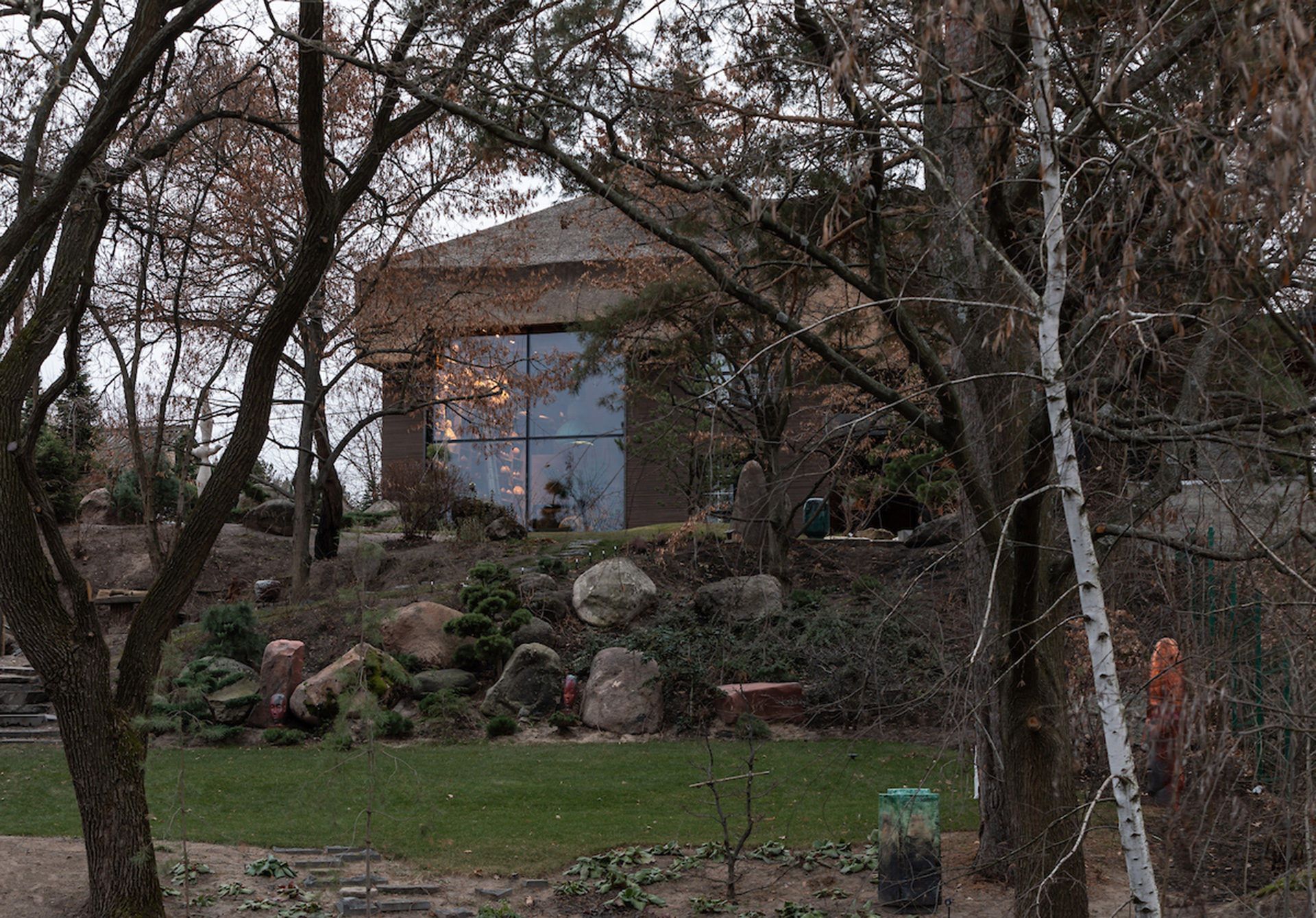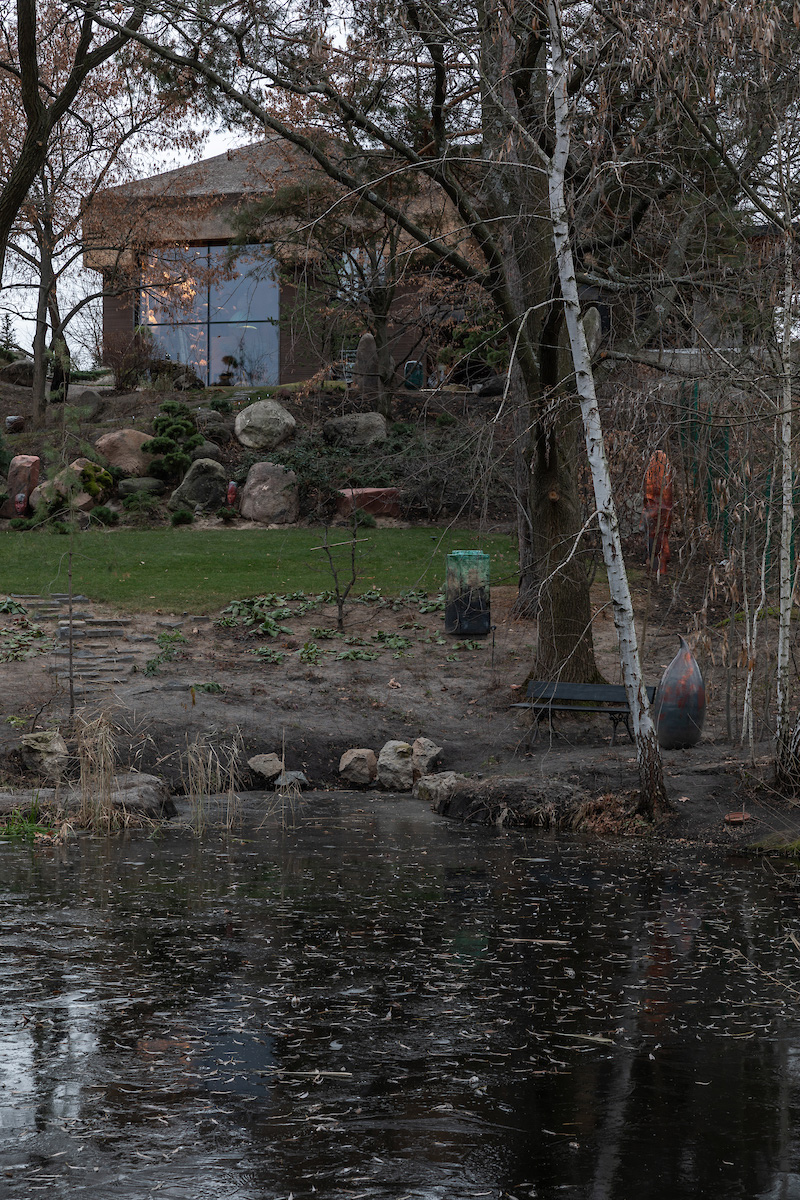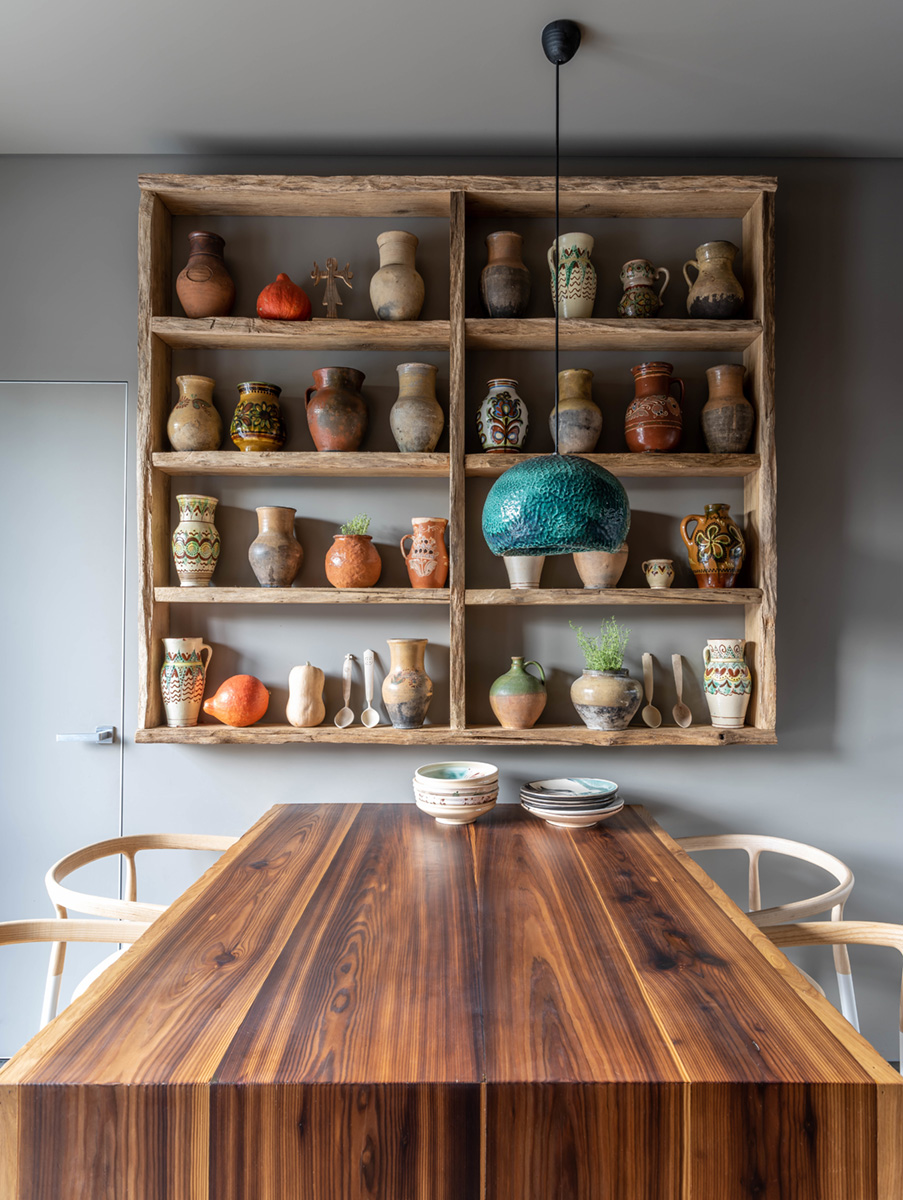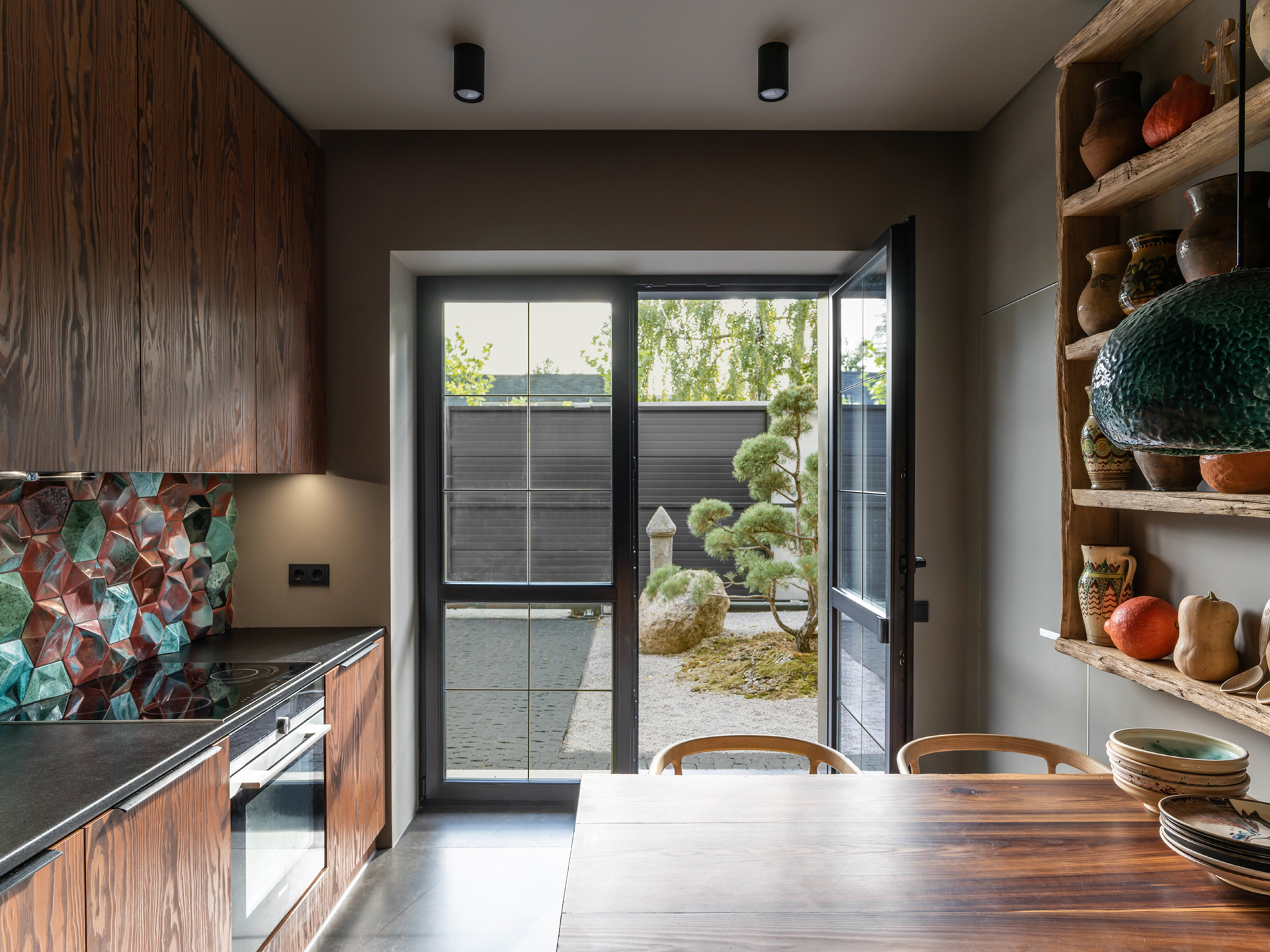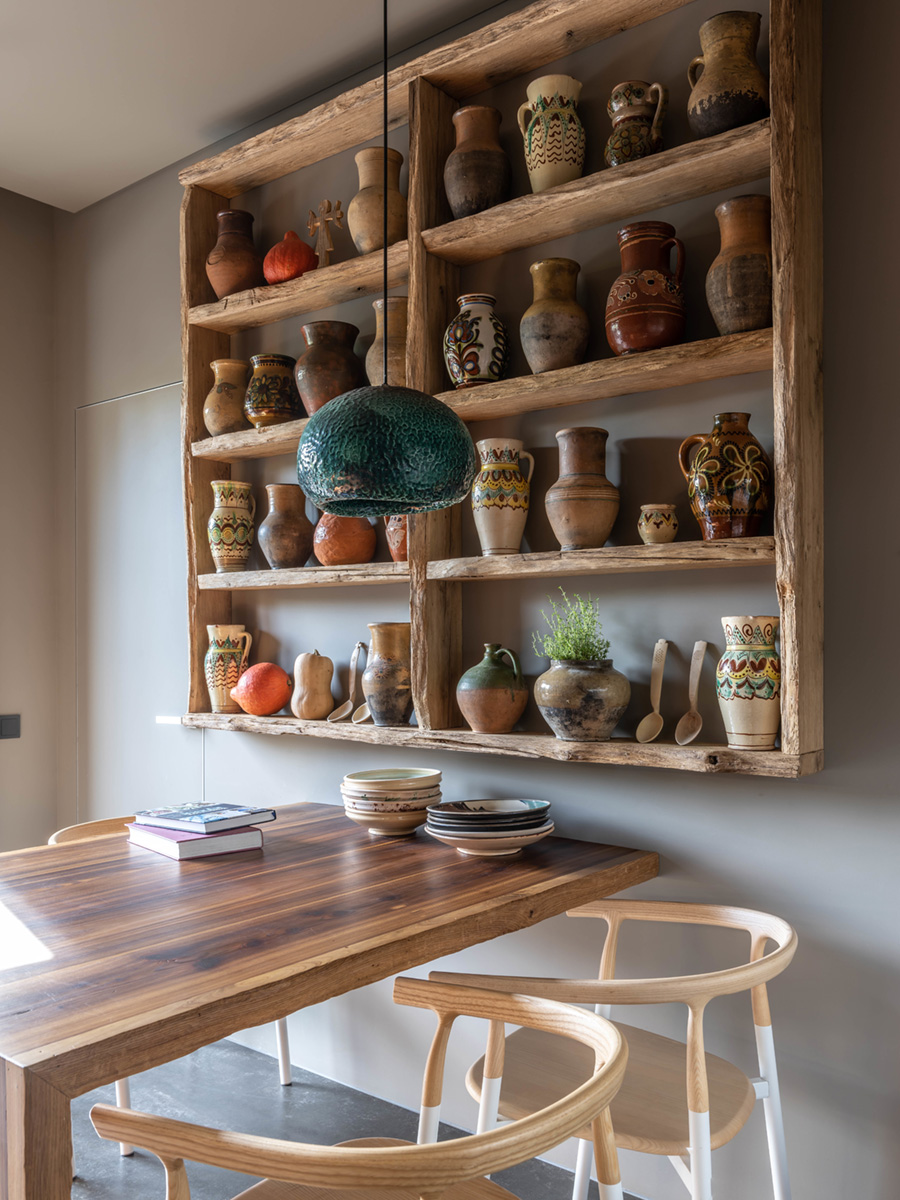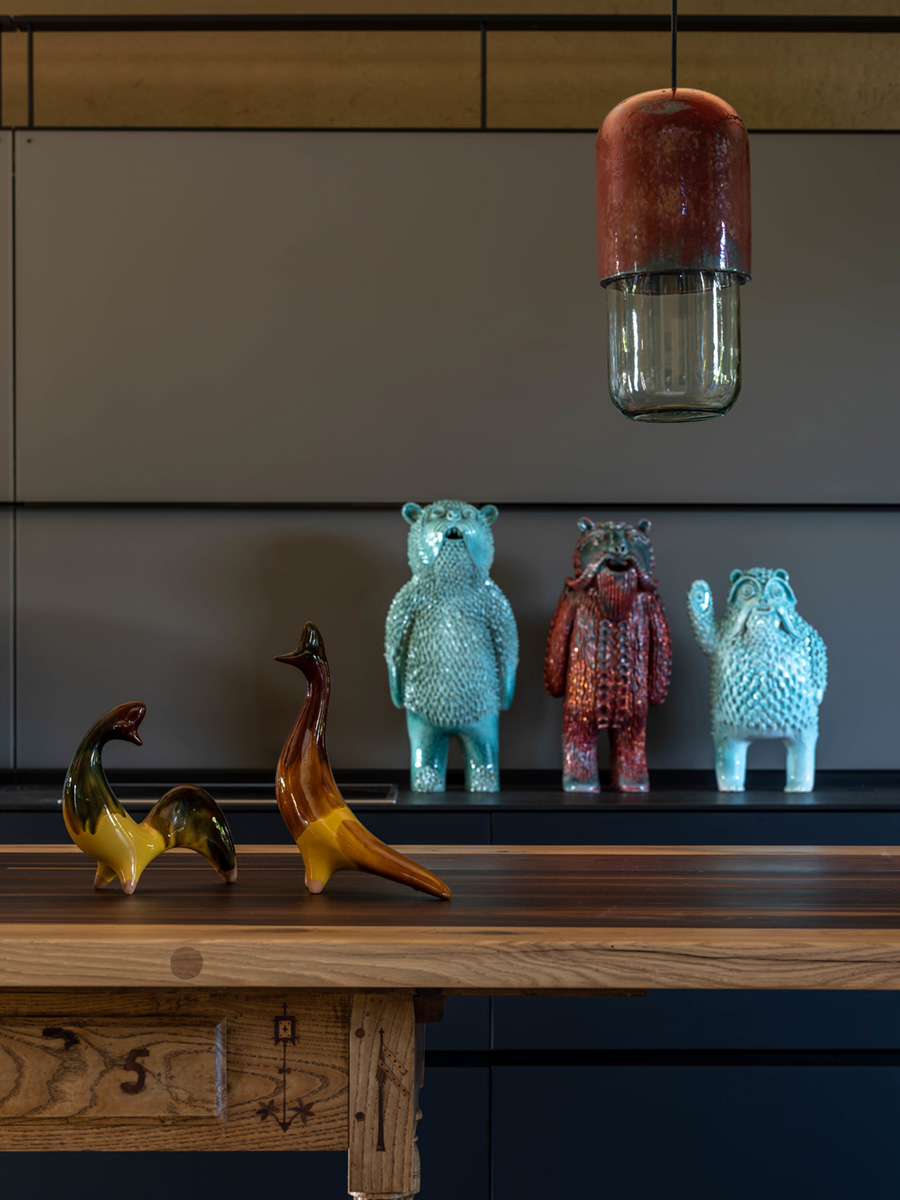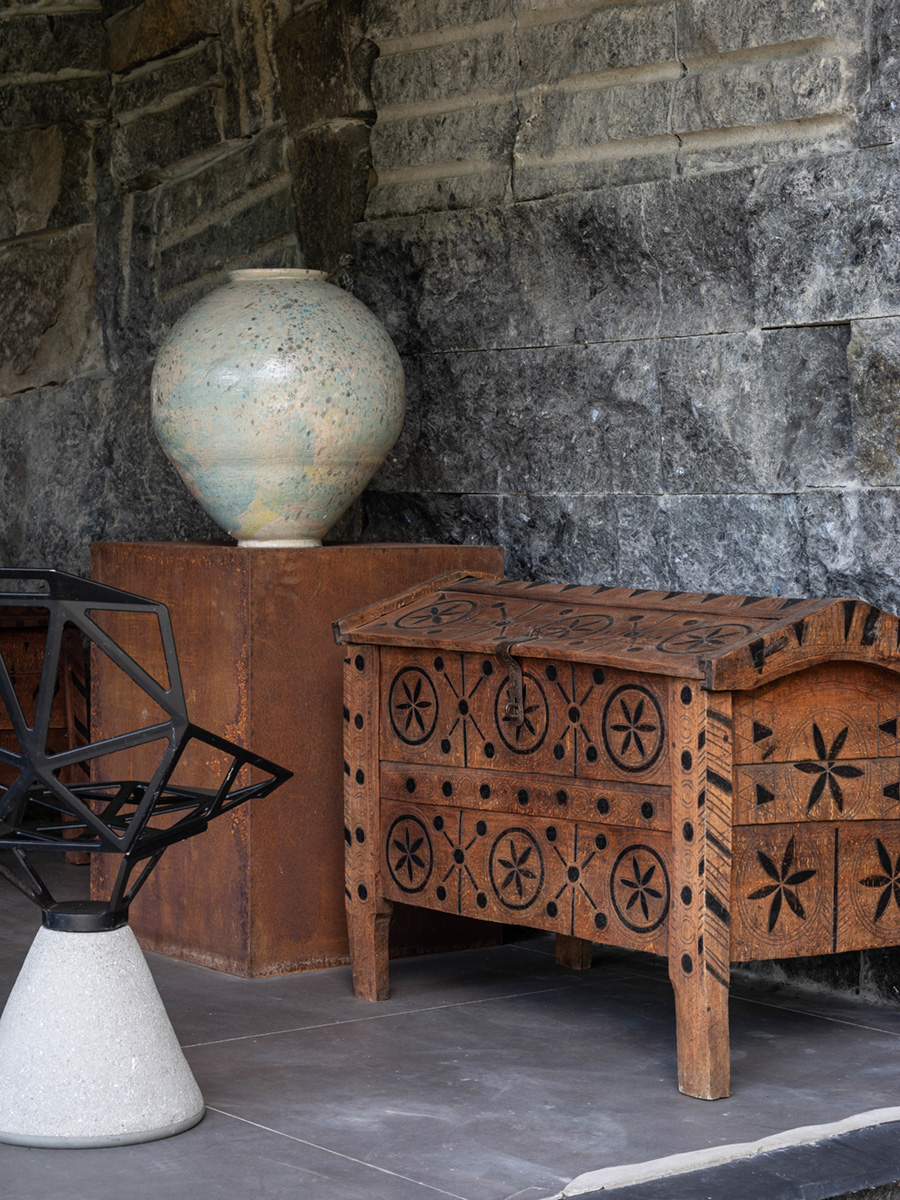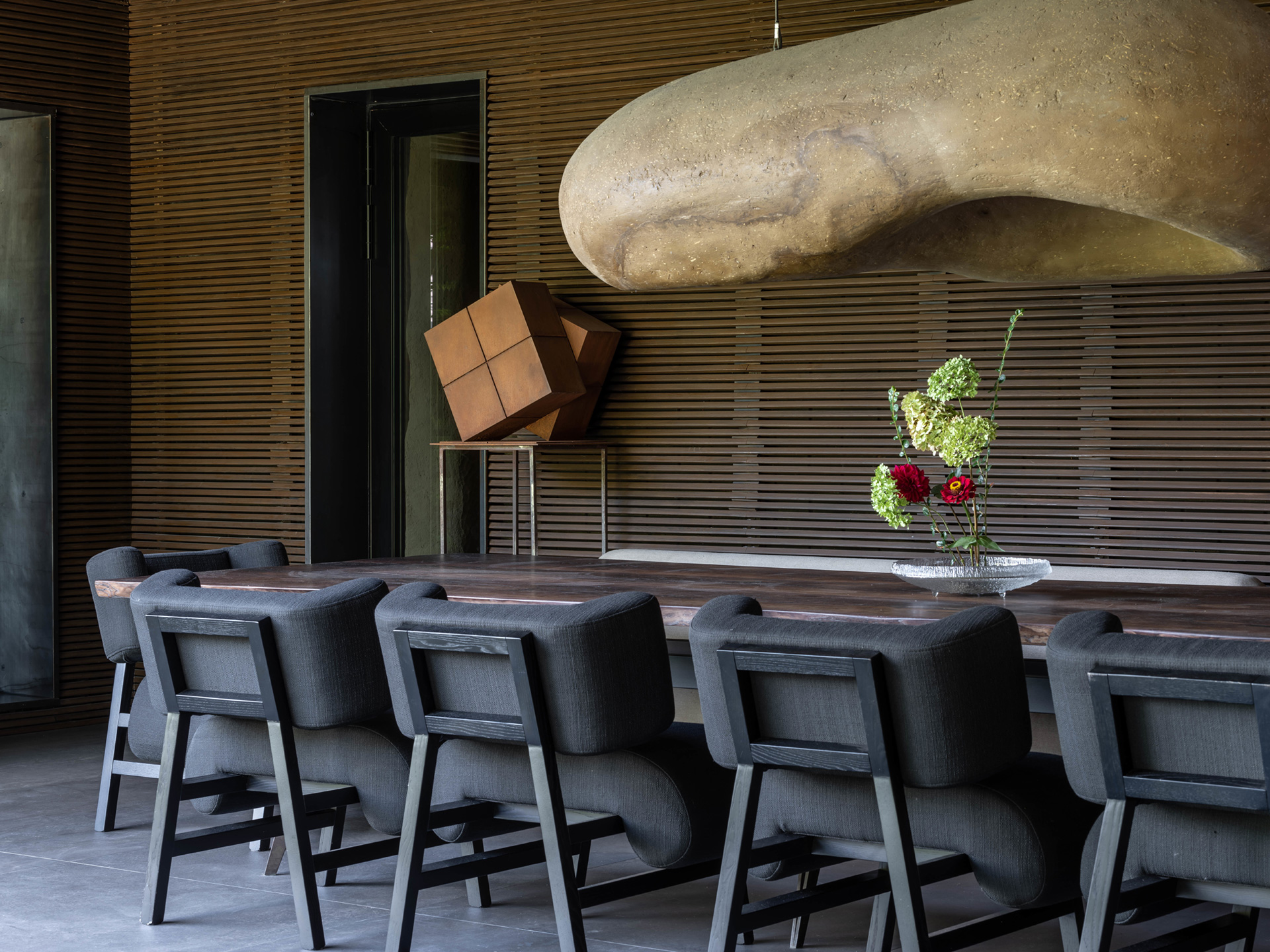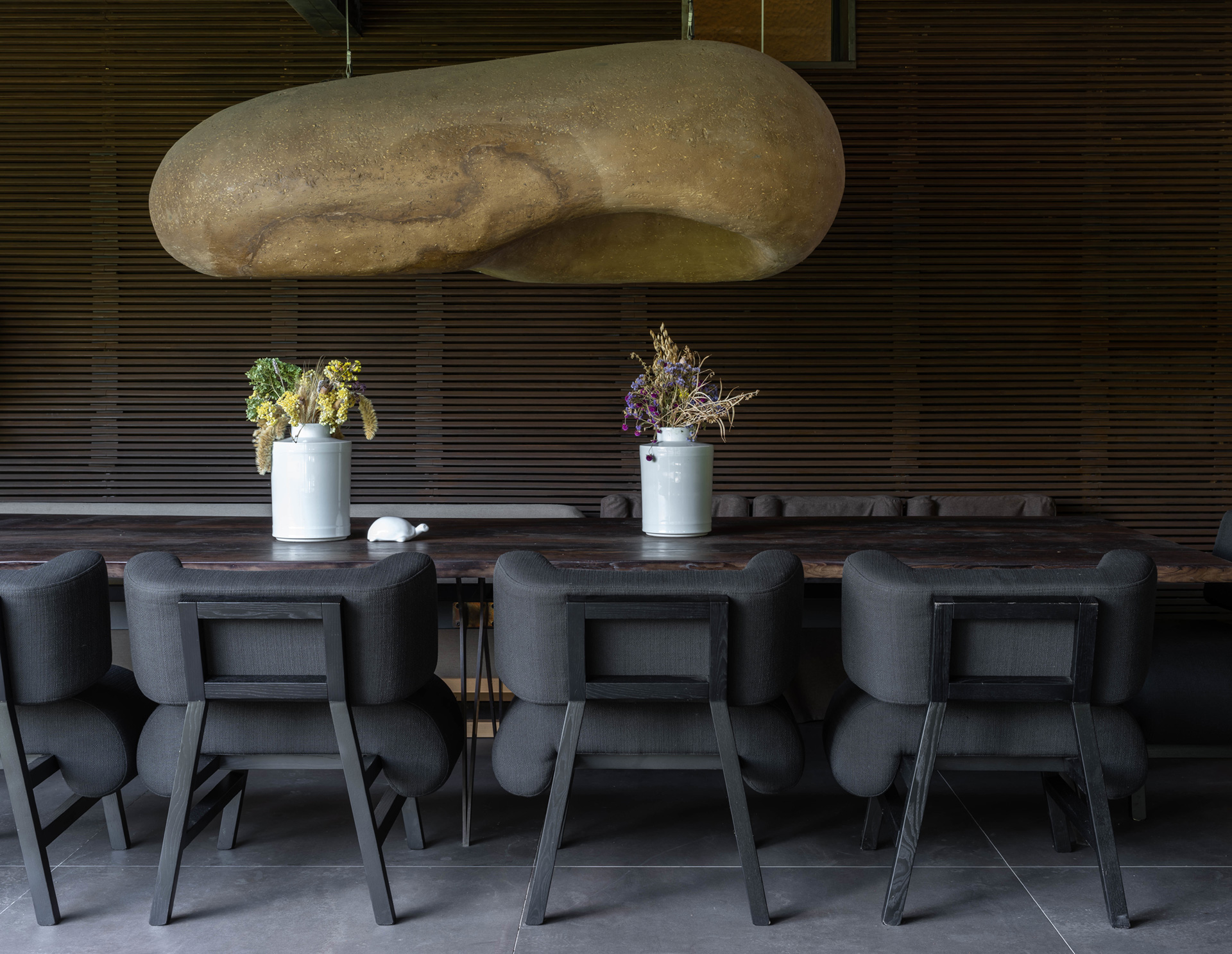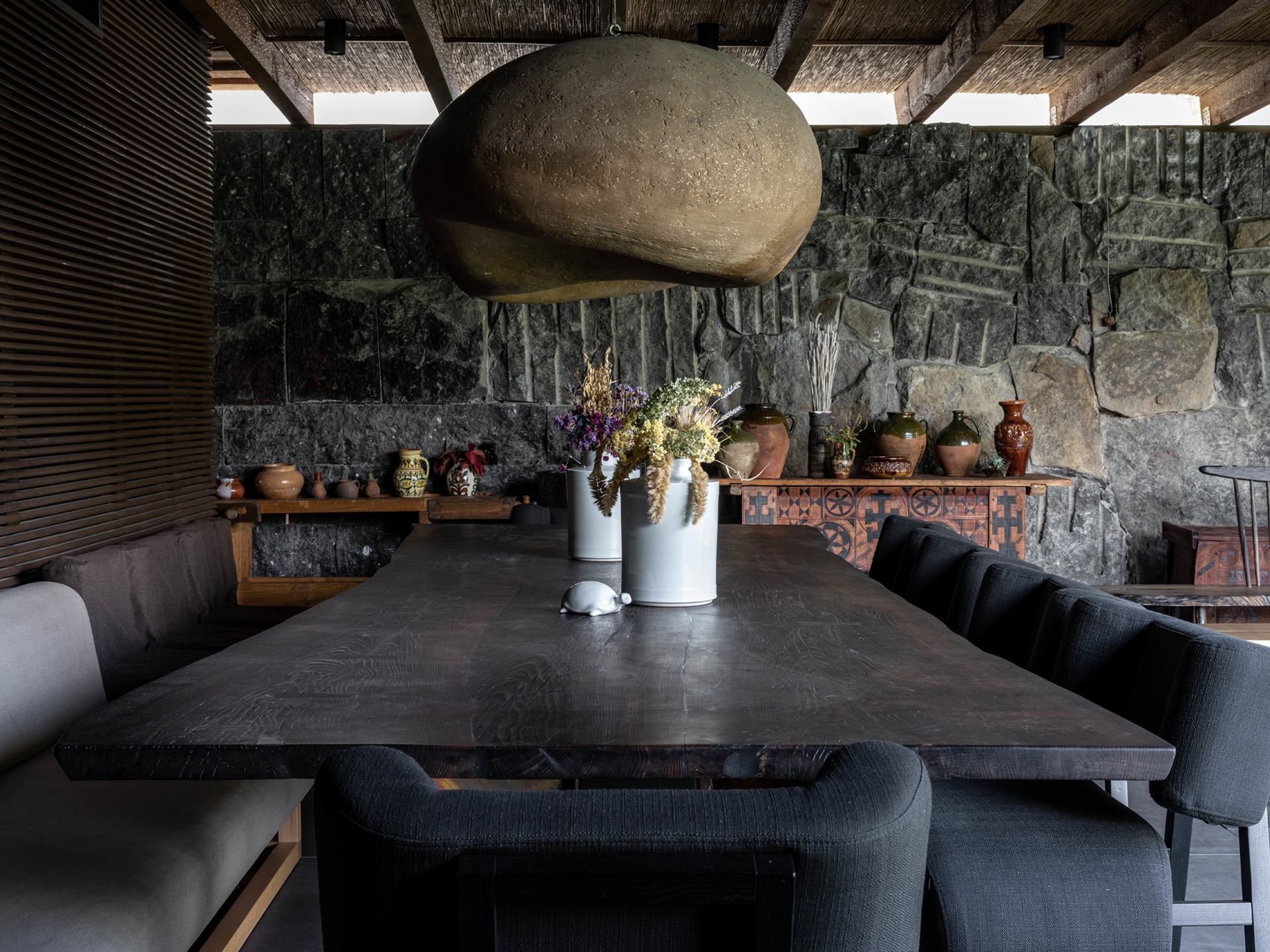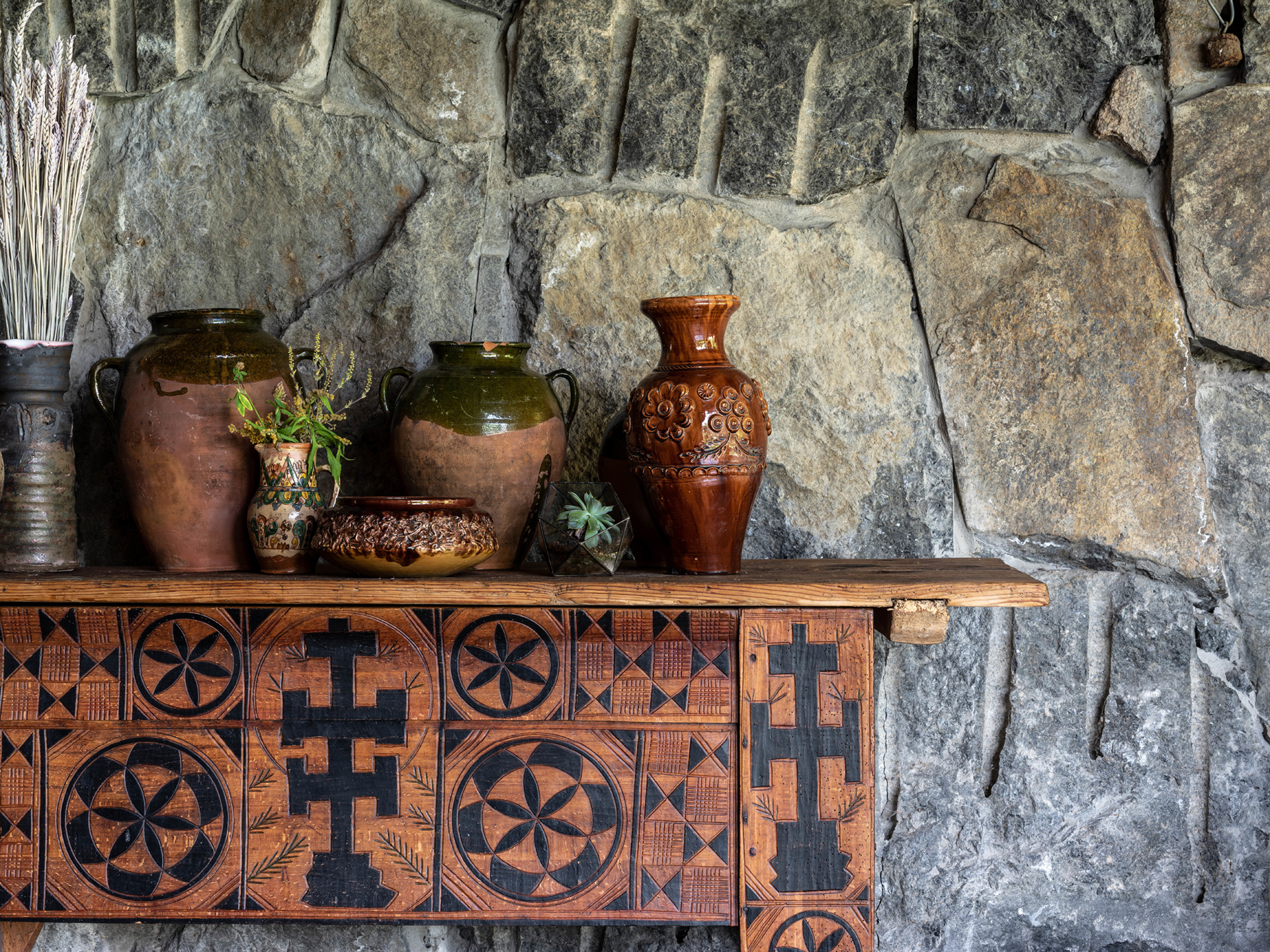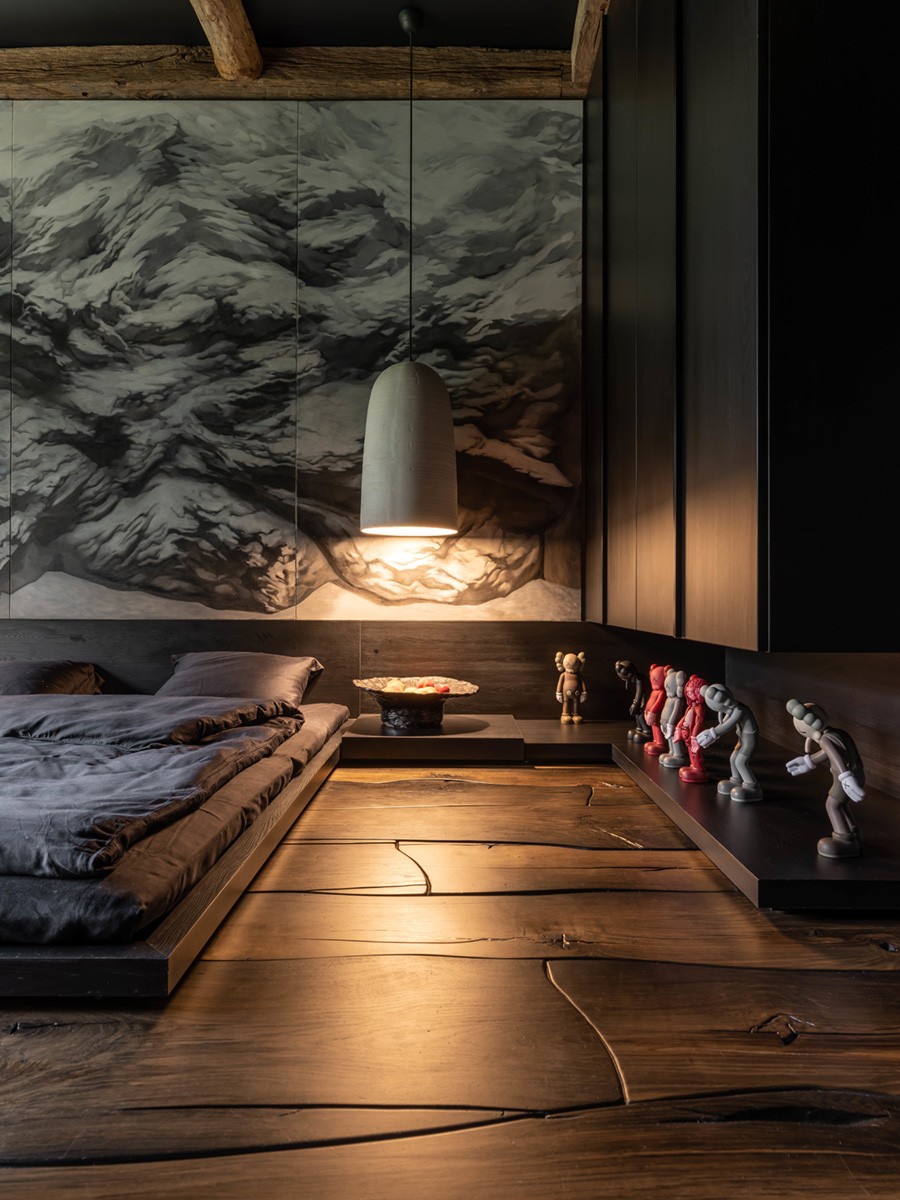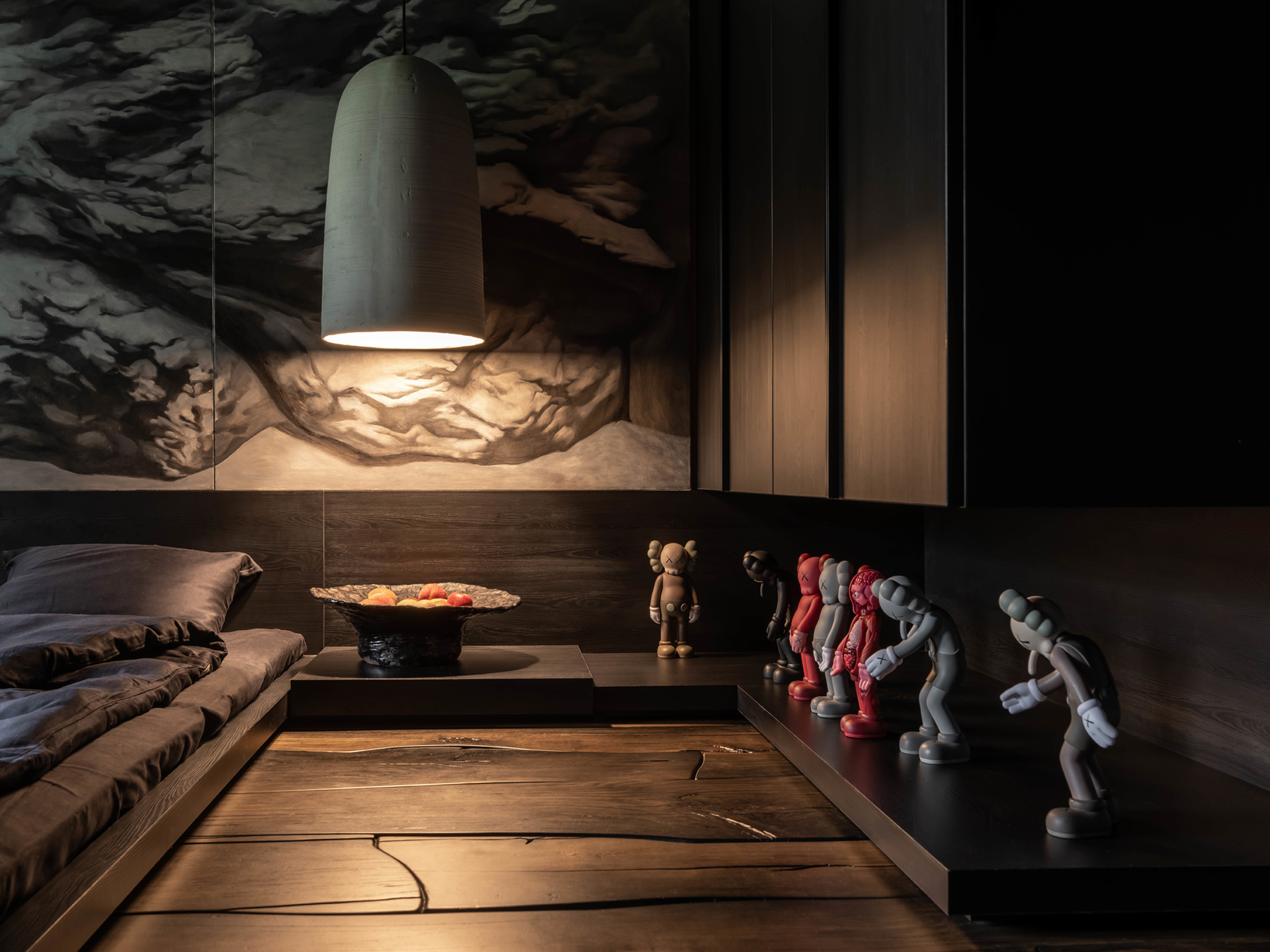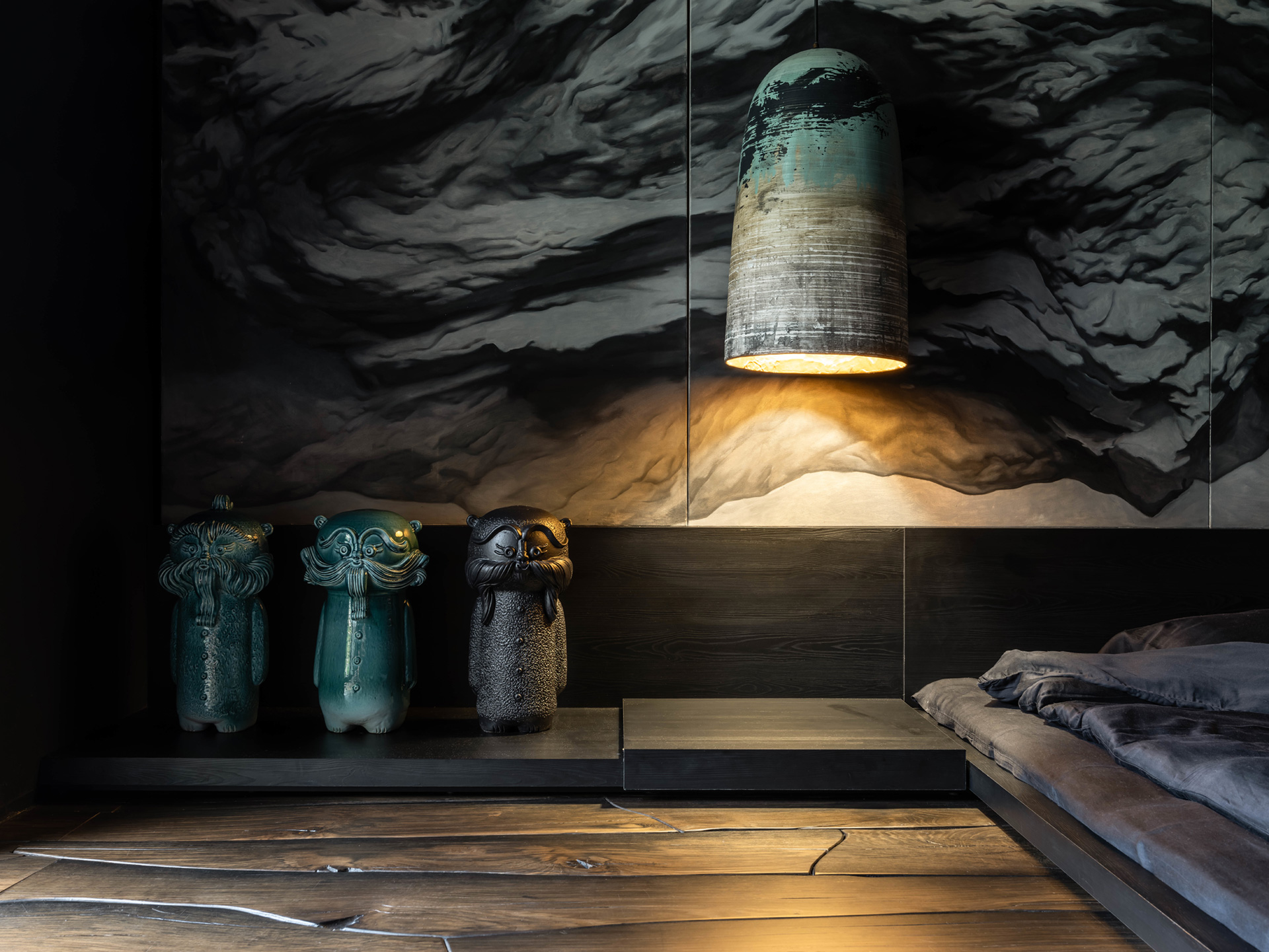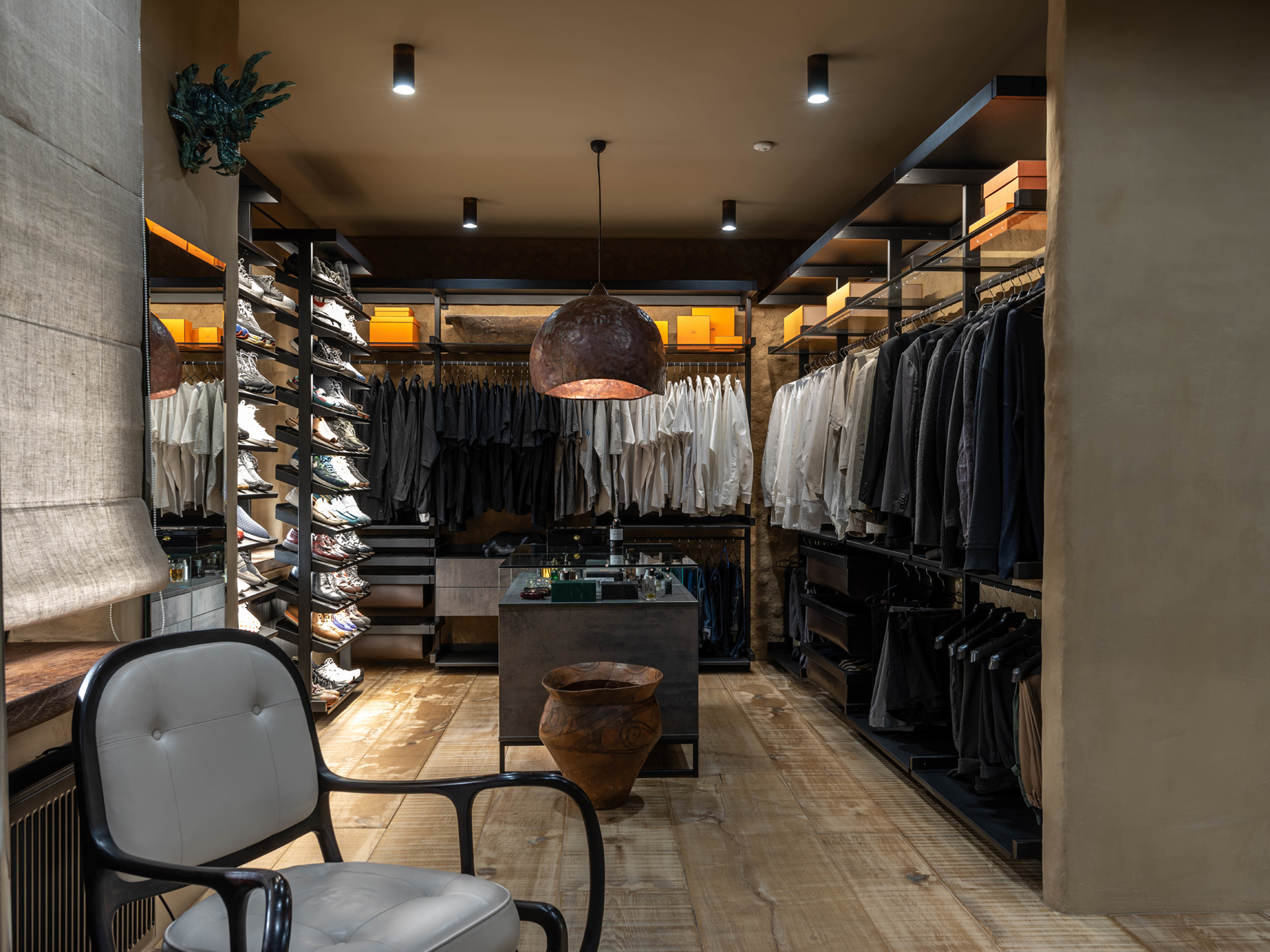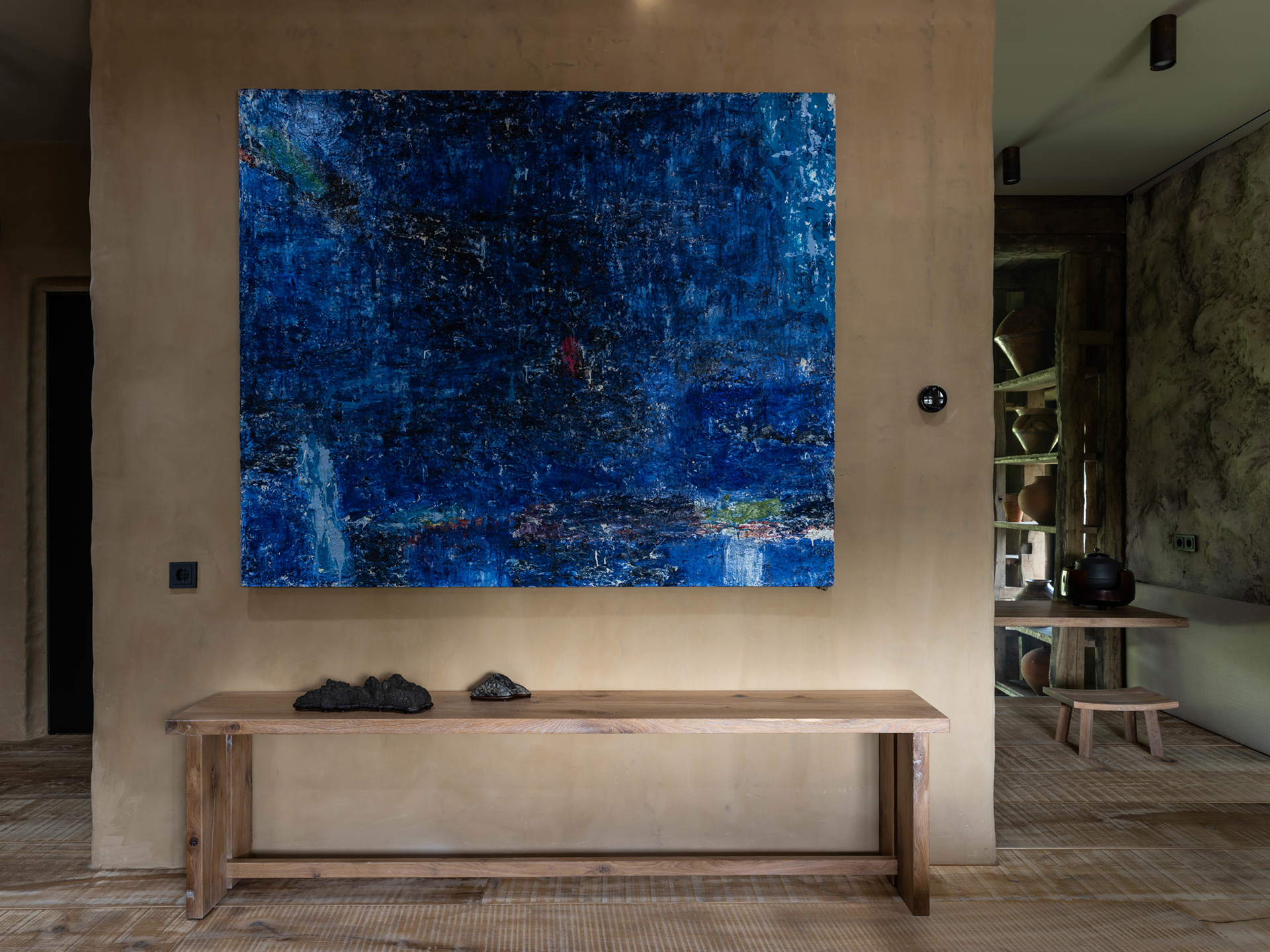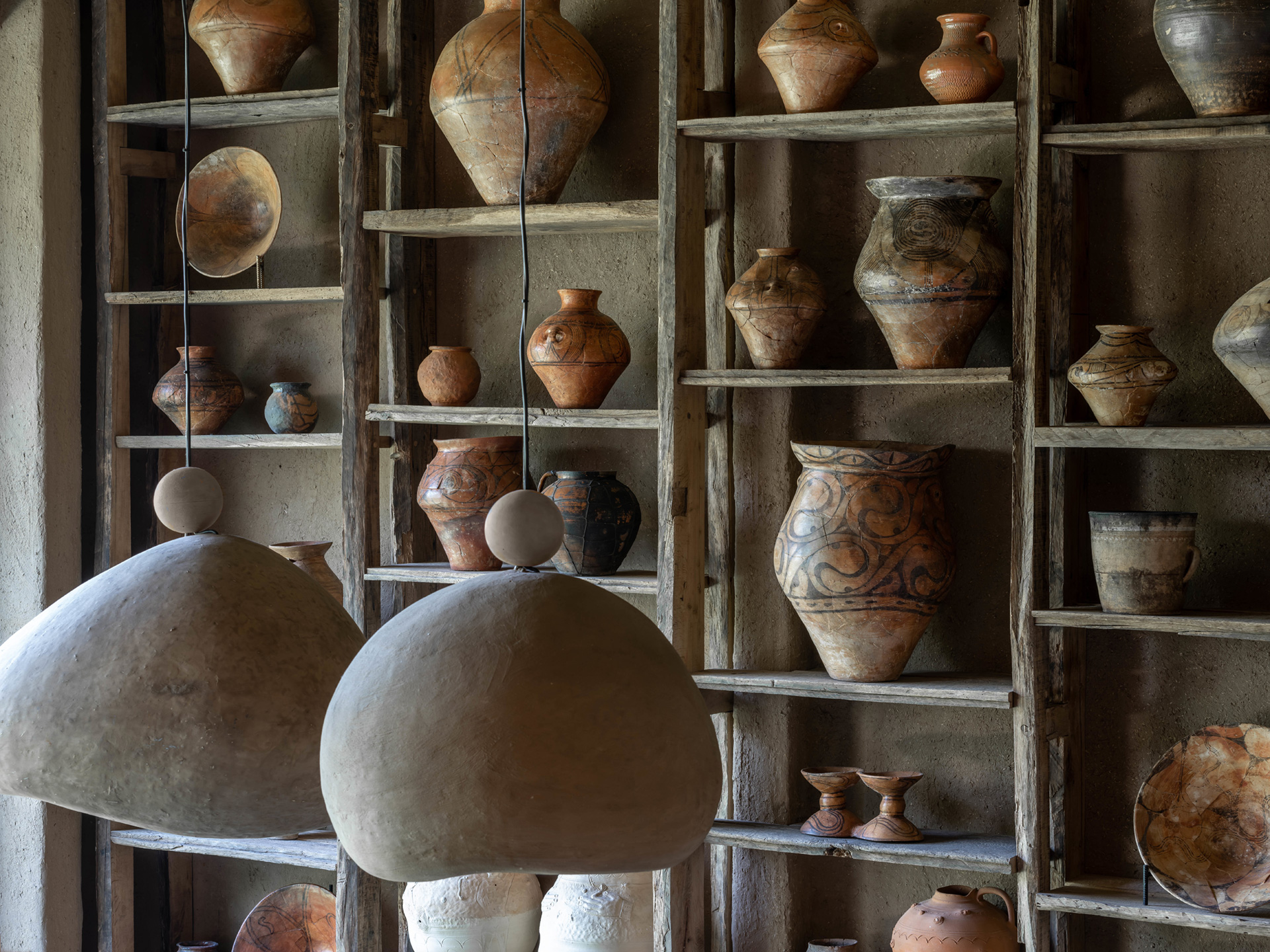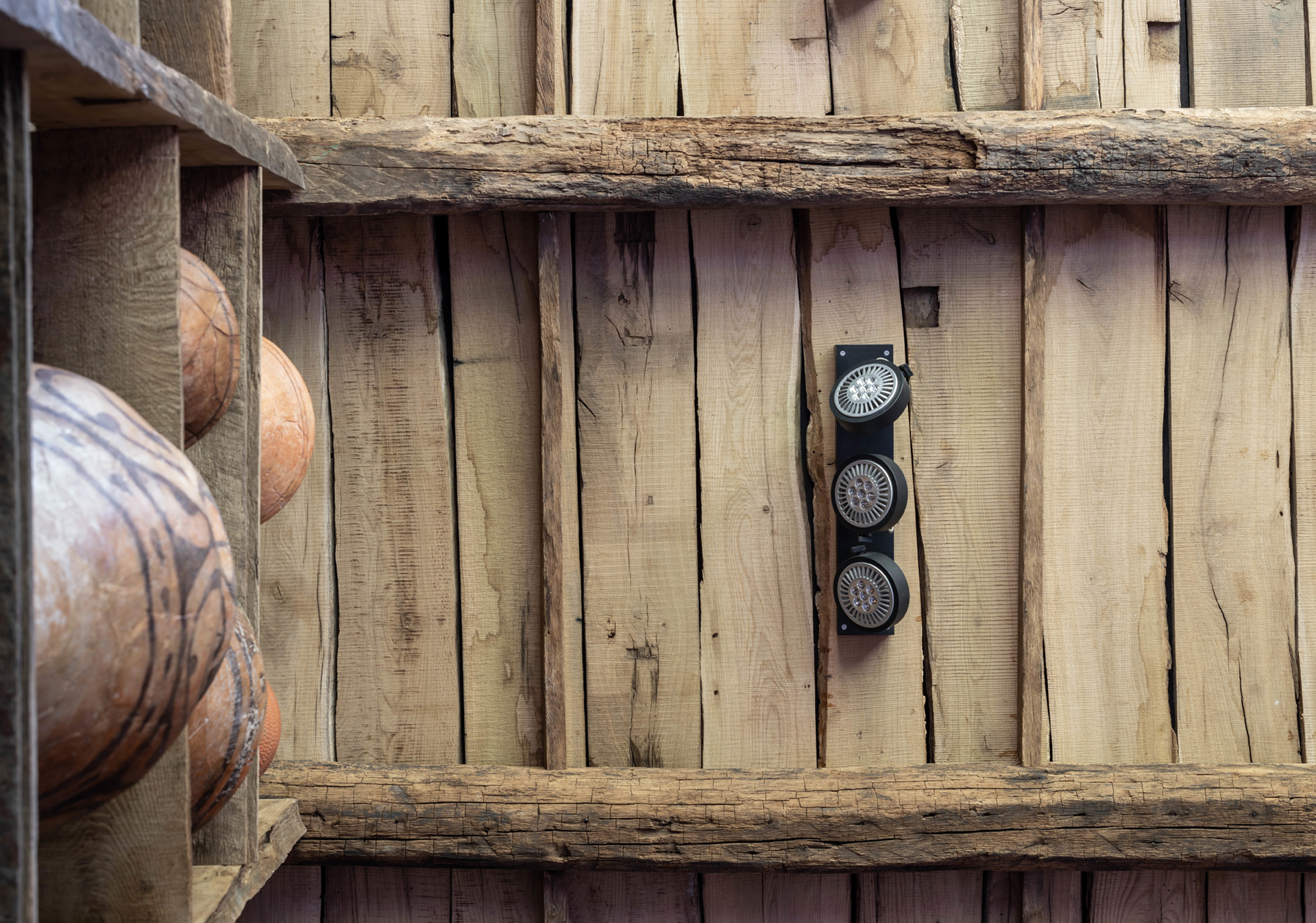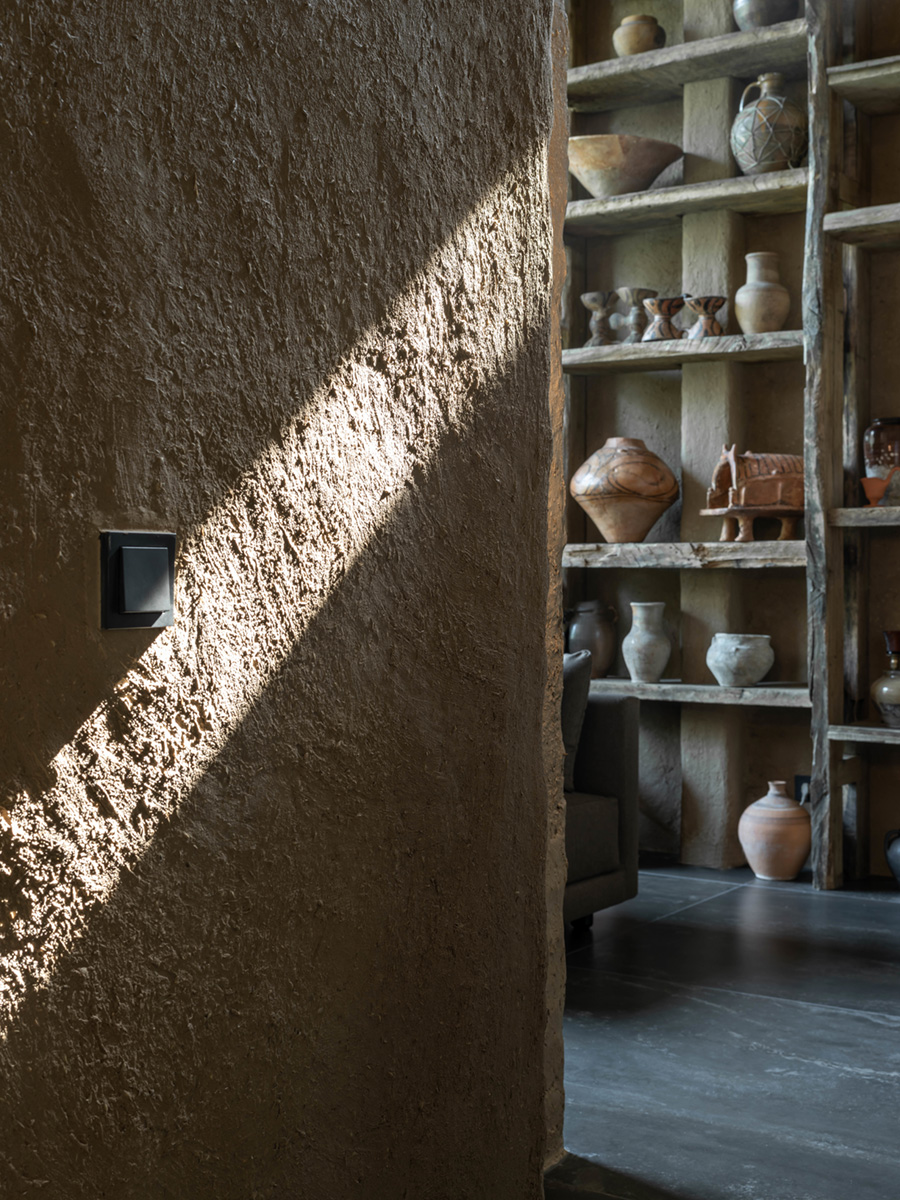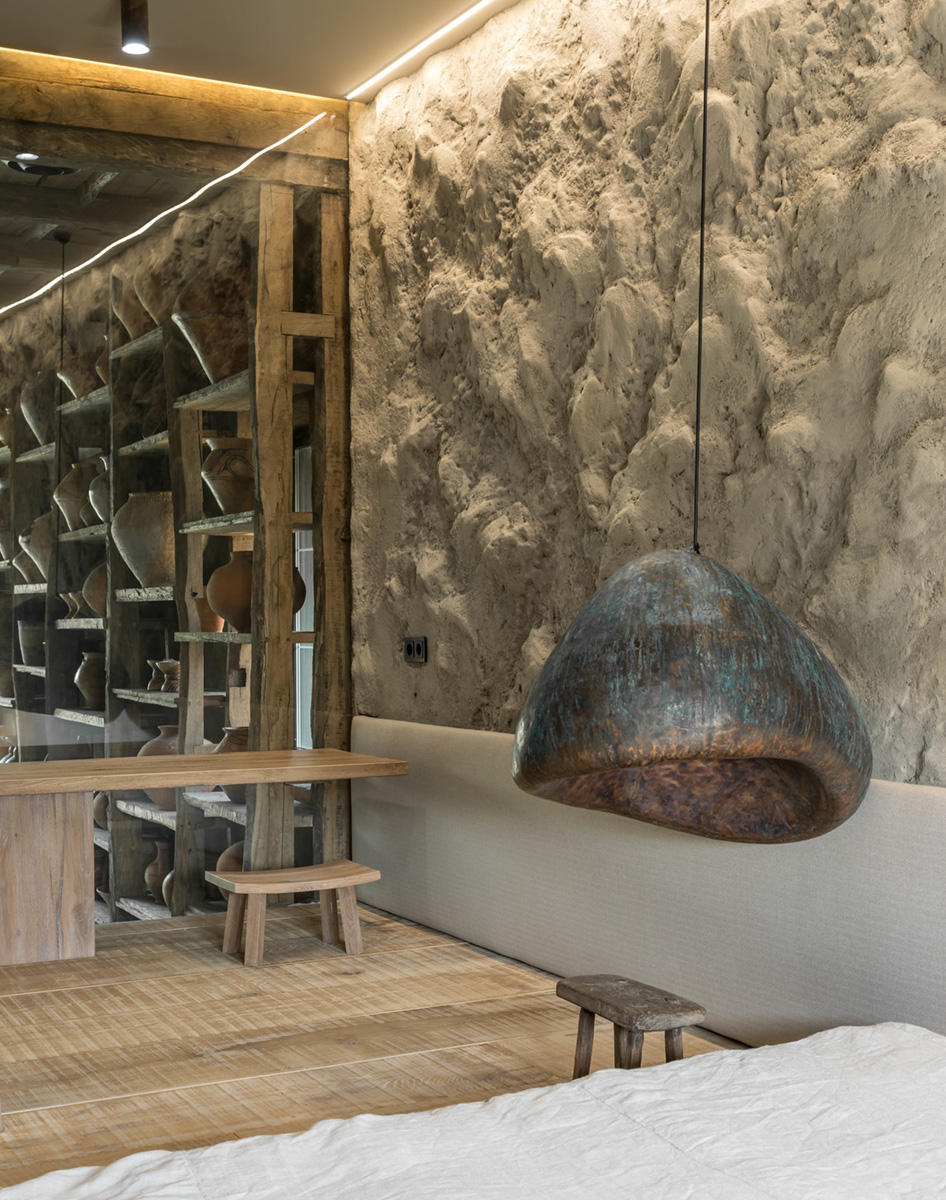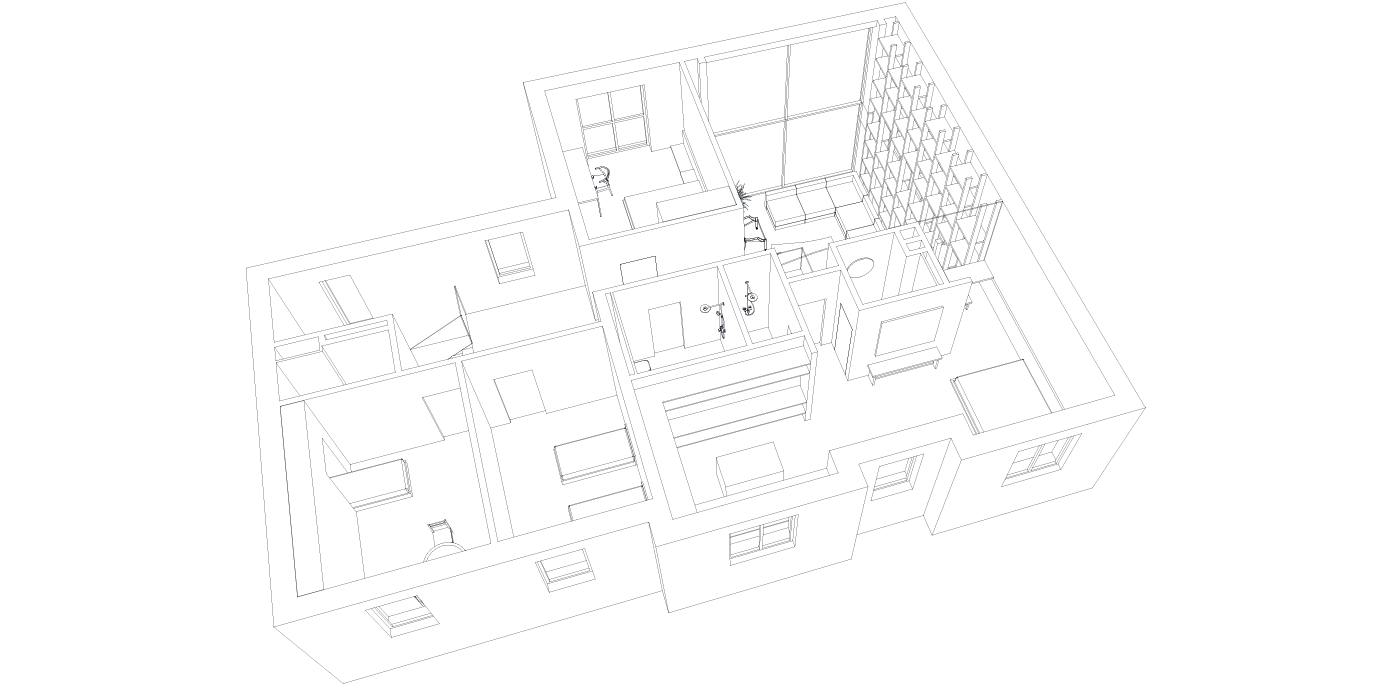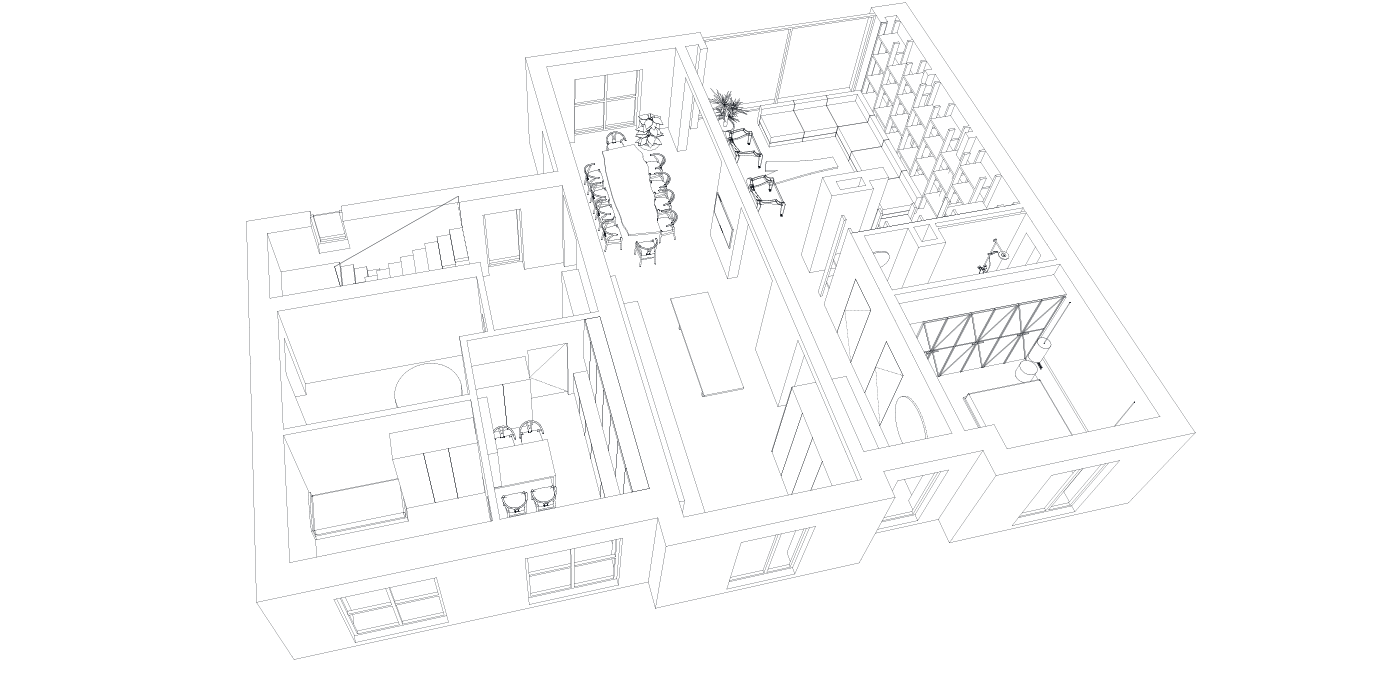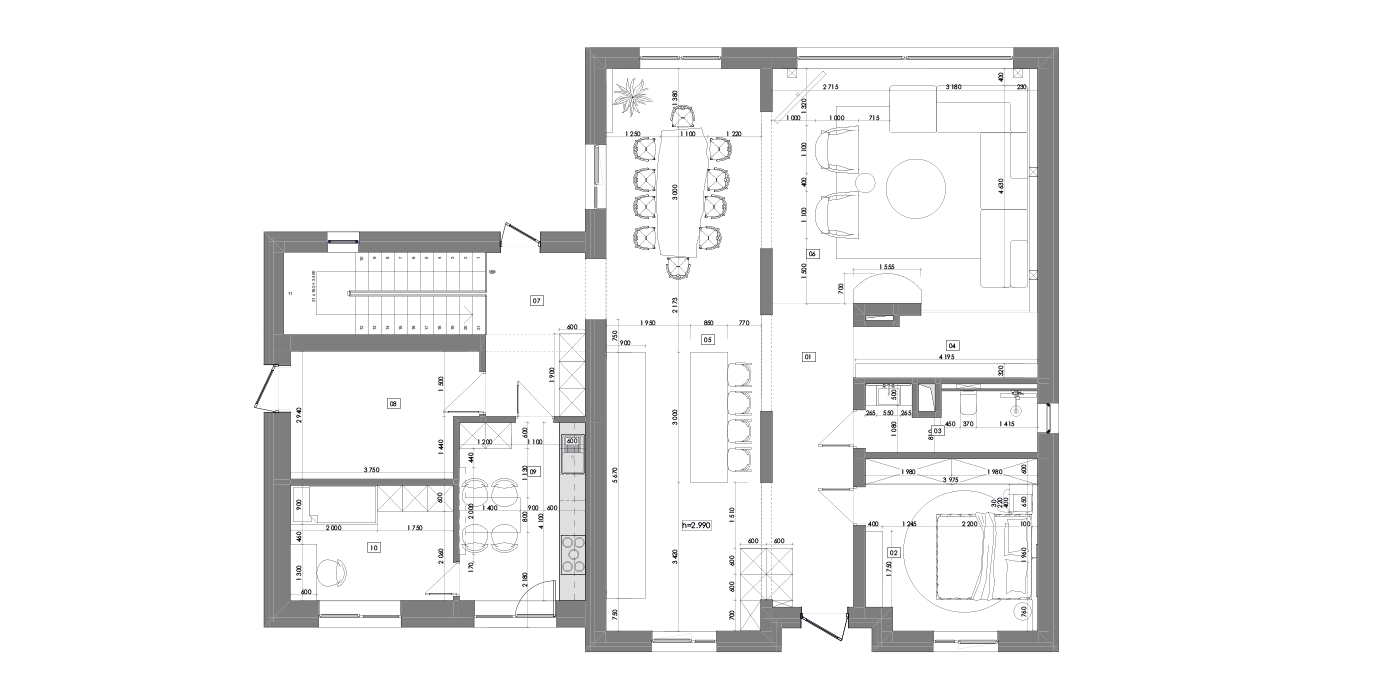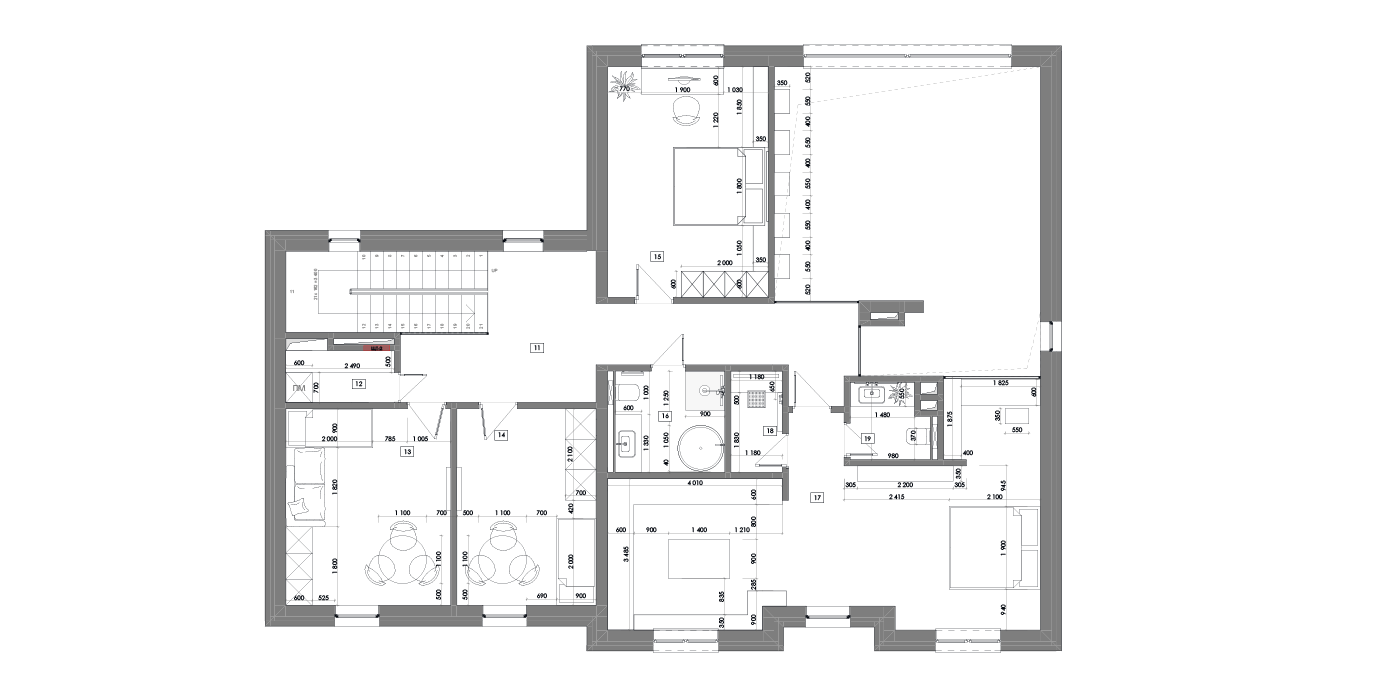Shkrub
Thatched House stories
Team: Serhii Makhno, Oleksandr Makhno, Olha Sobchyshyna, Serhii Filonchuk, Maryna Hrechko
The more you try to explain such things as happiness and serenity, the further the turbulent flow of everyday life moves away from them. The more thoroughly you try to create the perfect interior, the more it looks like the one for staying overnight rather than living.
Today we are going to tell some stories about a house where the main thing is not the color of the floor, but the kids’ noise. From which, by the way, you cannot hide despite all the tricks of planning.
Look into the wasteland and see the house
Listen to the voice inside of yourself
Build walls from rain and clay
The first story. About the dream
This house was built by the Ukrainian architect Serhii Makhno for his family. It is located in Kozyn, a village in the suburbs of Kyiv. Here, more than 15 years ago, Serhii Makhno began his journey. And then he decided that he will live here.
The second story. About Ukrainian Japan and vice versa
The house is built in contemporary Ukrainian style under the influence of Japanese philosophy of wabi-sabi that finds beauty and harmony in imperfections. Being almost completely enclosed by a minimalist concrete fence, its character can be seen with half an eye — a proud thatched roof hangs over the wooden rails on the walls.
These materials are traditional for both Ukrainian and Japanese cultures.
“Thanks to Japan, I learned to love Ukraine. When I went to Japan for the first time and saw how they appreciate their heritage, I understood that Ukrainian culture is extremely rich but we rarely rate it highly. Japan has given my country back to me. It has opened my eyes and, most importantly, my heart to the wealth I have always had — my homeland. Even if I wanted to do Japanese design — it would not work. Because I’m Ukrainian. I create Ukrainian design transmitted through the lens of Japanese perception of beautiful”, — says Serhii Makhno.
Give the lanes your quiet steps
Listen to the dews tickling your feet
Somewhere among the twigs, there is peace
There is beauty somewhere among the trees
The third story. About morning
We pass the stone path to the house and find ourselves in a garden gallery with scents of conifer and freshly mown herbs. Here, Japanese maples and cherry trees met traditional Ukrainian zoomorphic pottery and contemporary art. Here, there are 250 tons of stones and several perspectives, as common for Japanese gardens. The Japanese believe that the stone itself must choose where to lie. And so it happened here — in a few months, the garden grew on the site of a wasteland by itself, without human intervention. Now squirrels and nightingales live here, and the morning tastes good. And now there is silence. And if we do not have anything more beautiful to say than silence, then we choose to remain silent.
Keep small hands warm
Keep big hearts enlightened
The fourth story. About passion
The Shkrub House has two entrances — from the facade and the courtyard. The residents immediately fell in love with the second one. Right next to it, there is a terrace illuminated by the stars and the designer lamps by Serhii Makhno.
Make a step into the house and the cool of clay will absorb not only the telephone but also all the worries, “urgent-s” and “necessary-s”. The stairs to the second floor run to the right, and the main area of the house is located to the left.
The walls are decorated in the technique used by our great-grandparents for their huts. The space is divided into three parts: an open kitchen, dining area, and living room. This part underwent major changes during the redevelopment of the original house that was here before the architect became its owner.
Uniting two floors was the only right solution for this object. All the architects understand that space and light are the best things you can give to any place. A panoramic view of the garden is offered by a huge window. All the family stories are protected by a silent guest — the sculpture “Rain” by Nazar Bilyk.
The wall and ceiling are decorated with wood — we just dismantled 11 old abandoned houses. Giving a second life to things is the best we can do for our planet.
As you may have noticed, Serhii is an enthusiastic collector. He started collecting Ukrainian ceramics as a kid playing around grandparents’ house in the village. He found the very first ceramic jugs in the yard, cleaned them and started to search for more. Now, the most significant part of Serhii’s collections is represented at this wall — there are clay products from Trypillia, 5–2nd Millenium BC.
There are no things here. Everything means something to homeowners. The carpet pattern, for example, was created by Hikaru, the middle son, when he was less than two years old.
The fifth story. About tea
The dining area is the family’s favorite one. It sings an ode to a tree — warm, simple, perfect. Every place at the table offers a great view — to the living room, garden or terrace. If you ask Serhii what Japan means to him, a tea ceremony will be the first mentioned. Teacups are more commonly used in this home than wine glasses.
The house has two kitchens. The minimalism of the open one is emphasized by a wooden table from a flea market, that replaced the kitchen tabletop. This table was born in 1935, and several generations of the Hutsul family have dined at it. The closed kitchen was designed according to Ukrainian traditions. Above the table, there is a “mysnyk” — special authentic shelves for dishes. The apron of the kitchen is protected by Serhii Makhno designer ceramic tile “Rock”. You can exit the kitchen through the window — everything in this house is made for ease of decision making.
The sixth story. About ancestry
Serhii’s parents are frequent guests in this house. It is believed that grandparents love grandchildren more than children — in Ukraine, the connection between these two generations is very strong. Therefore, in the evenings, when Serhii and his wife are in the downtown, the kids are being watched by their grandparents. Their room is very simple and restrained. The traditional for Japan low mattress is no longer surprising to Serhii’s parents — they are used to creative experiments of their son.
And for the first time our Flapjack, which received the Red Dot Design Award 2017, is made in this color. Looks unusual, but great. The guest bathroom is a gallery of designer tiles by Serhii Makhno. Here are the “Grass” and “Earthquake” in two versions: glazed and metal-reduced.
The seventh story. About the point of view
The stairs to the second floor hold glass handrails and ginger “Tetrapods” — the designer tile by Makhno Studio inspired by actual multi-tone tetrapods that protect coasts from destructive waves.
Second-floor planning is simple and ergonomic. There are gallery-hall and bedrooms for the residents. The hall ends with a balcony overlooking the living room and garden — the first thing owners see when they leave their rooms in the morning.
The decor here is represented by the 16-century ceramic tile and the guardian angels above the doors to the children’s bedrooms. The window overlooks the second level of the stone garden and a rooftop terrace. This is analogous to one of the most famous Japanese gardens — the stone garden of Ryōan-ji in Kyoto. The rocks and sand in Ryōan-ji are like the sea and land, two inseparable entities. 15 large stones of the garden are laid out in such a way that no matter how hard you try, but no more than 14 stones can be seen together. It is believed that only the person who has attained true enlightenment can see all the 15 ones.
Three suns illuminate my path
Hikaru, Tadao, Ivan
The eighth story. About Ivan — Roman schoolboy
Ivan is Serhii’s eldest son. He is studying in Italy and planning to continue his father’s business. His room is traditionally made in dark colors. The main focus here is the view of the garden and the floor made of a 500-year-old oak. Ivan shares his room with Kaws and ceramic art-toys DIDO created by his father.
At the head of the tatami bed — Sumi-e-style monochrome art piece depicting distant landscapes, traditional for the wabi-sabi philosophy.
The ninth story. About Hikaru — the one who shines
This is a very important room in the house. Here, the rockets will be launched into space and the pirates will be defeated. Here, the real treasures will be found and hidden so thoroughly that mom will never find them. Here, a kitten will be brought from the outside. Here, the walls will be painted with brilliant green, and perhaps, the Kaws’ ear will be torn away. By the way, the wallpapers are made by Serhii Makhno. He draws from early childhood, and still, most of his ideas appear on the paper first.
The tenth story. About Tadao — who has the same name as Tadao Ando
Children’s dreams will live here. So, it is the life that will settle here. The room of the youngest son is also minimalistic and spacious.
The wallpapers are designed by Serhii Makhno. At first, the father made chaotic blues spots on the craft paper, and then, the walls were painted by famous Ukrainian artist and ceramist, Serhii Radko. These are traditional themes of his works — animals and birds that live in Ukraine and symbolize family.
Although the younger sons are very small — 2 and 4 years old, it was important for the parents for everyone to have their own space. The space that kids will transform into the universe.
The eleventh story. About Shkrub
You may be wondering what the word “Shkrub” means. Shkrub is love. It is respect and patience. It is home. It is sons. It is 10 years together. Shkrub is a fictitious word the spouses call each other — Serhii and his wife Vlada, who is also engaged in interior design. That’s how they are named in each other’s phone books.
The master bedroom has several separate zones. Recreation area, study, shower room, and bathroom. The head of a tatami bed is an allusion to a clay cliff as a symbol of all the primeval and its beauty. It is a unique technique implemented by the Kelsis studio.
The study area has an open window to the living room and another perspective of the garden. Metal lamps appeared in this room as a symbol of the owner’s character. Also designed by Makhno Studio.
A shower room is a shower room. Meditative and restrained. To wake up and plan the day in the refreshing water drops. Day by day, for a lifetime.
“When in five thousand years, archaeologists from other planets will dismantle my house, they will say that it was built according to ancient Ukrainian traditions. That there was a lot of nature, and a lot of life”, — says Serhii Makhno.
The twelfth story. Story about stories
Materials
The house, like a construction set, is made of Serhii Makhno’s favorite materials: linen, wood, clay, metal — the best things nature has given us.
Clay. There are several types of Ukrainian clay used here. The walls are decorated in 9 different techniques. One of them, for instance, is commonly used in ceramic sculpture modeling. To get a texture with rhythmical dints, the walls were covered with clay and knocked with a wooden spoon until it got dry. Also, according to ancient Ukrainian traditions, the clay was mixed with flax seeds, rye, and wheat — this technique was used in the times of Trypillia.
Ceramics. All the lighting in the house is designed by Makhno Studio. Made by hand, in limited editions, by one person for another. In the main living room, there are our Khmara lamps that never rain and can be also found in the Paris gallery. Sinks and children’s bath are also created in the ceramic workshop of Serhii Makhno.
About invisible
Hidden storage places. Following the principles of wabi-sabi, many closed areas were organized in the house for everything the family may need: clothing, food, toys. There are room closets, storage rooms, cellar. To breathe — you need air, not piles of different things.
Smart home. The house is equipped with a smart home system. But only with functions that are needed, it’s not the case when you forget how to turn on the light — to clap or to jump. The music in the bathroom of the master bedroom switches on as soon as you open the door. Air temperature, ventilation, sound, and light can be controlled with a tablet. A brain was given to the house by the Ukrainian company D8.
Also, the home is energy-efficient. There are solar panels and geothermal well. Because if living, then in harmony with nature.
Art
This house is also home to an impressive collection of contemporary Ukrainian art. These are the works by Oleg Tistol, Serhii Radko, Nazar Bilyk, Roman Mykhailov, Pavlo Makov, Oleksiy Zolotariov, and Tiberiy Silvashy. Besides, there are famous Kaws and designer art-toys by Serhii Makhno — Dido, made in the ancient Ukrainian tradition of zoomorphic plastics.

